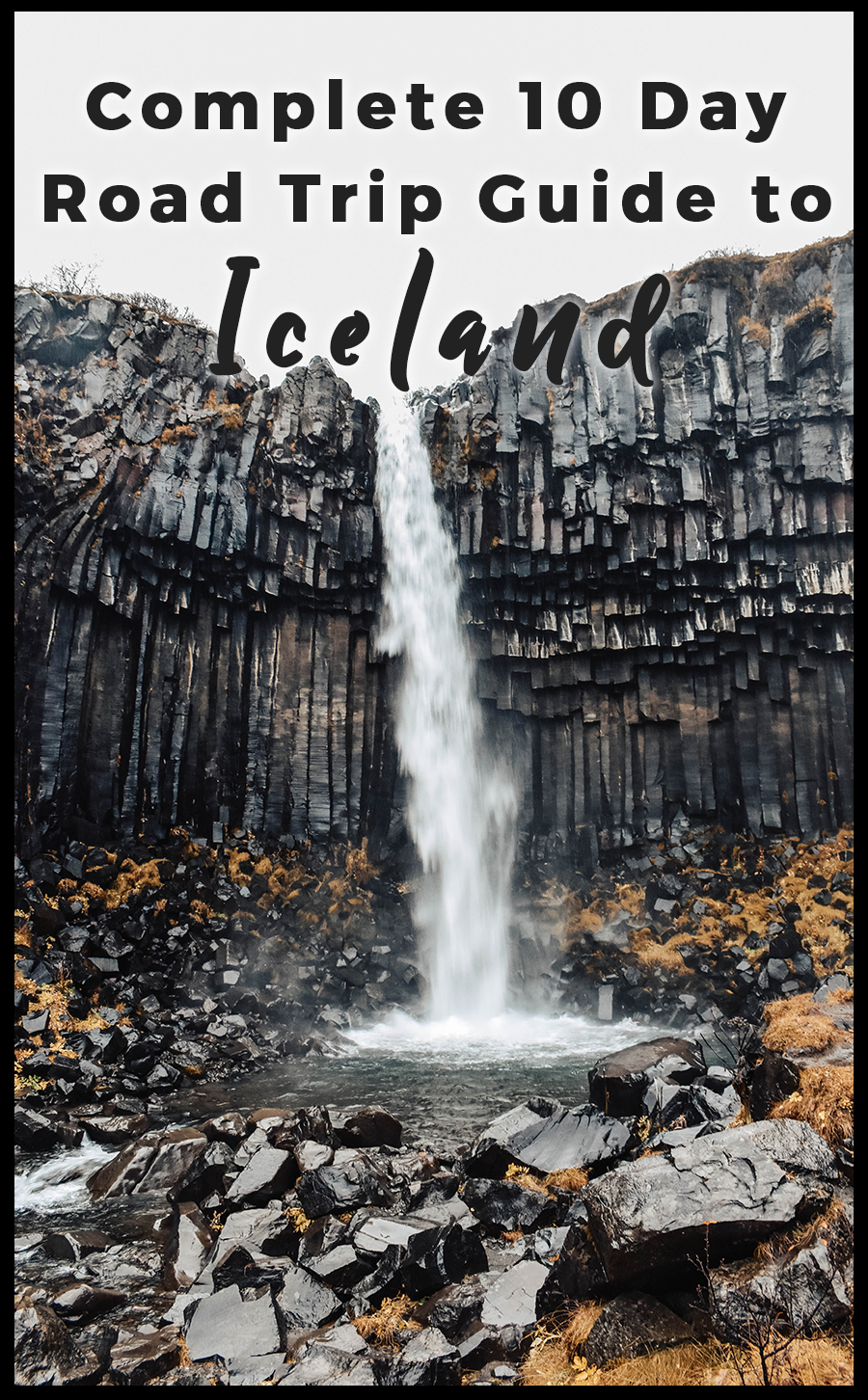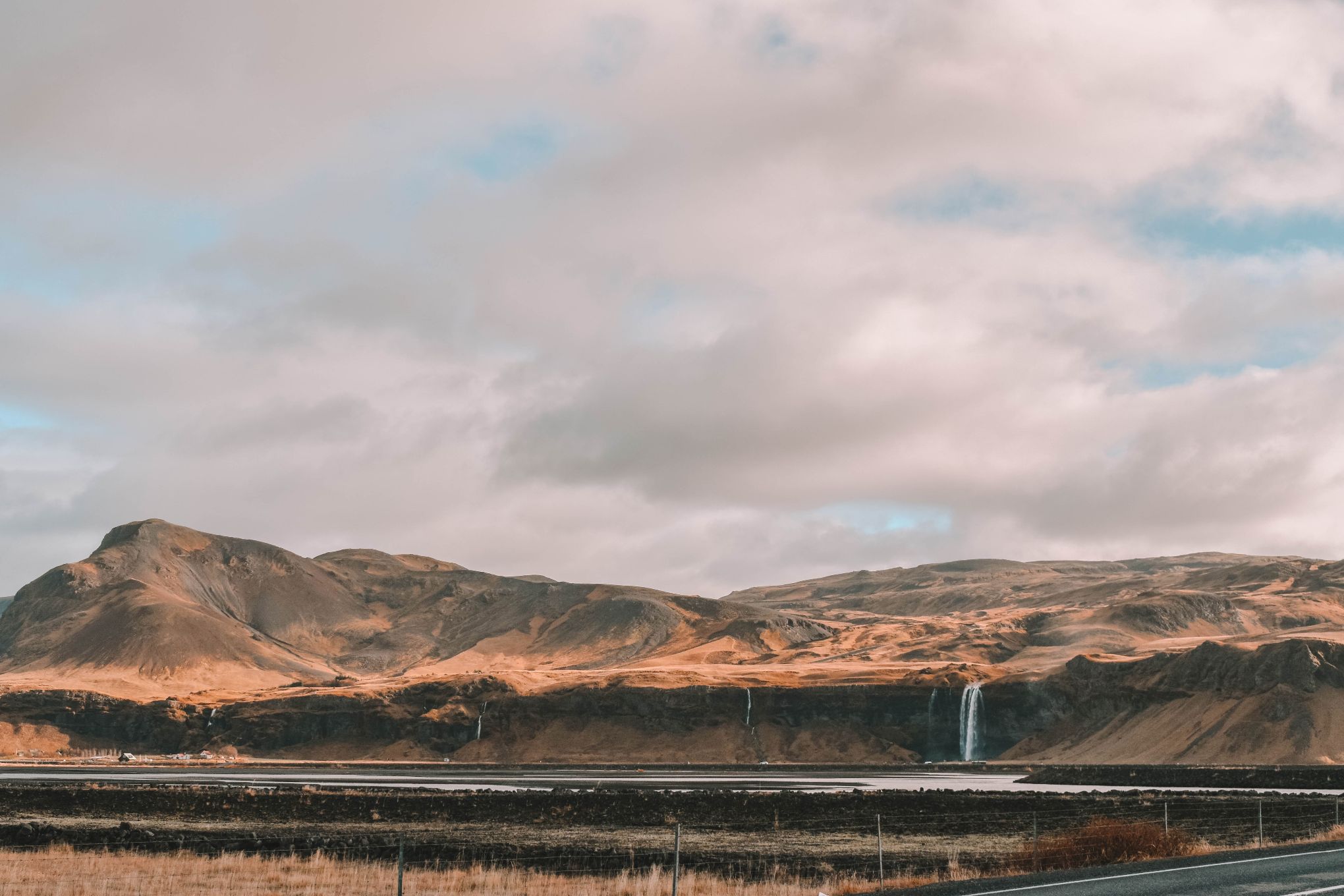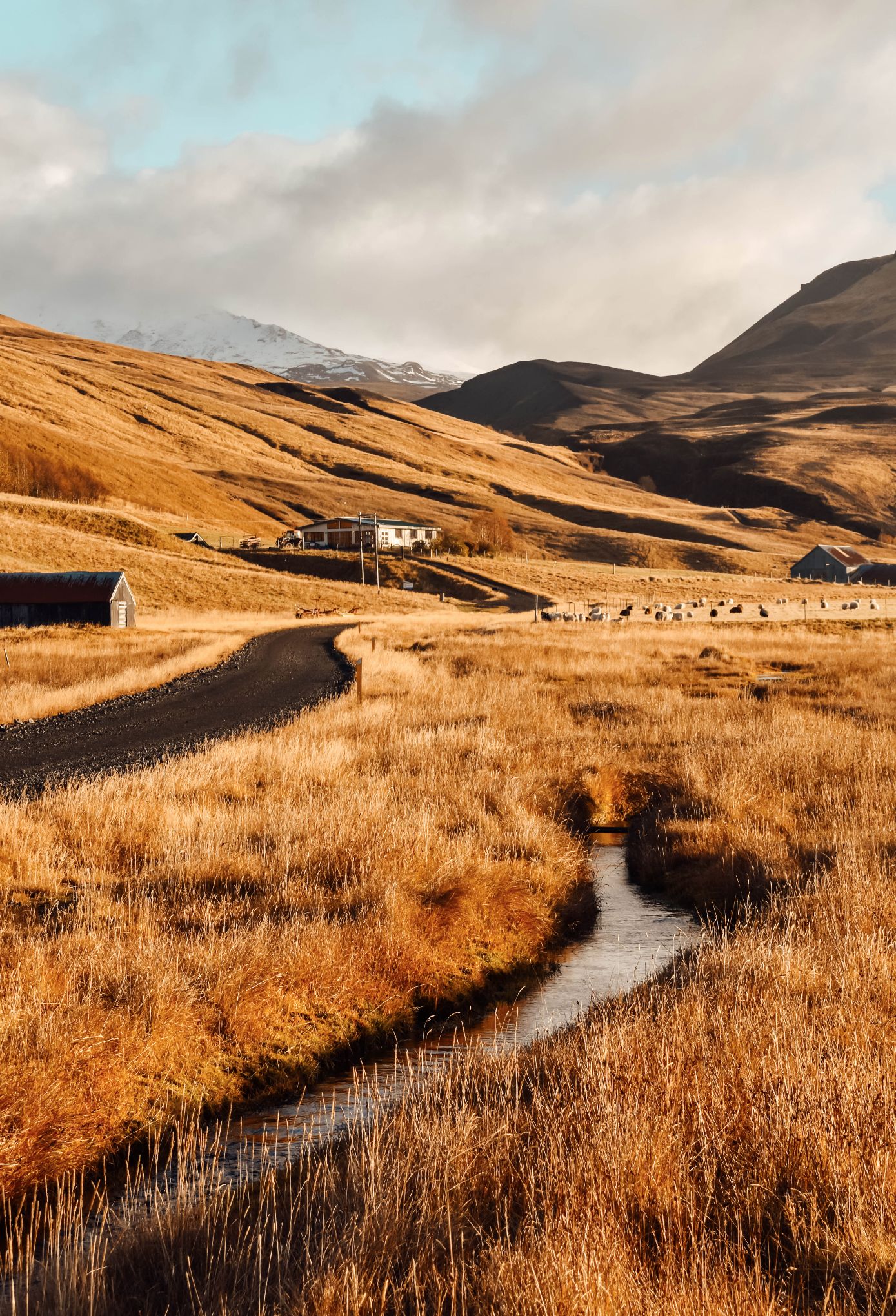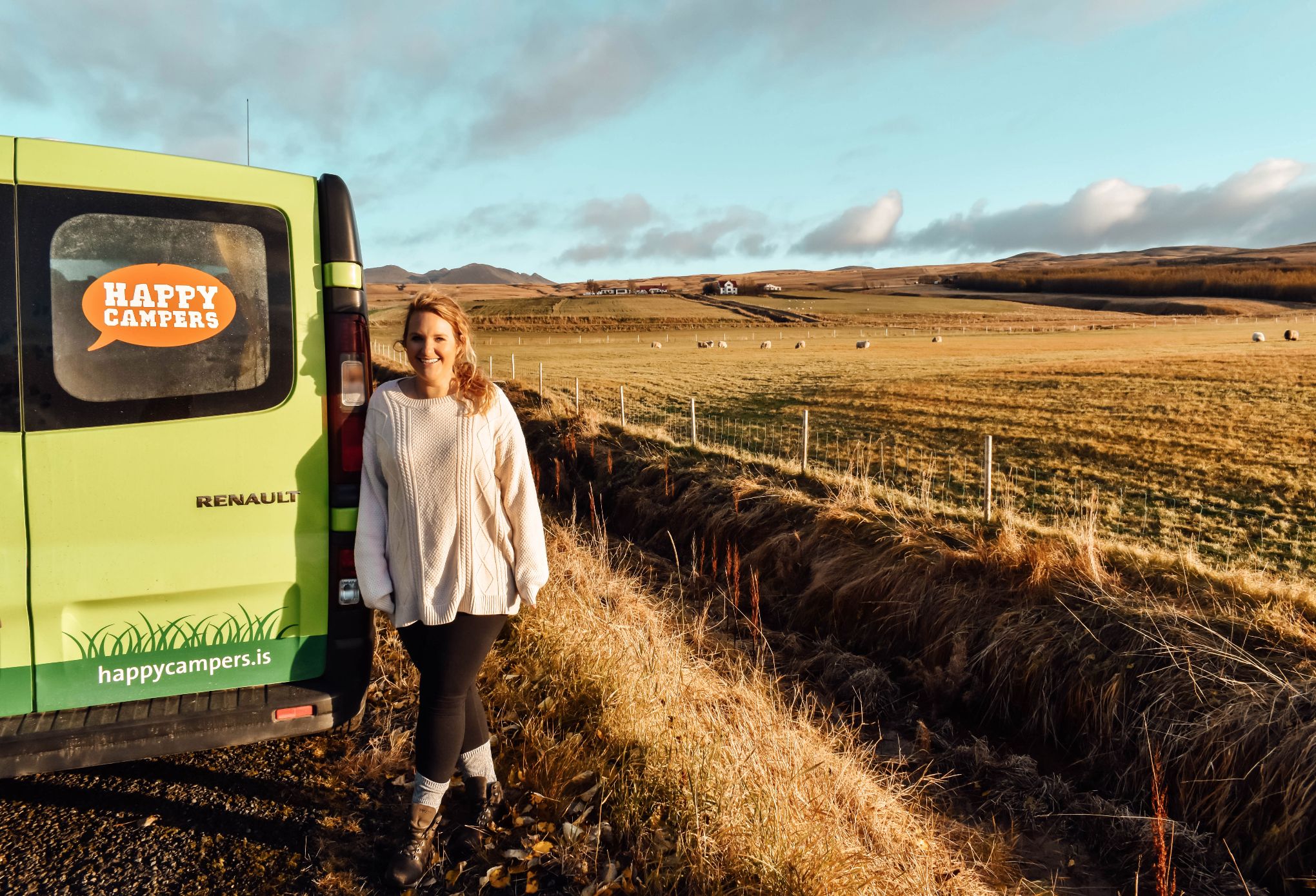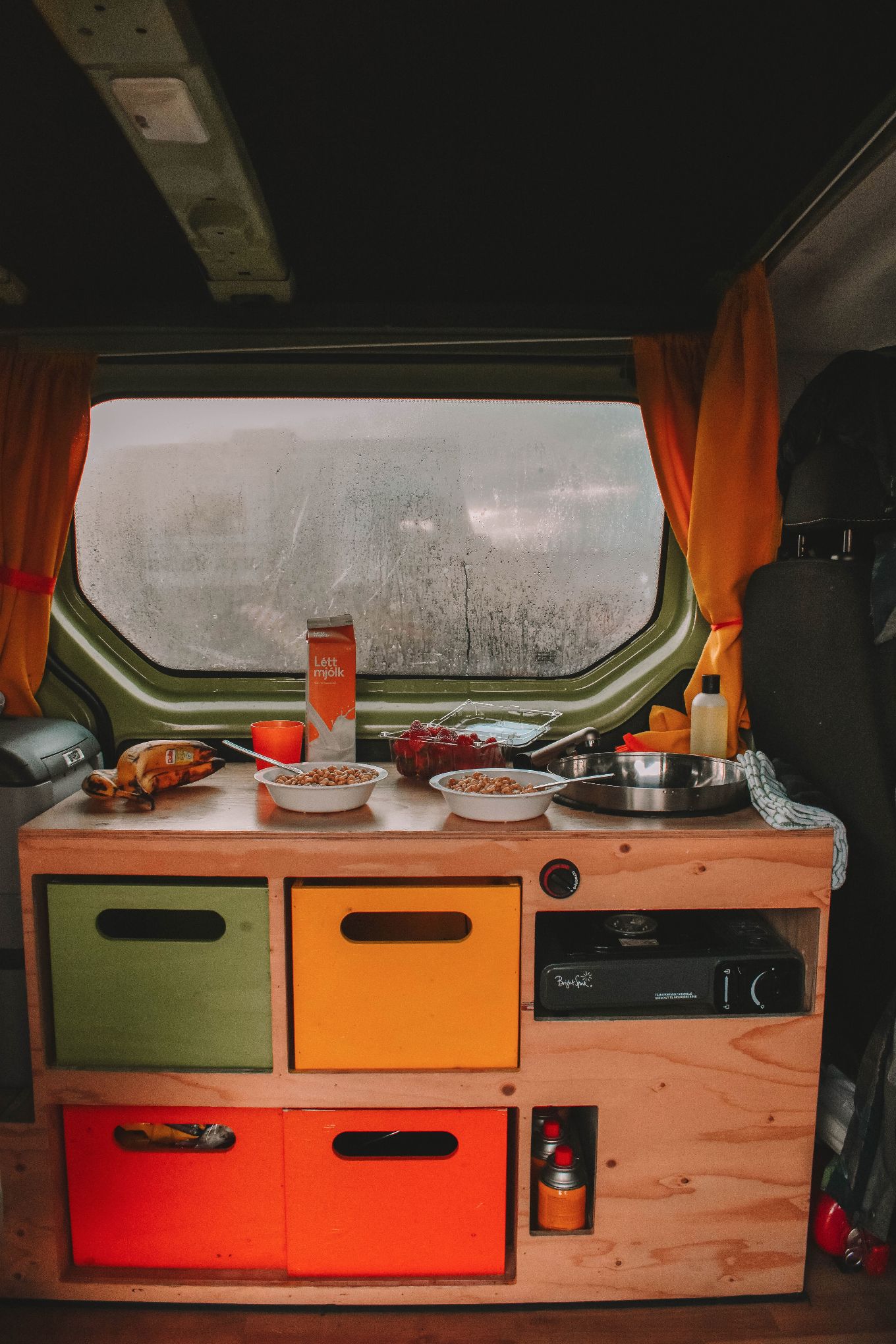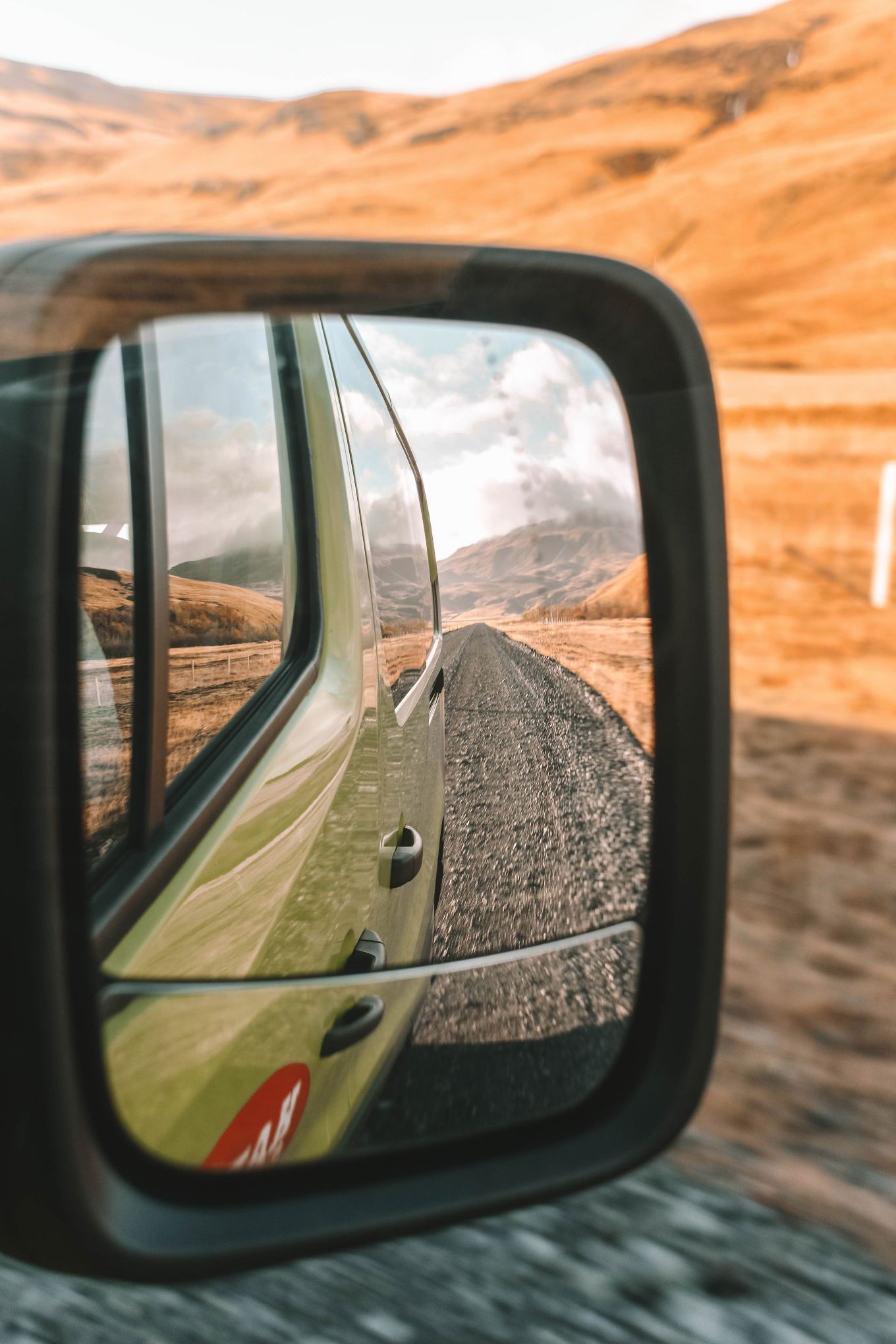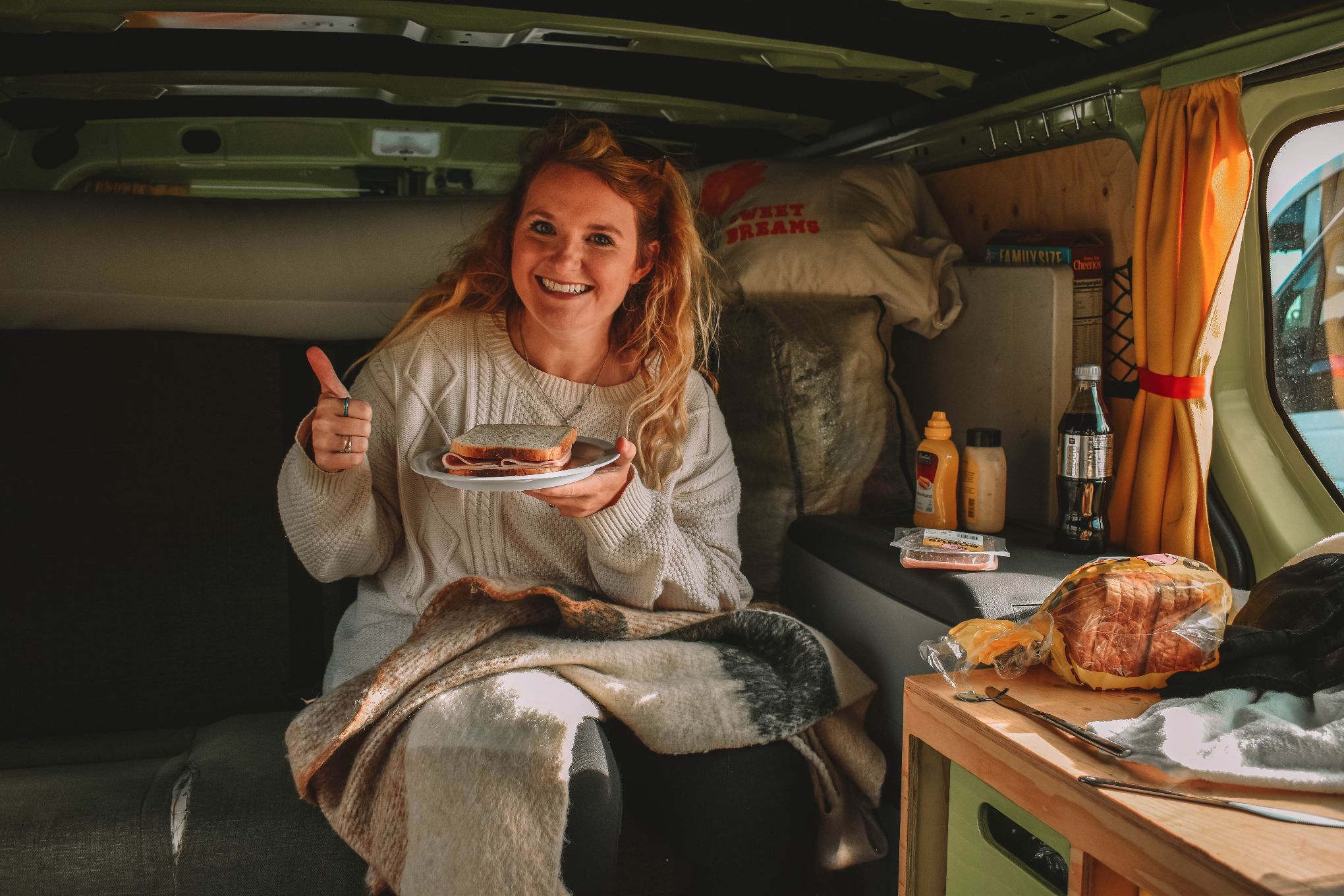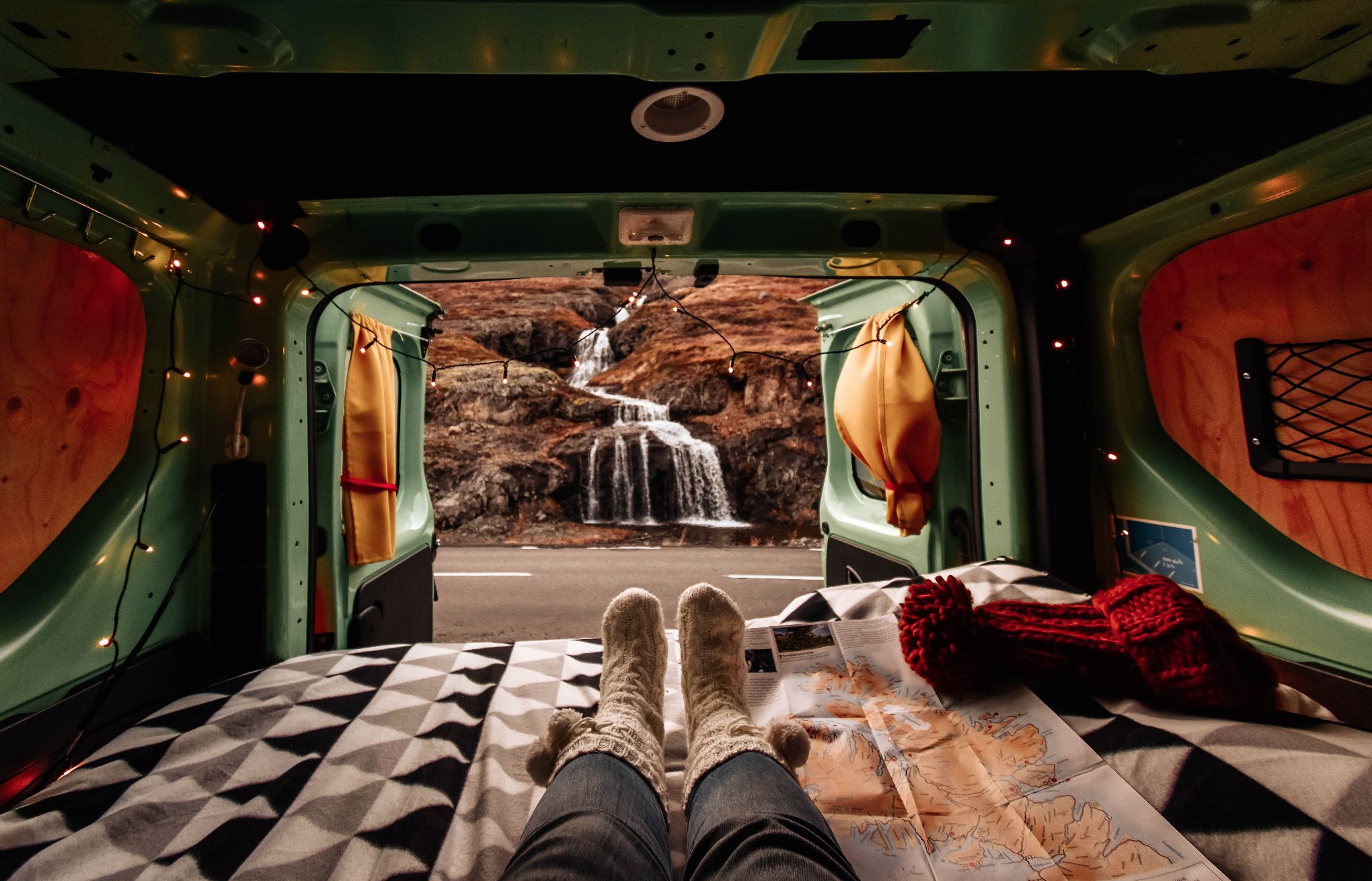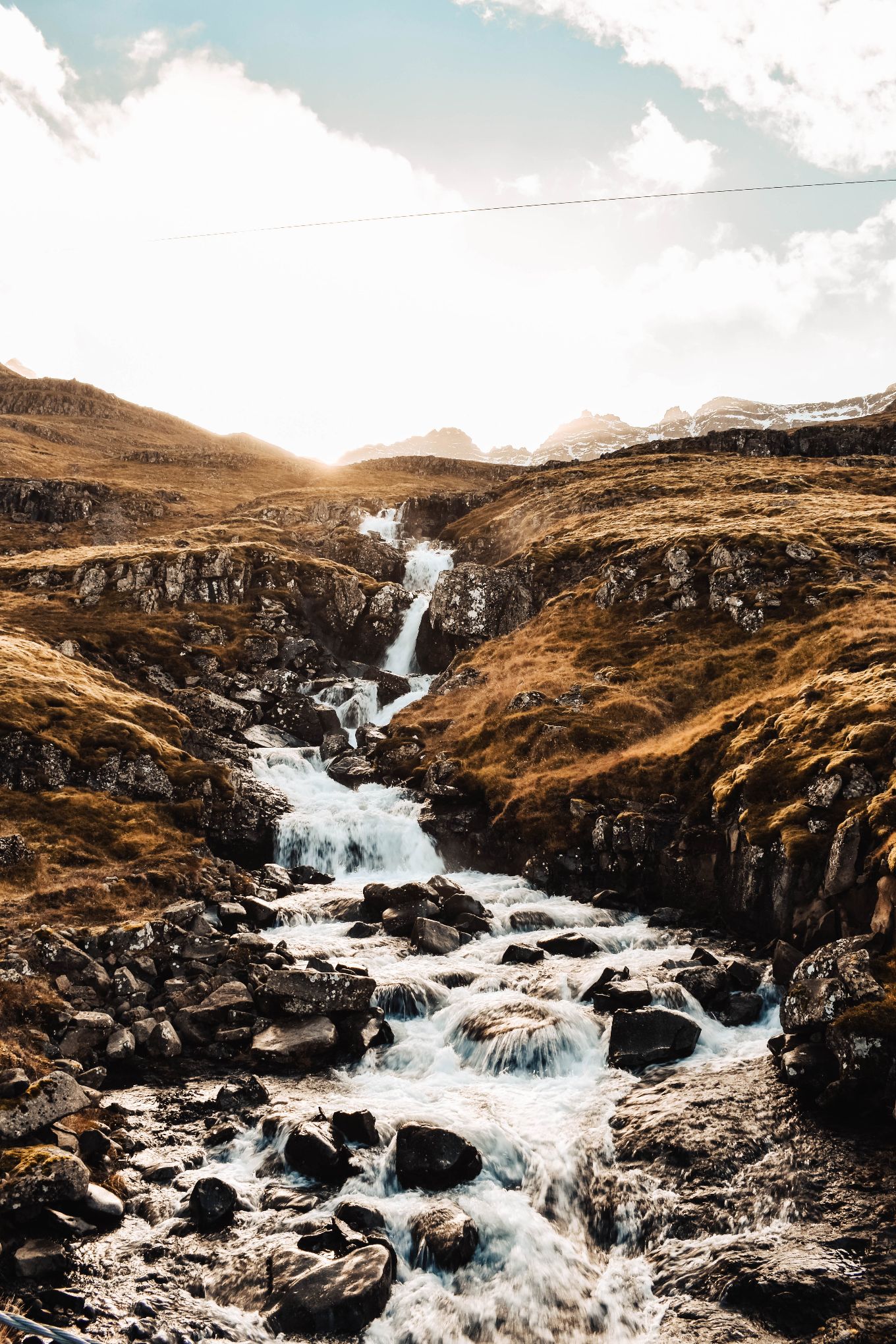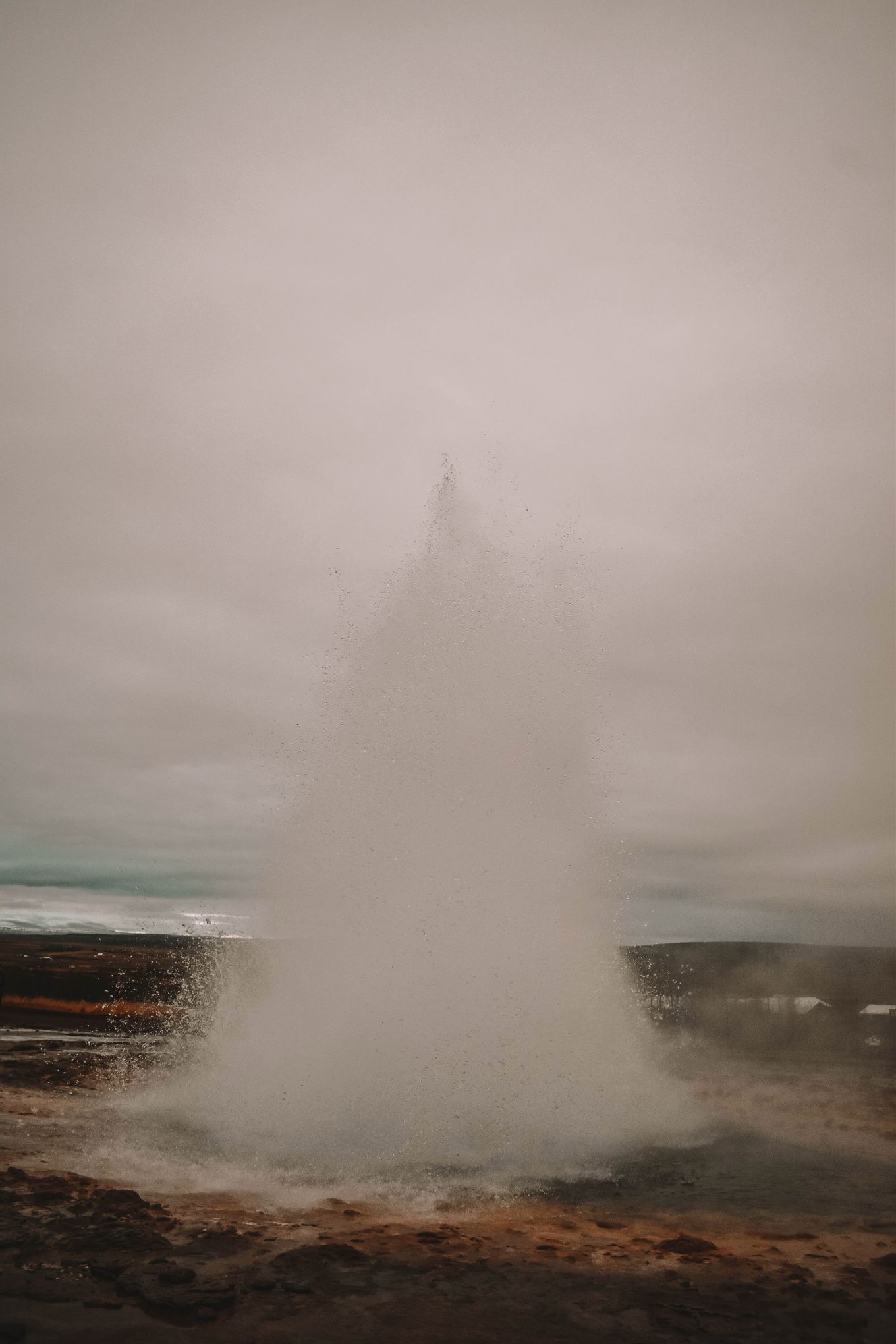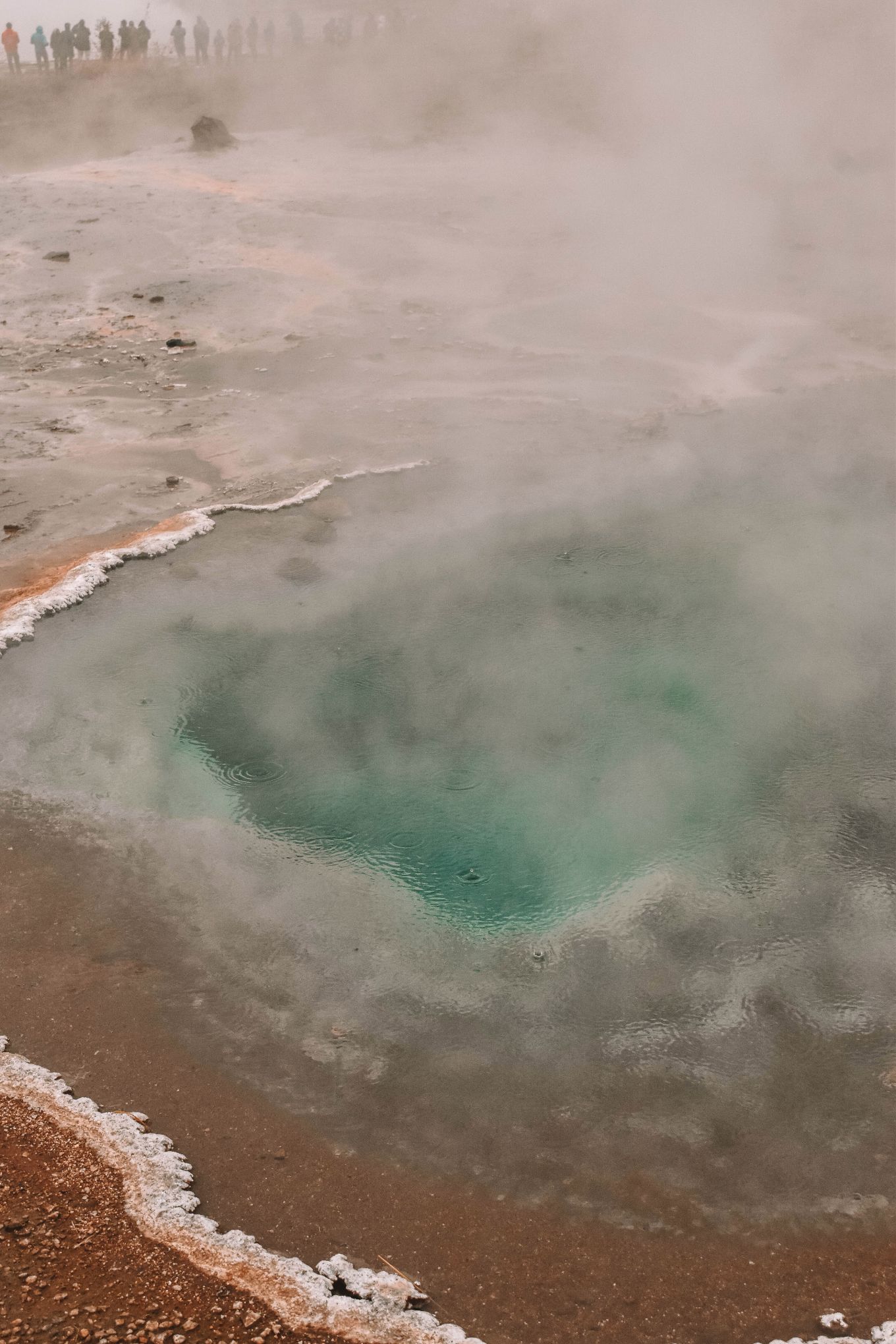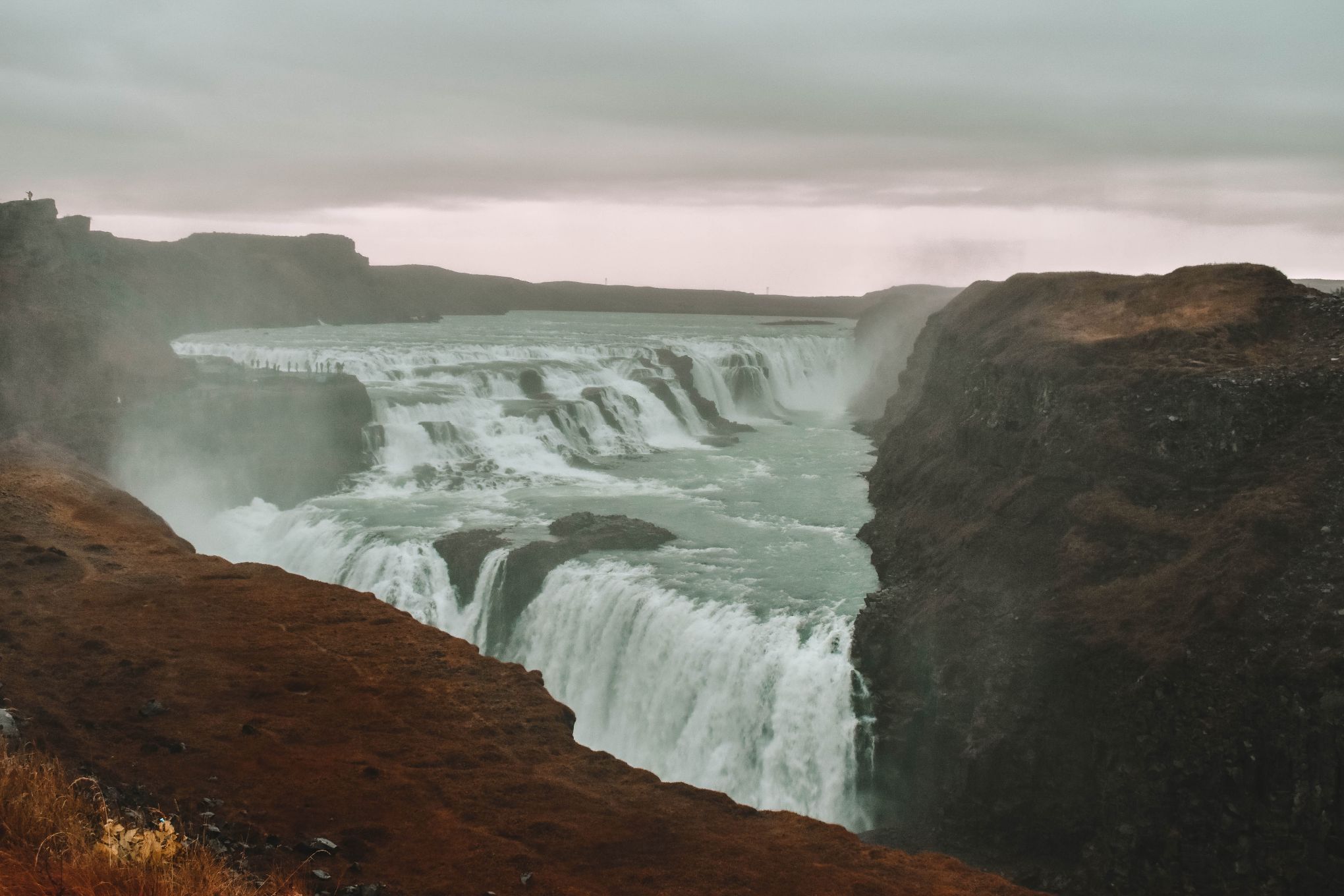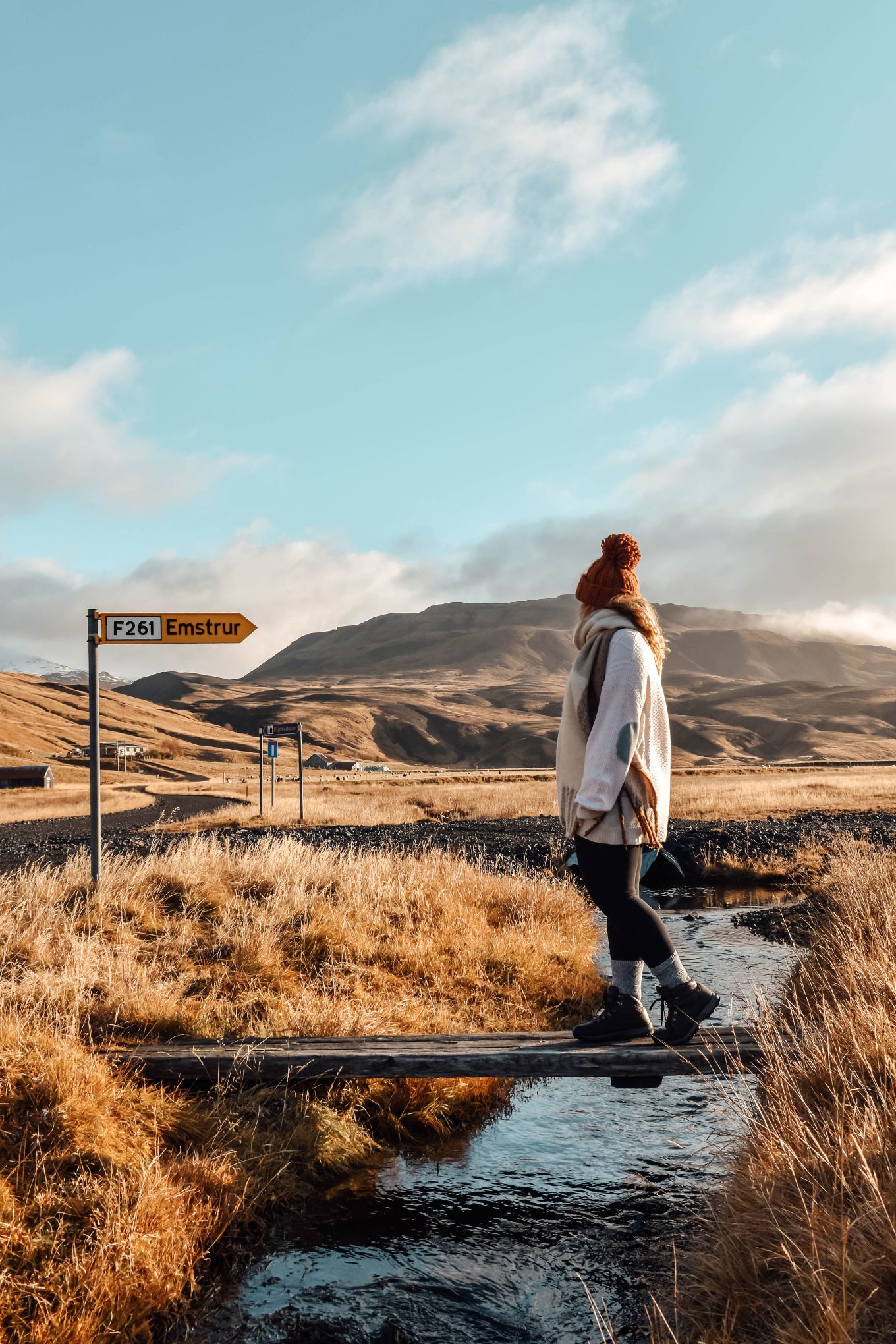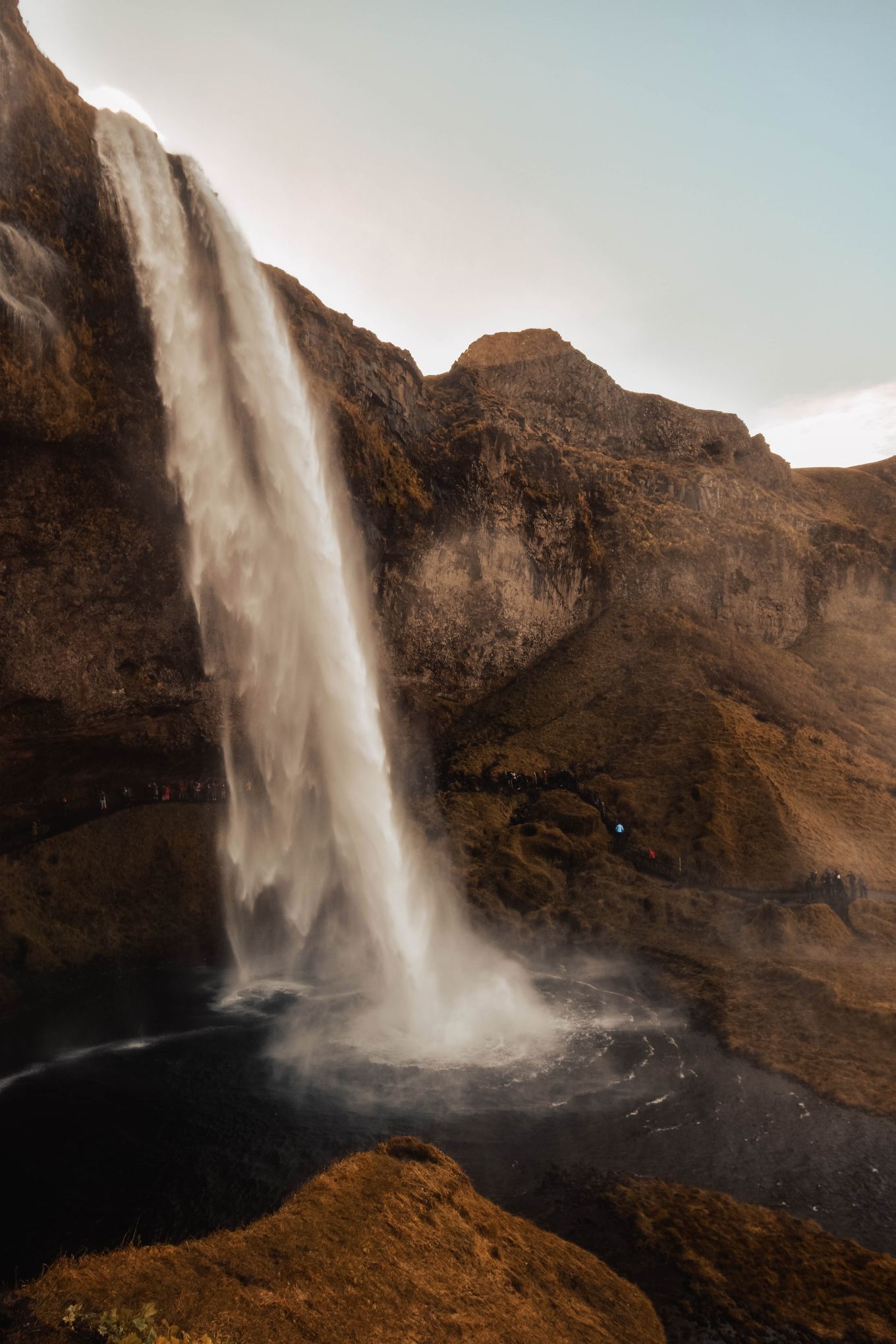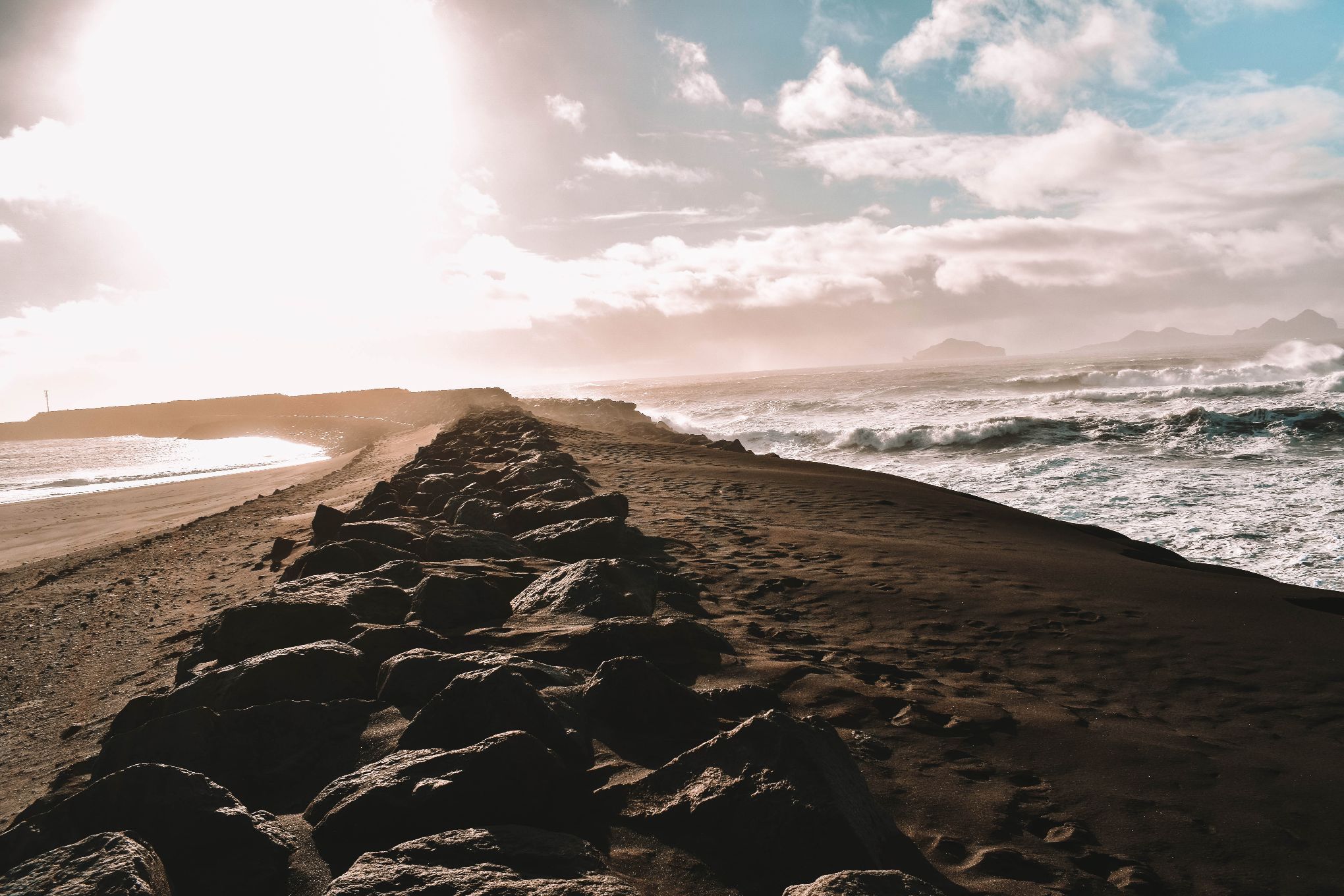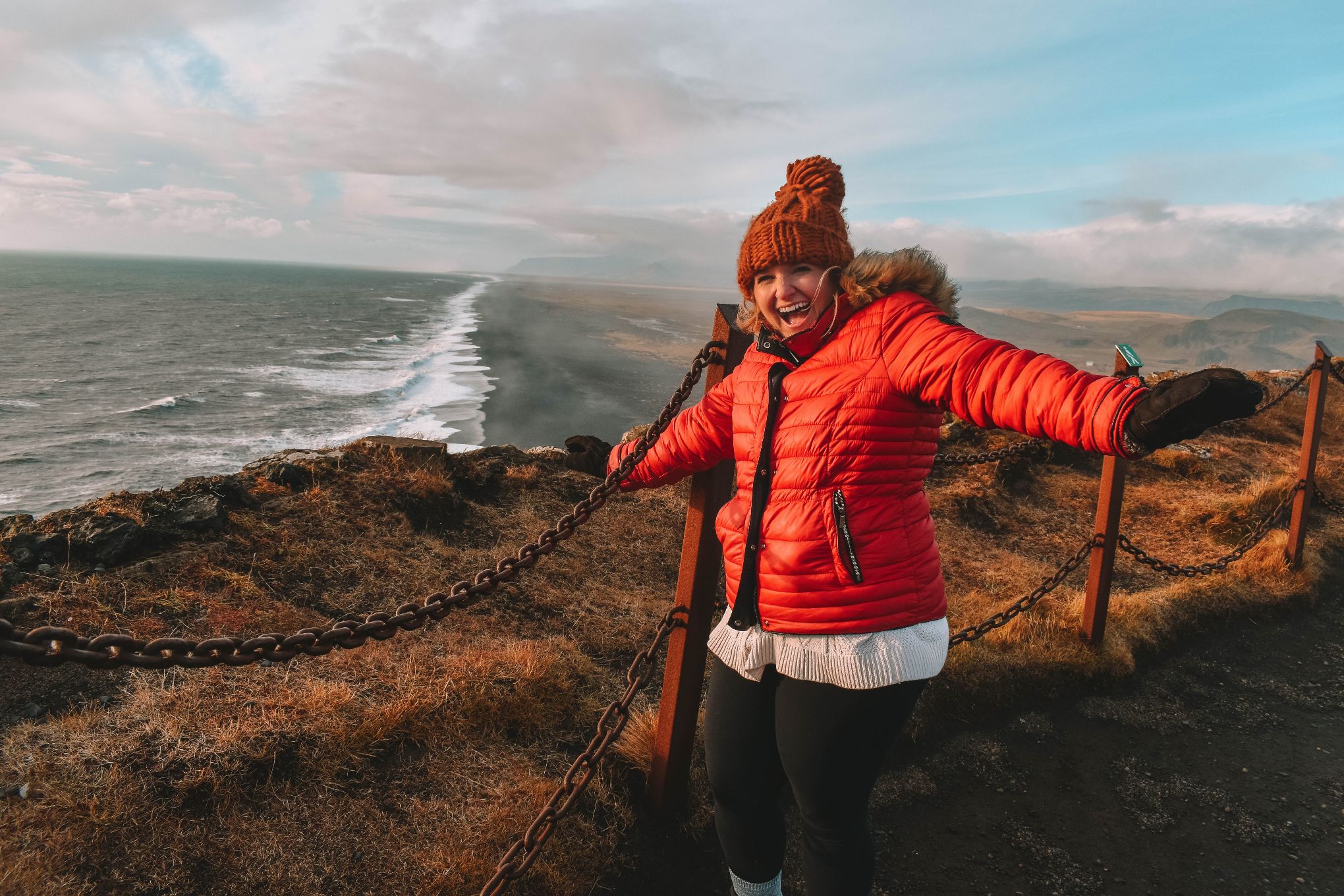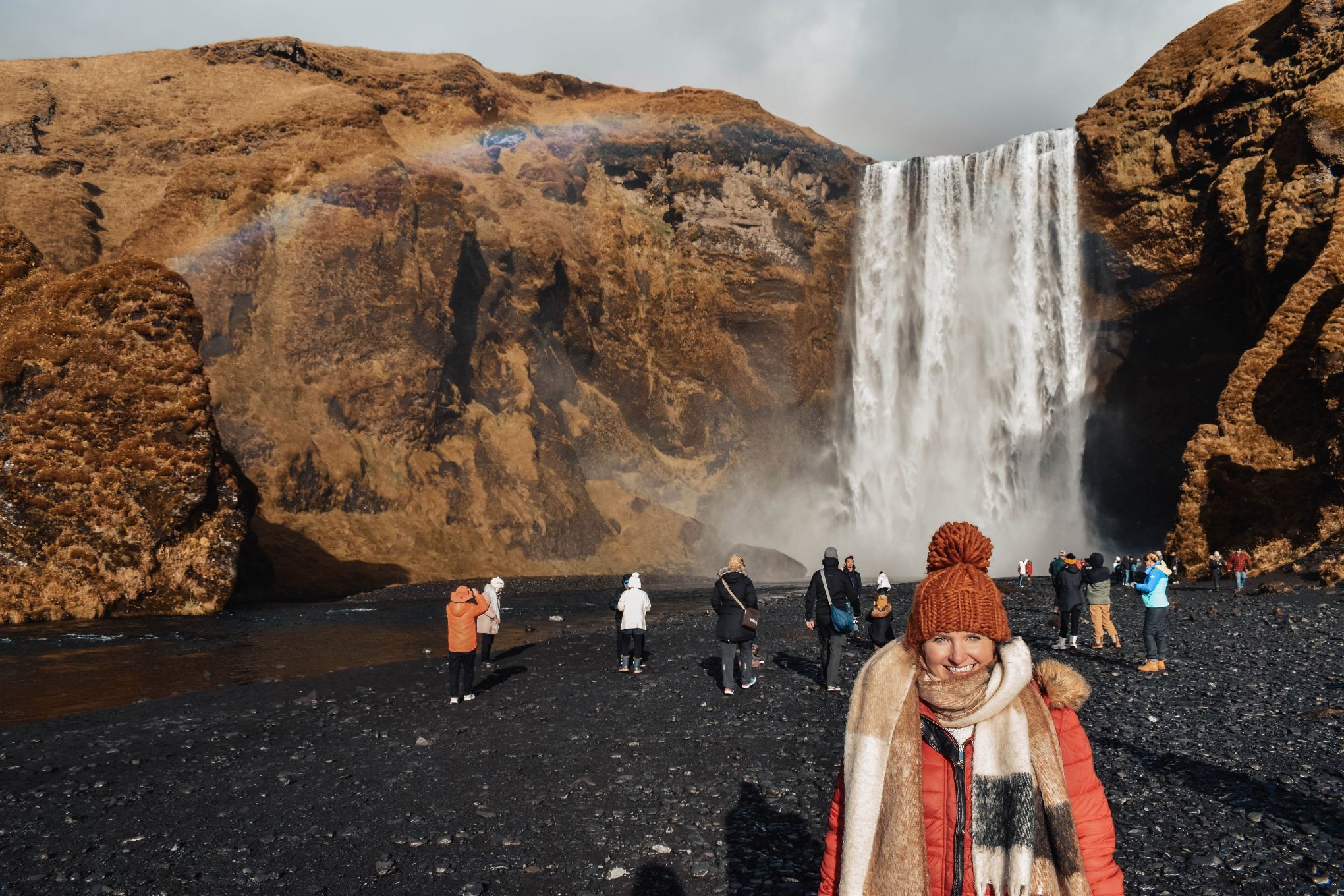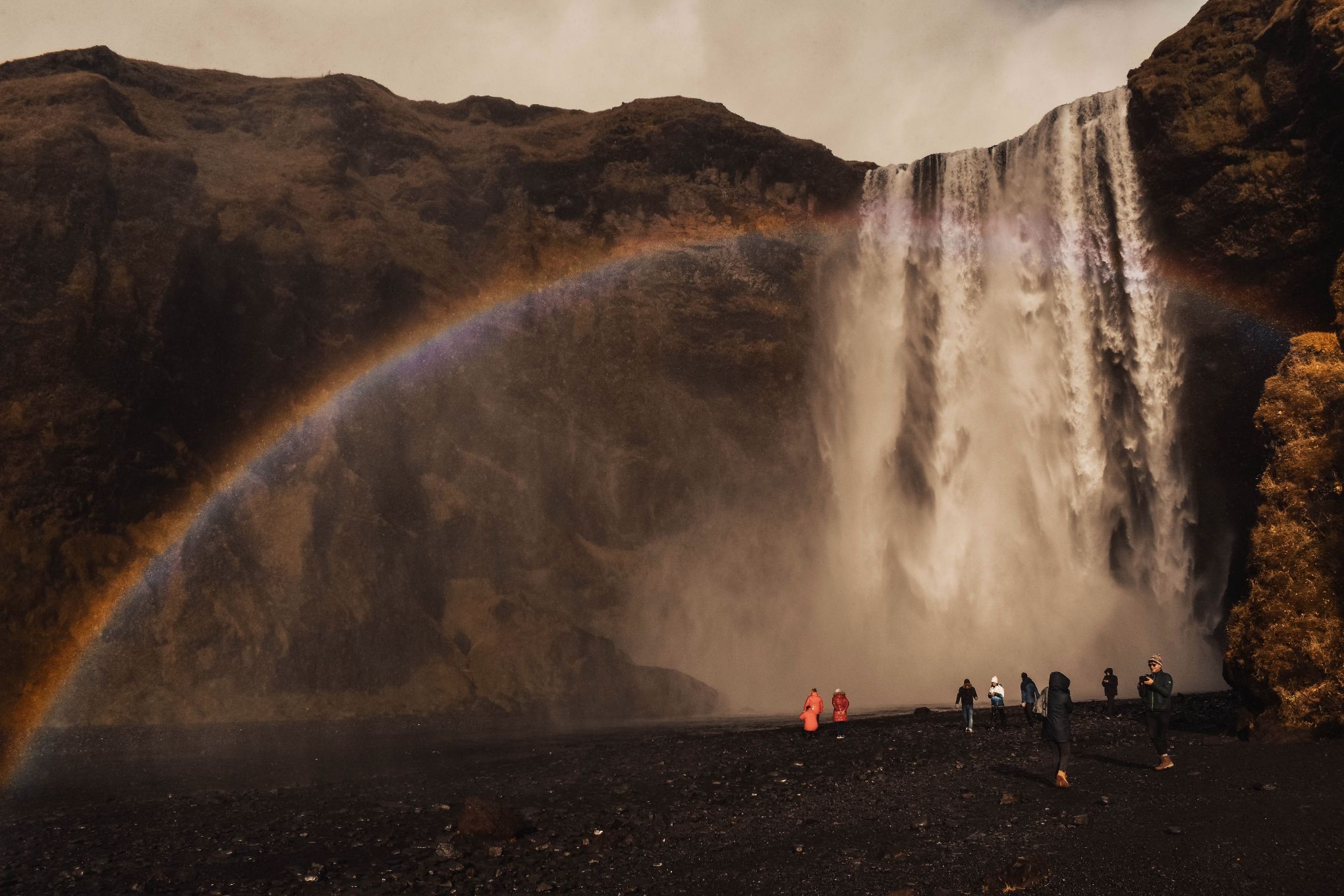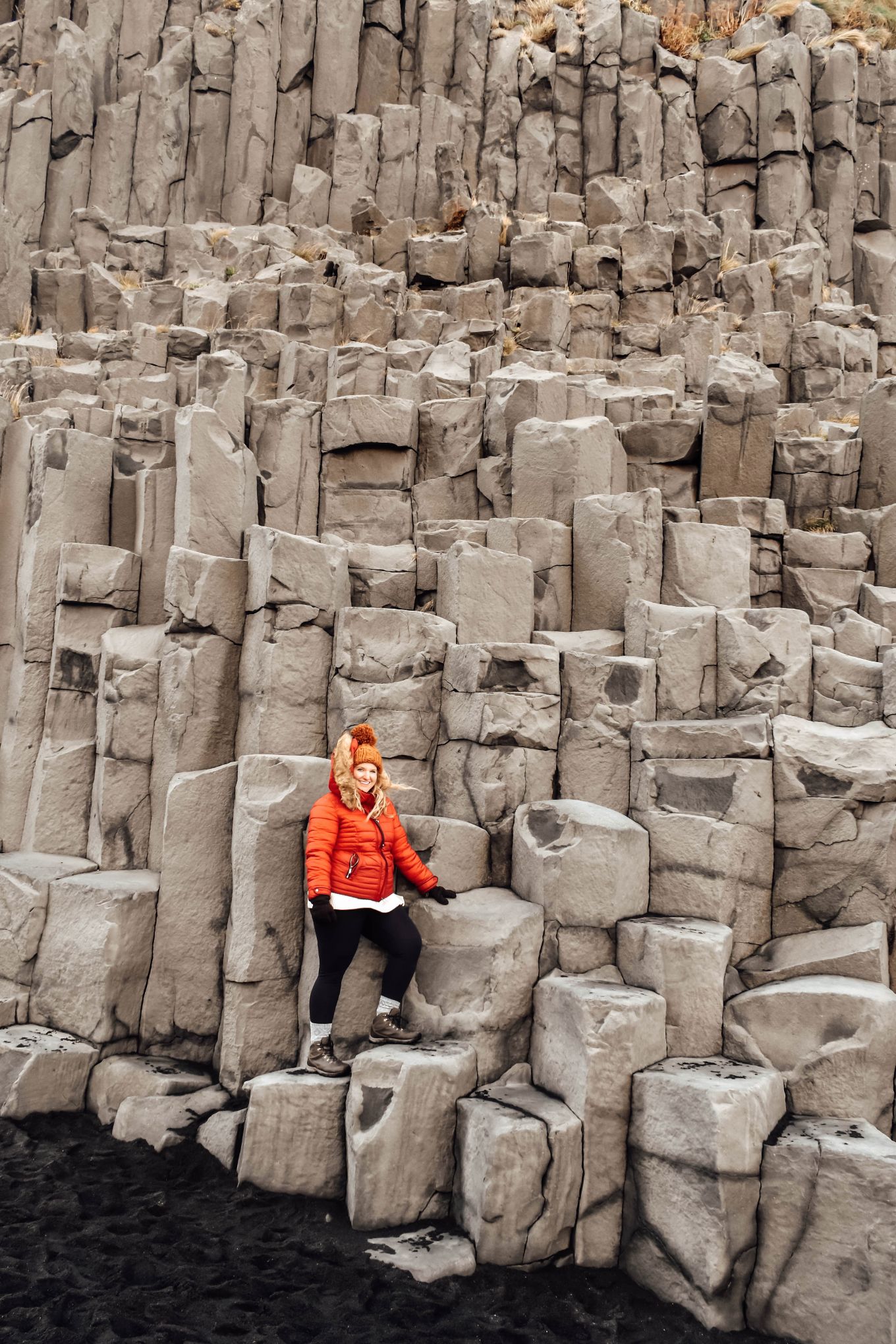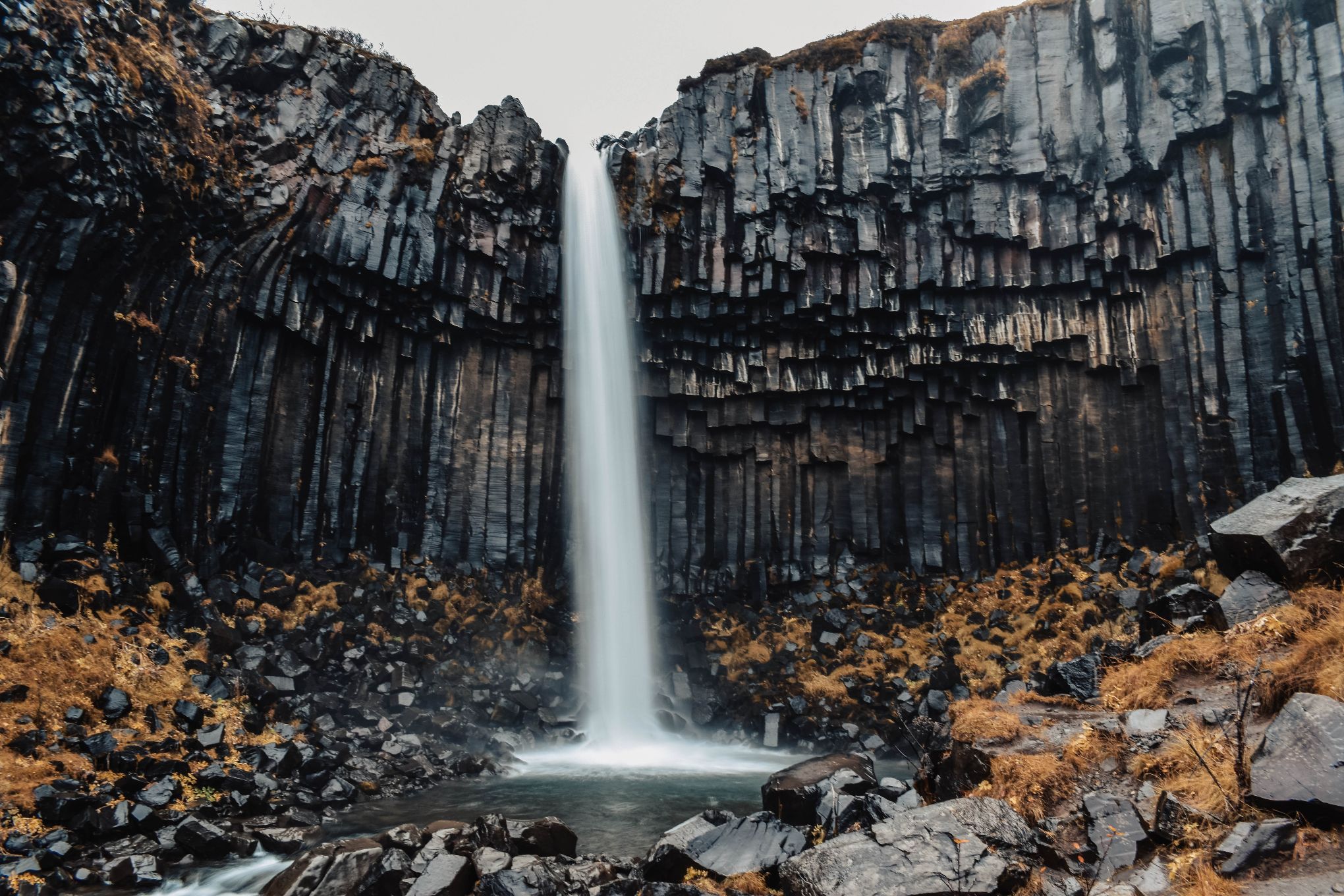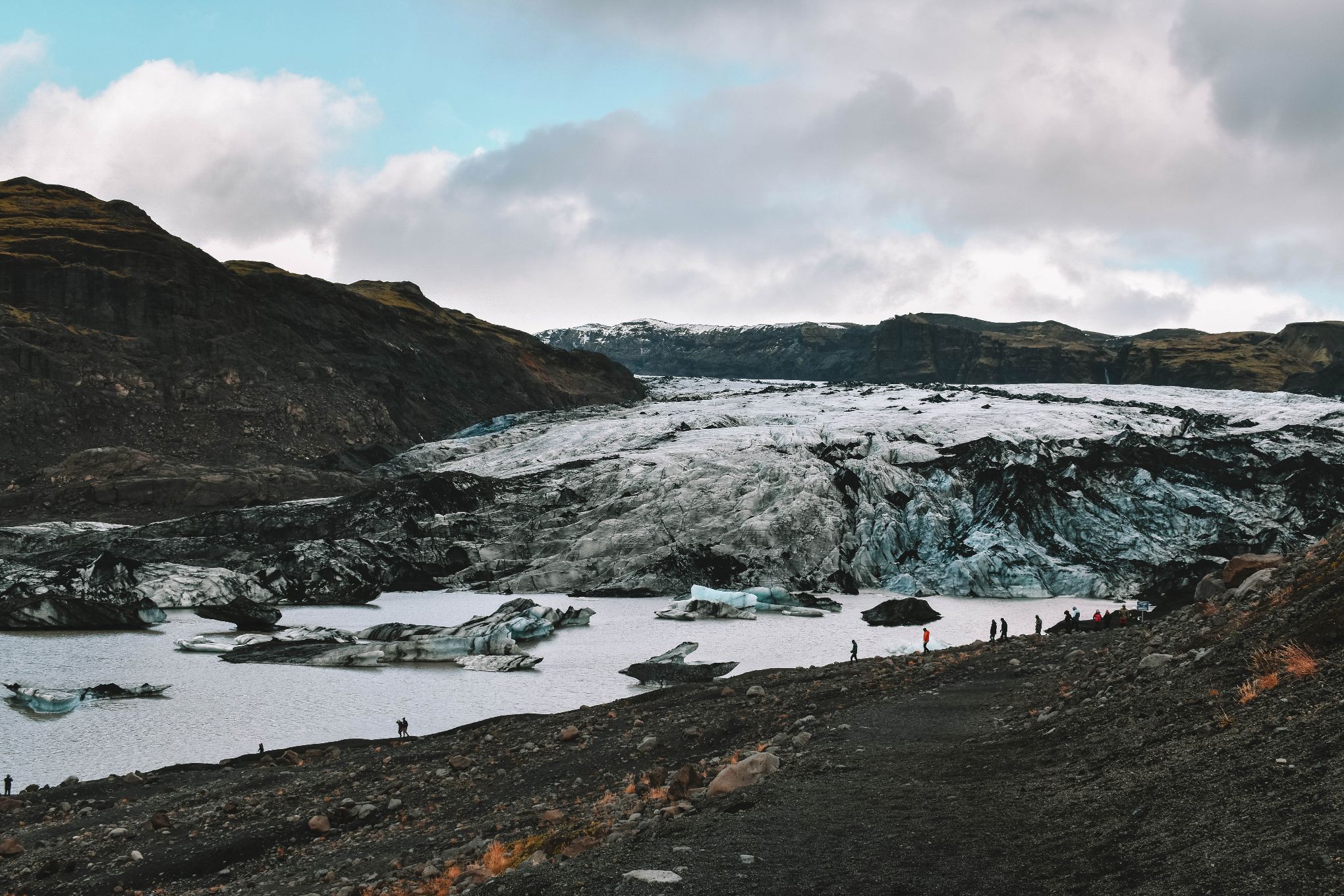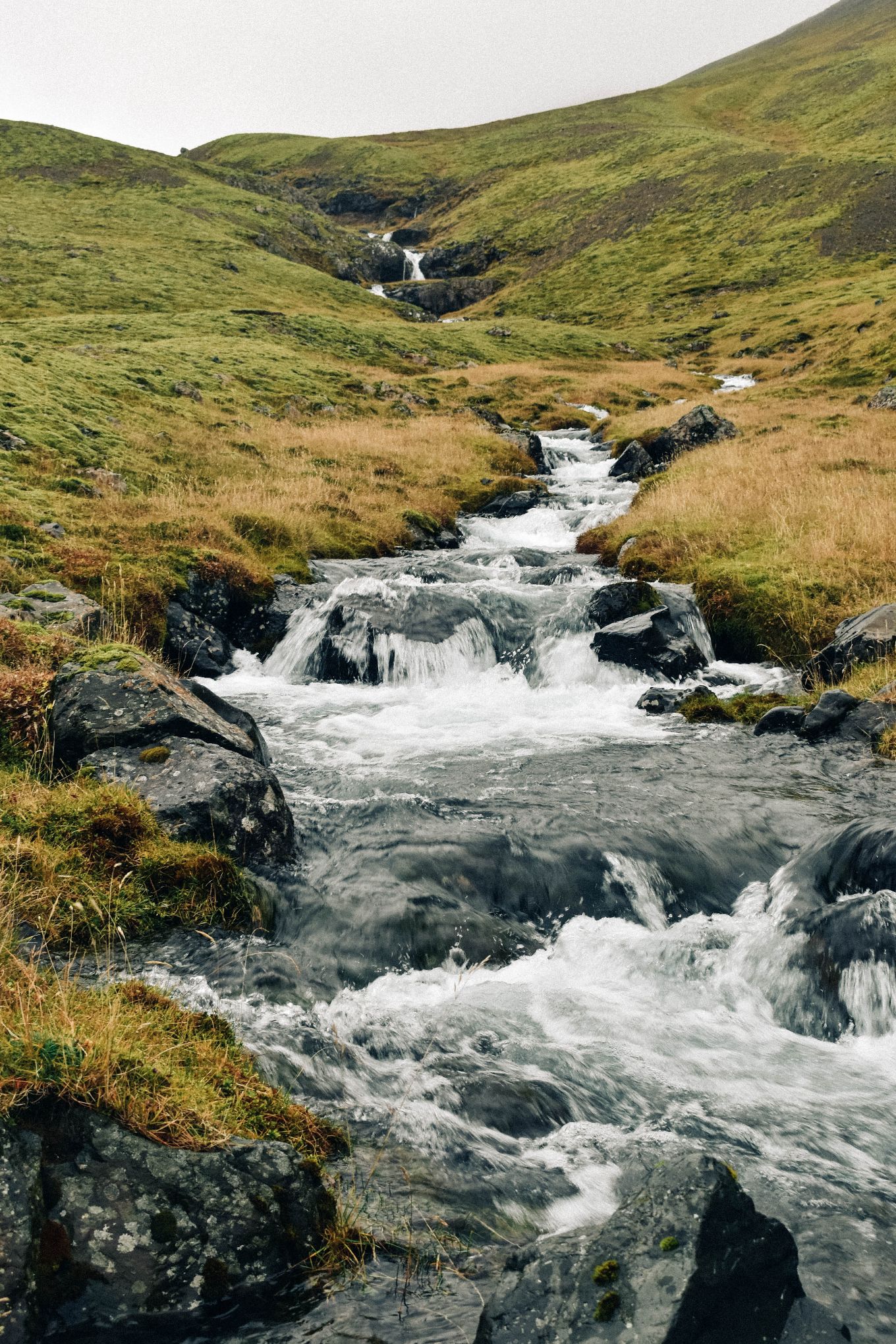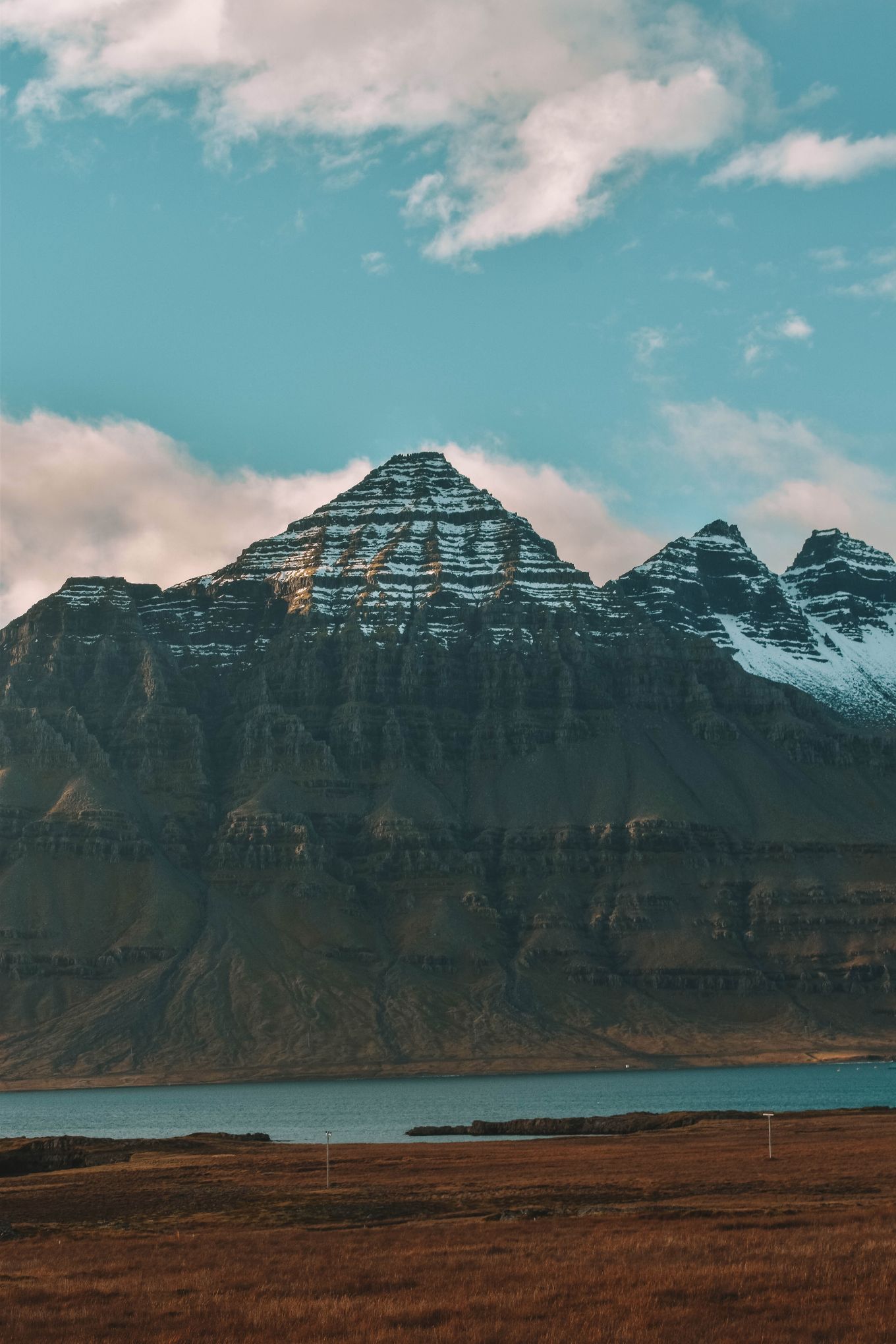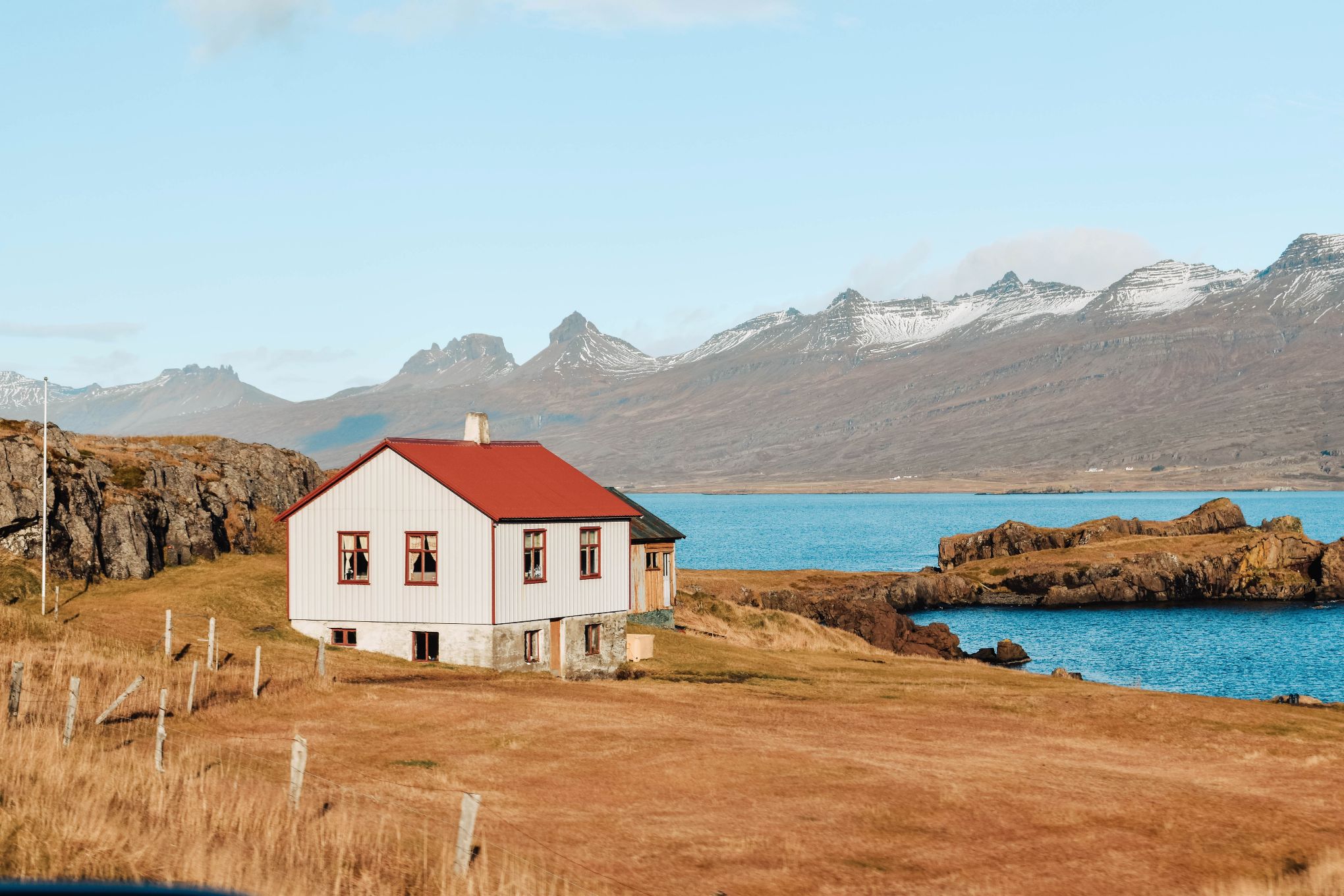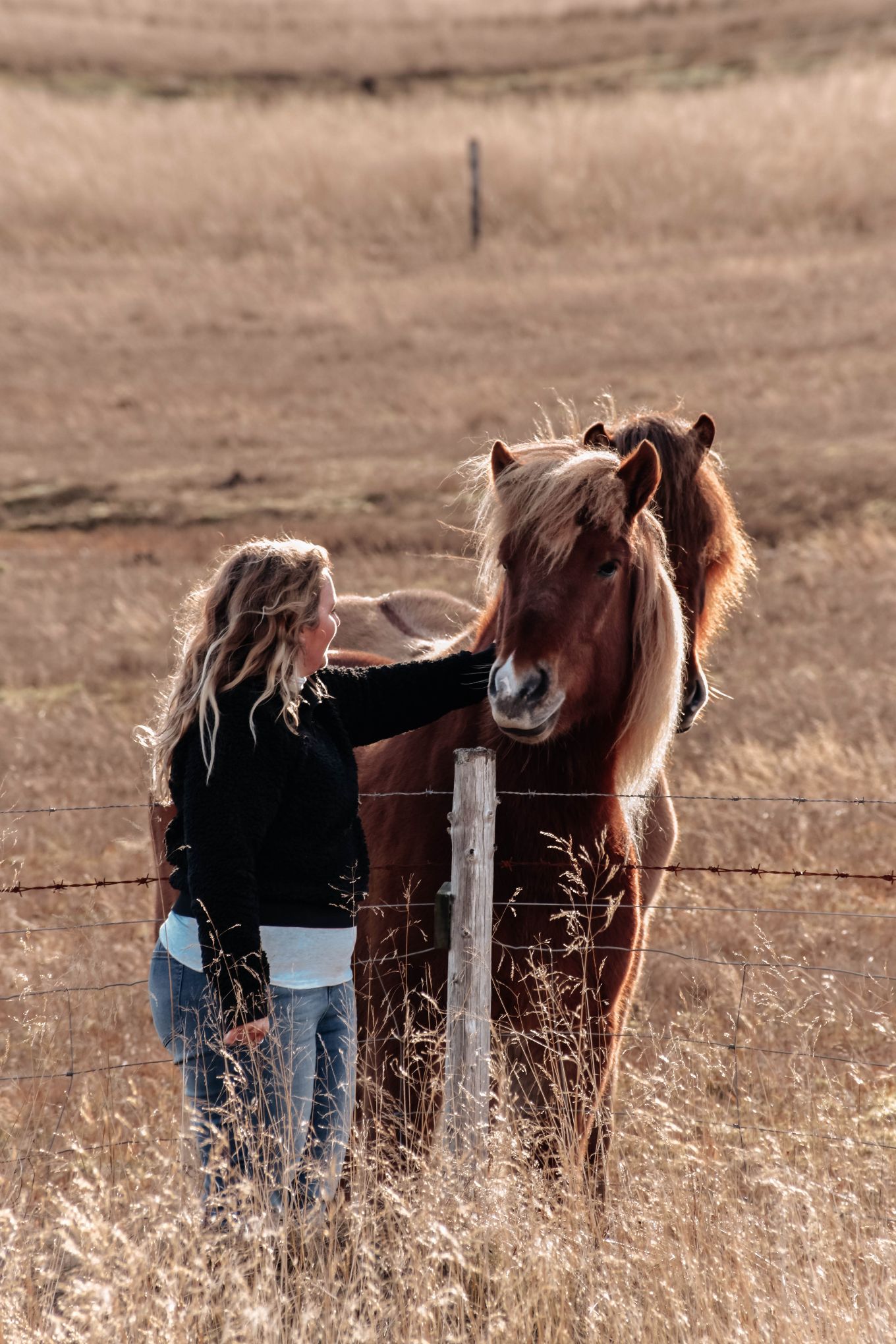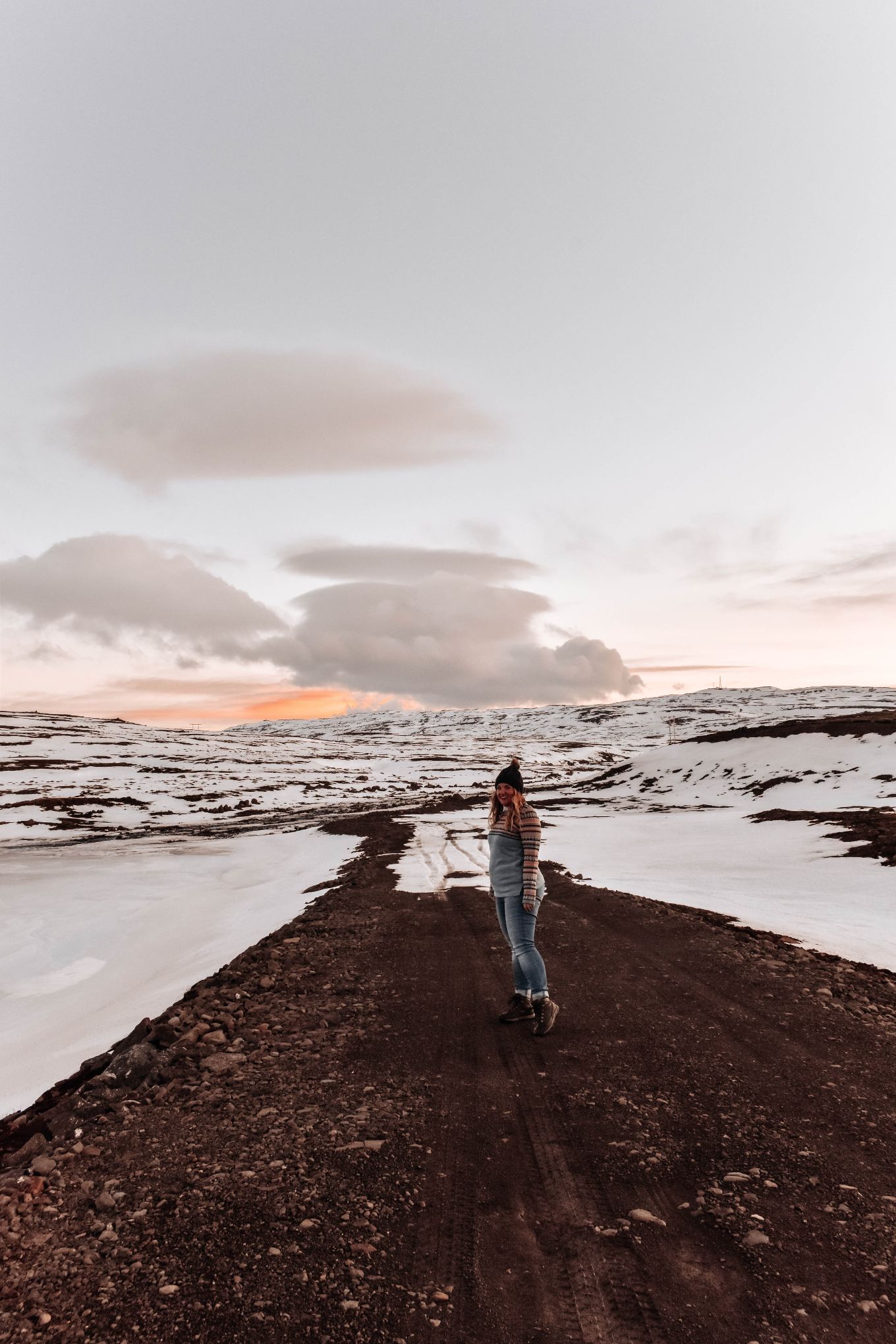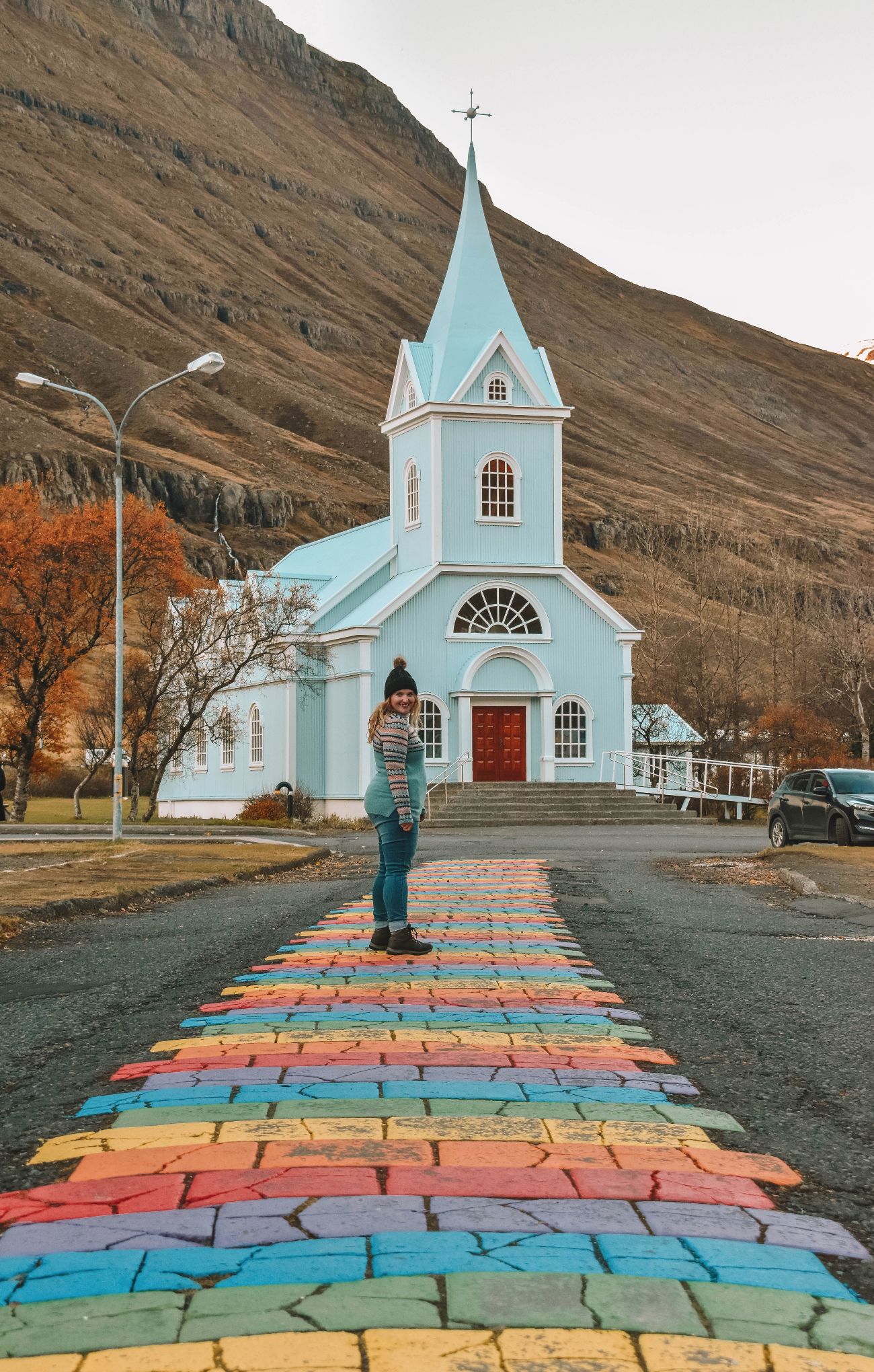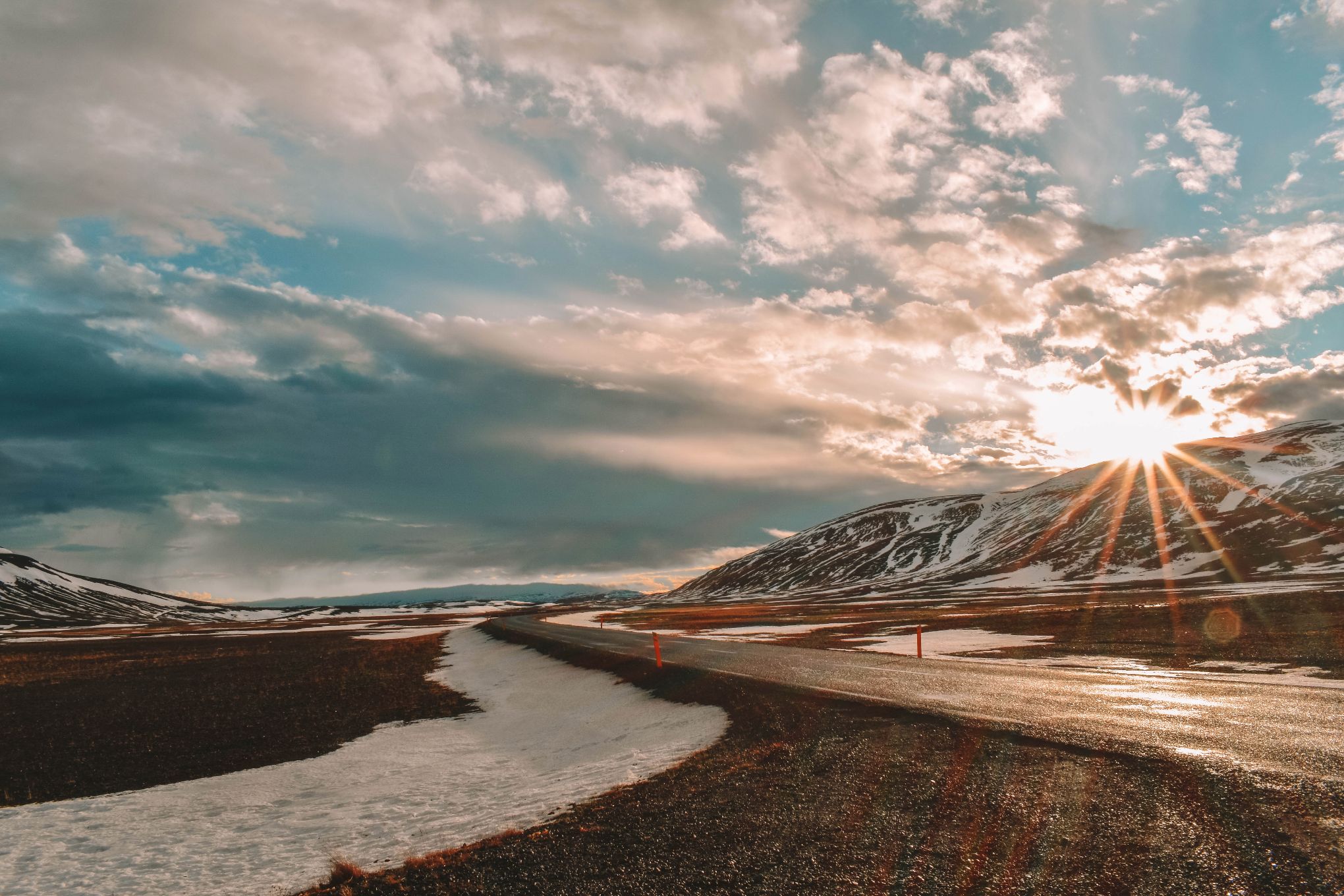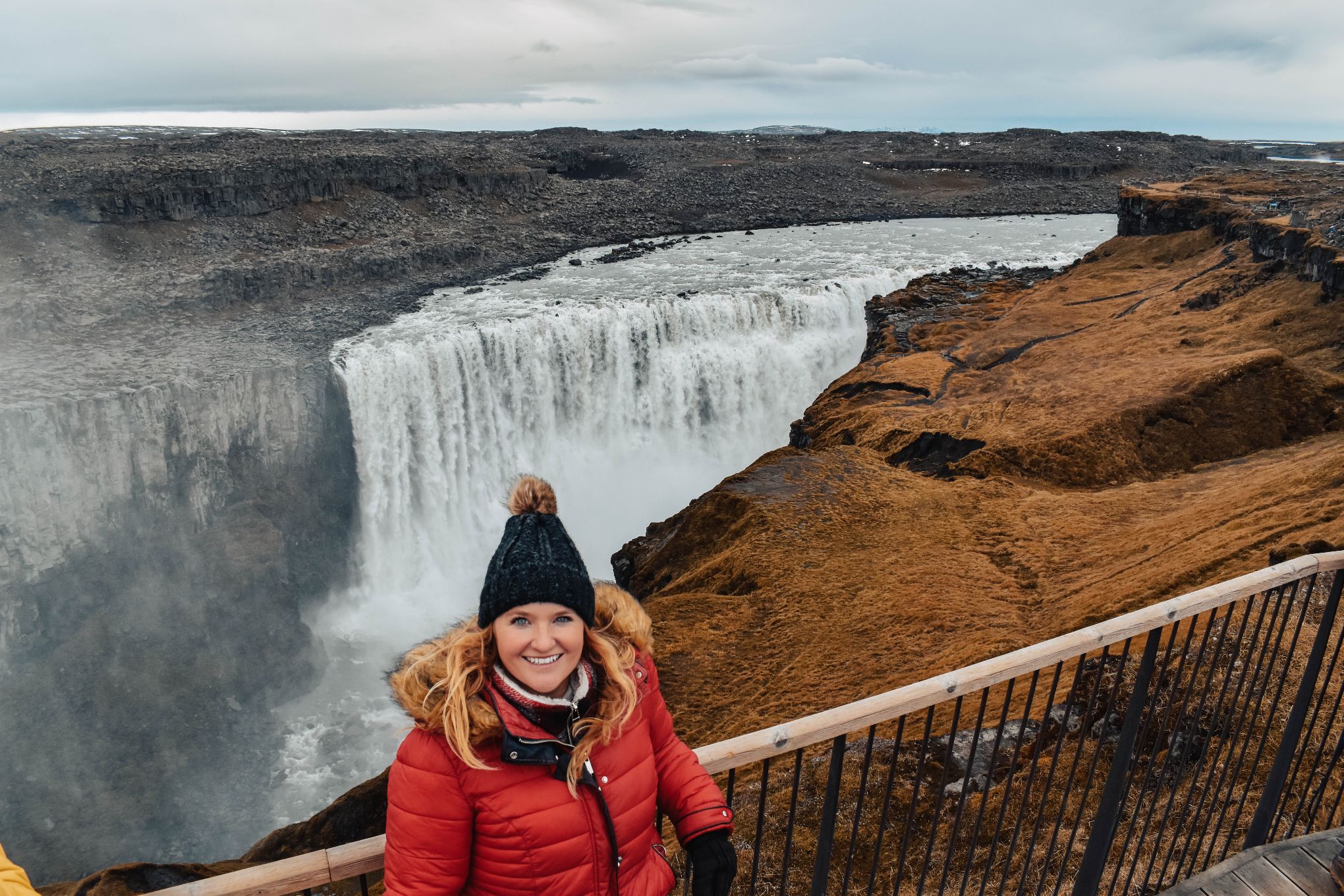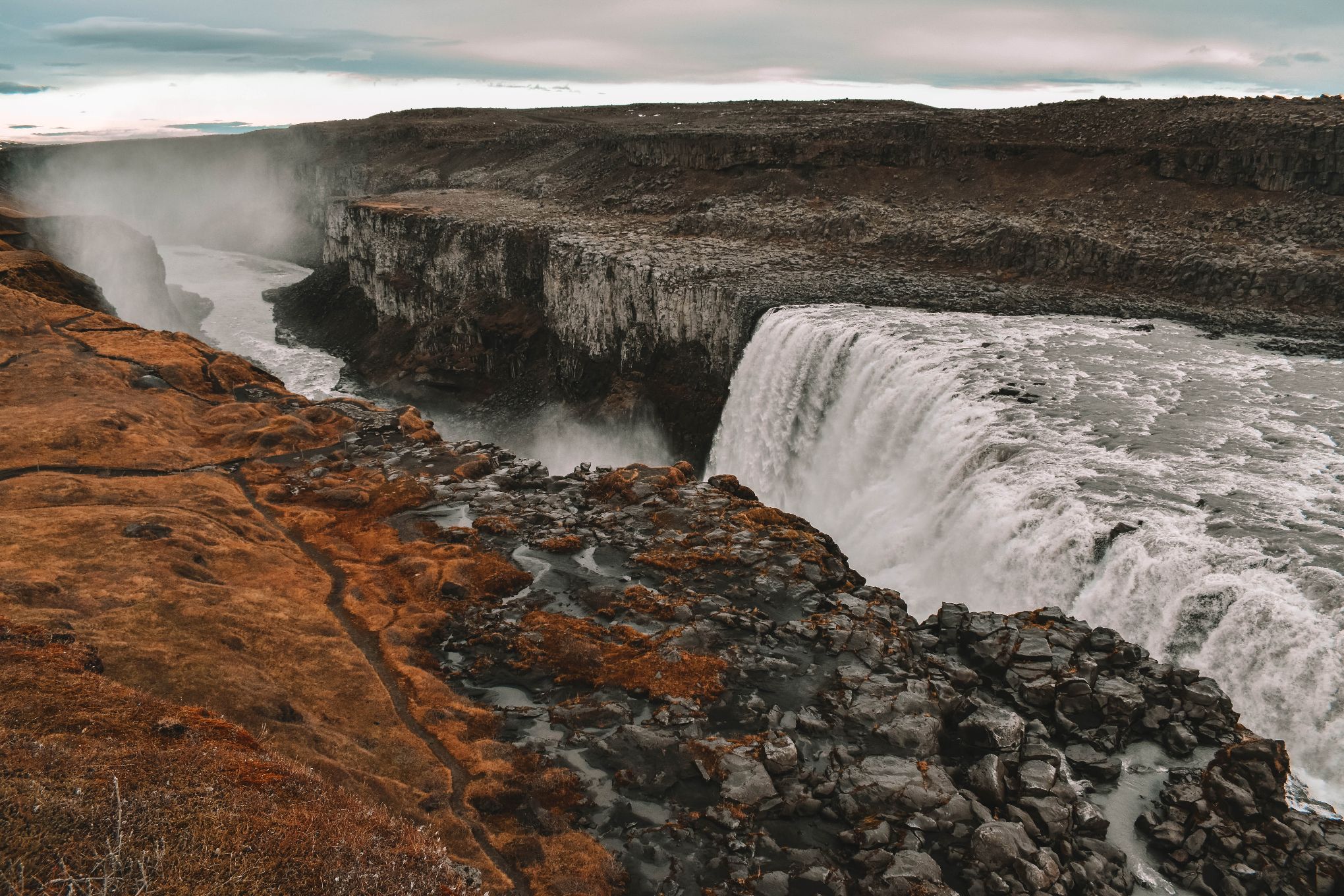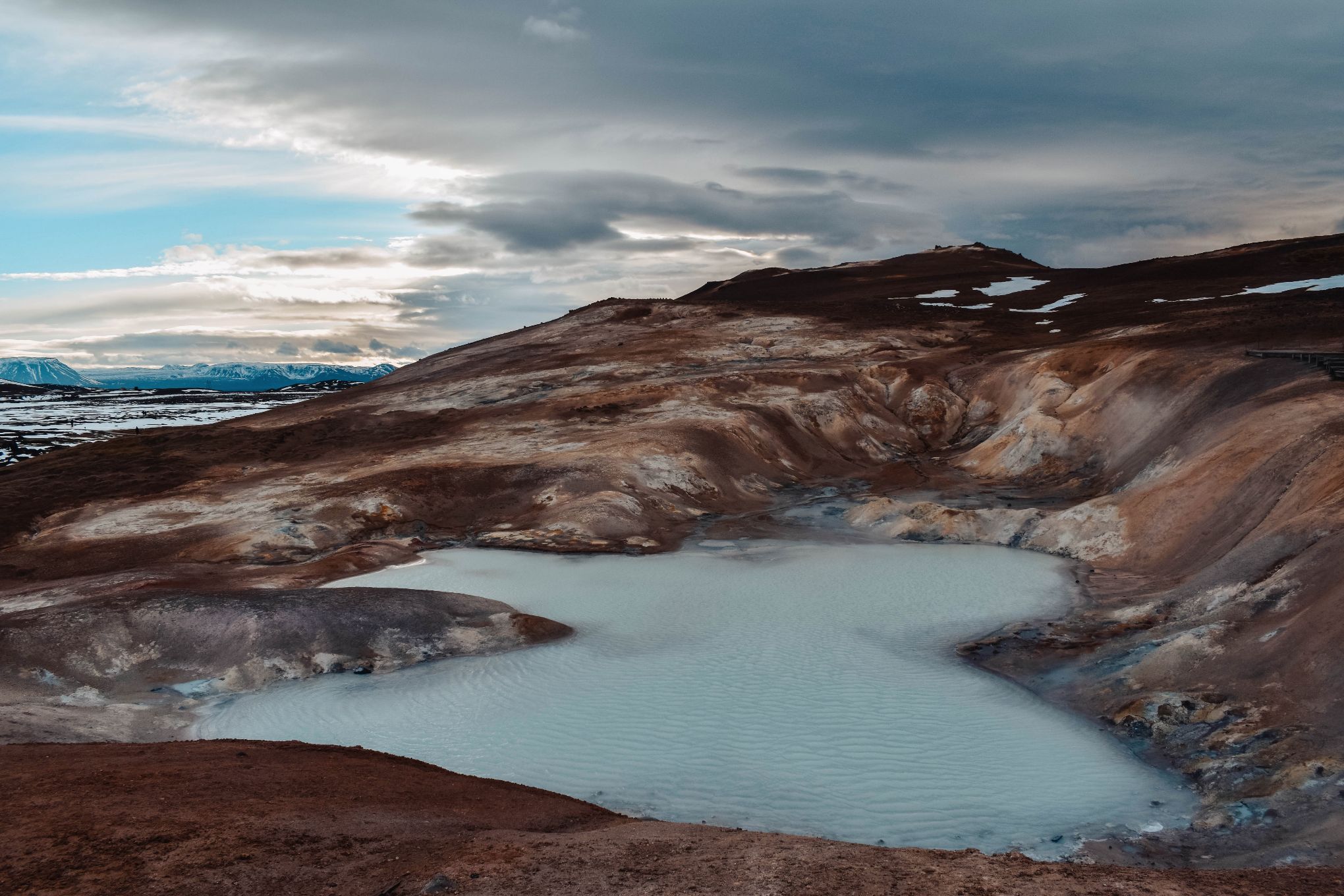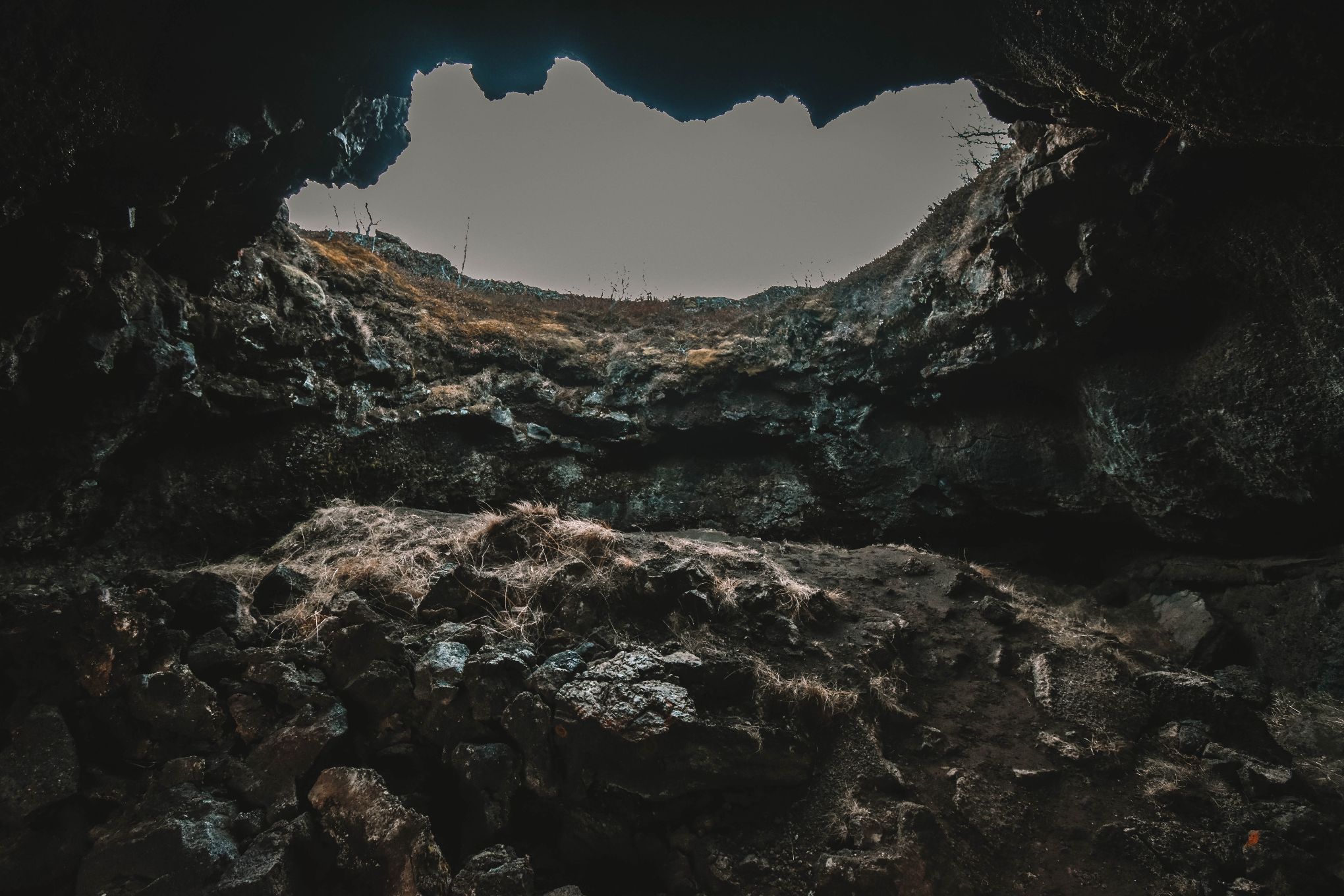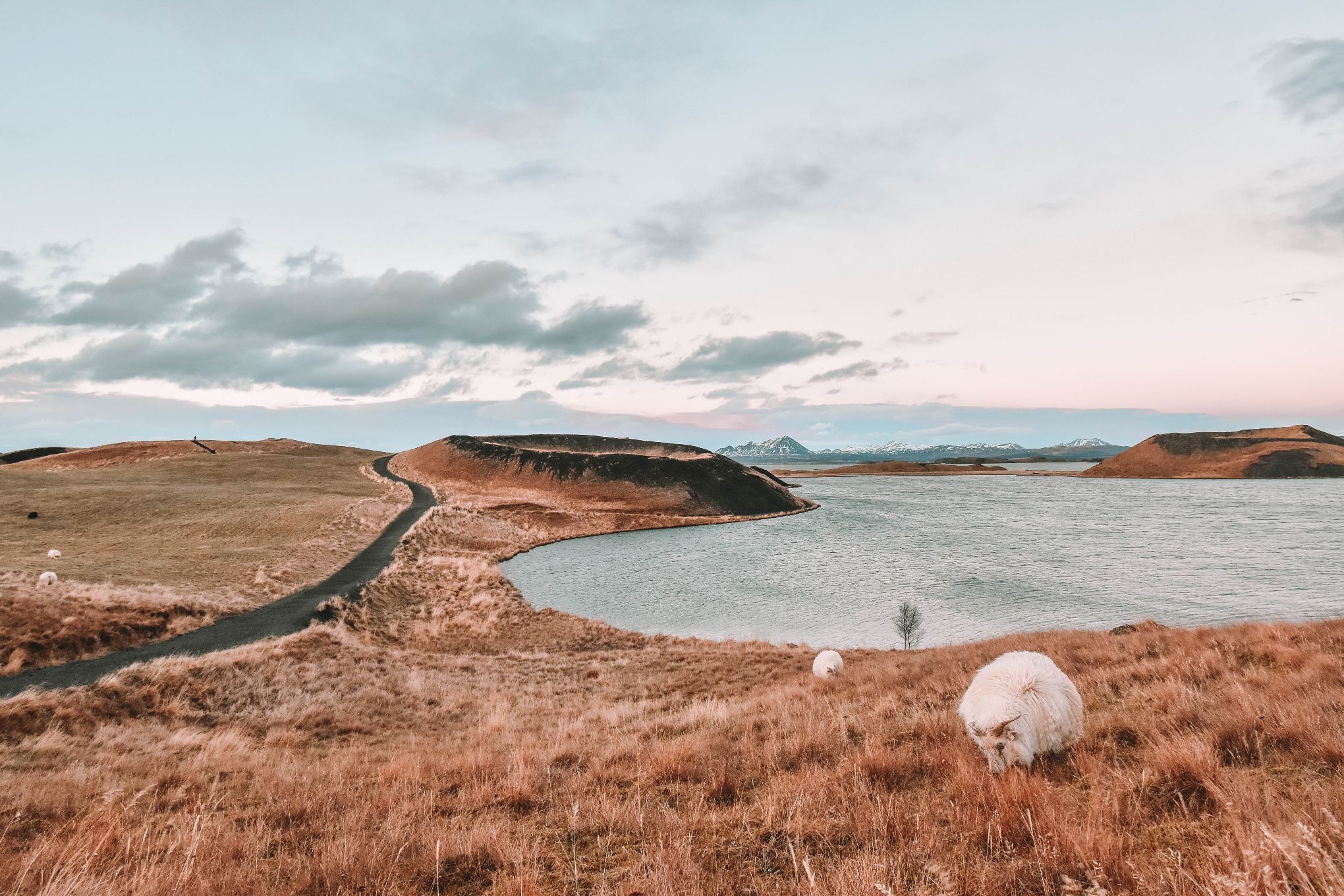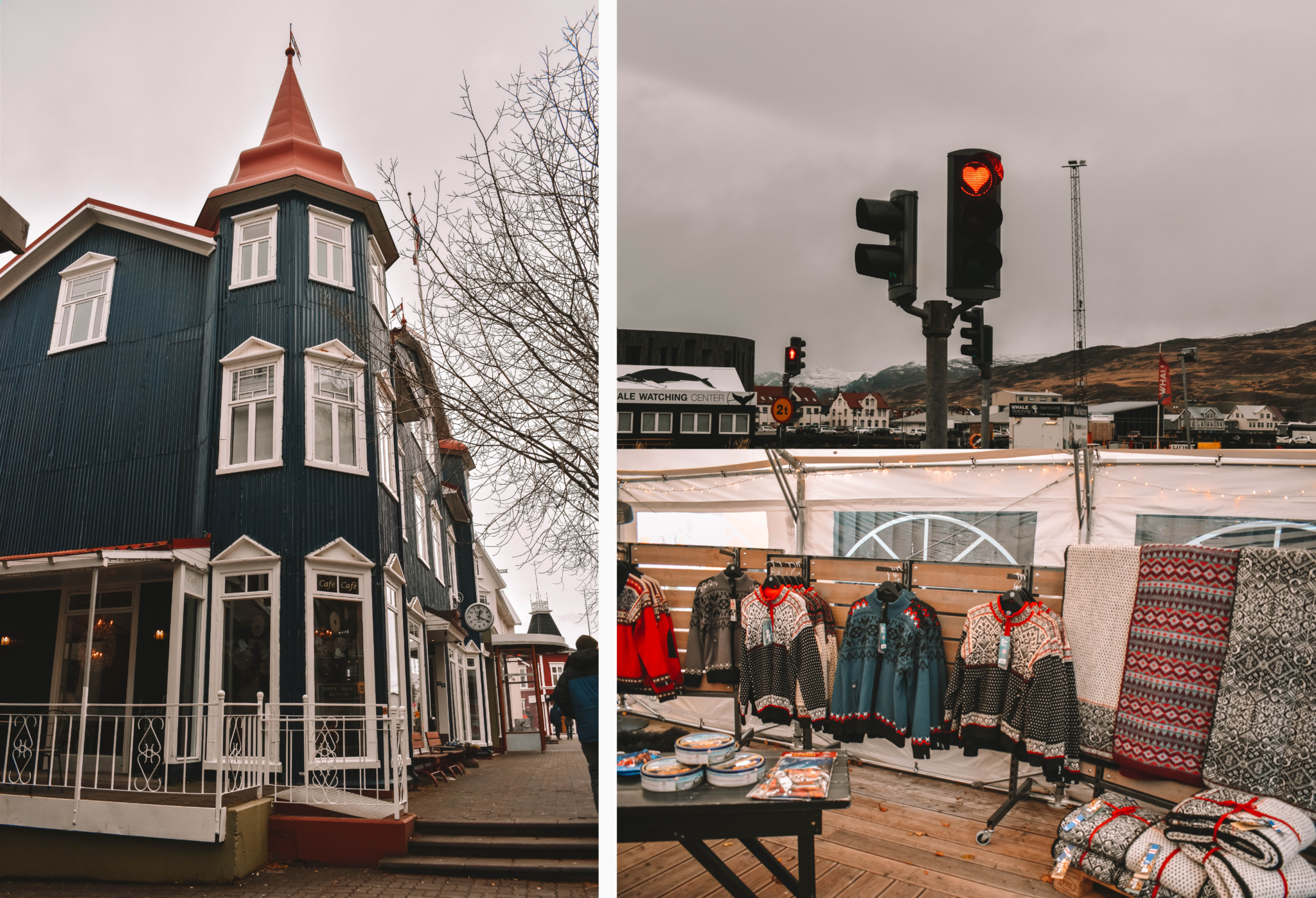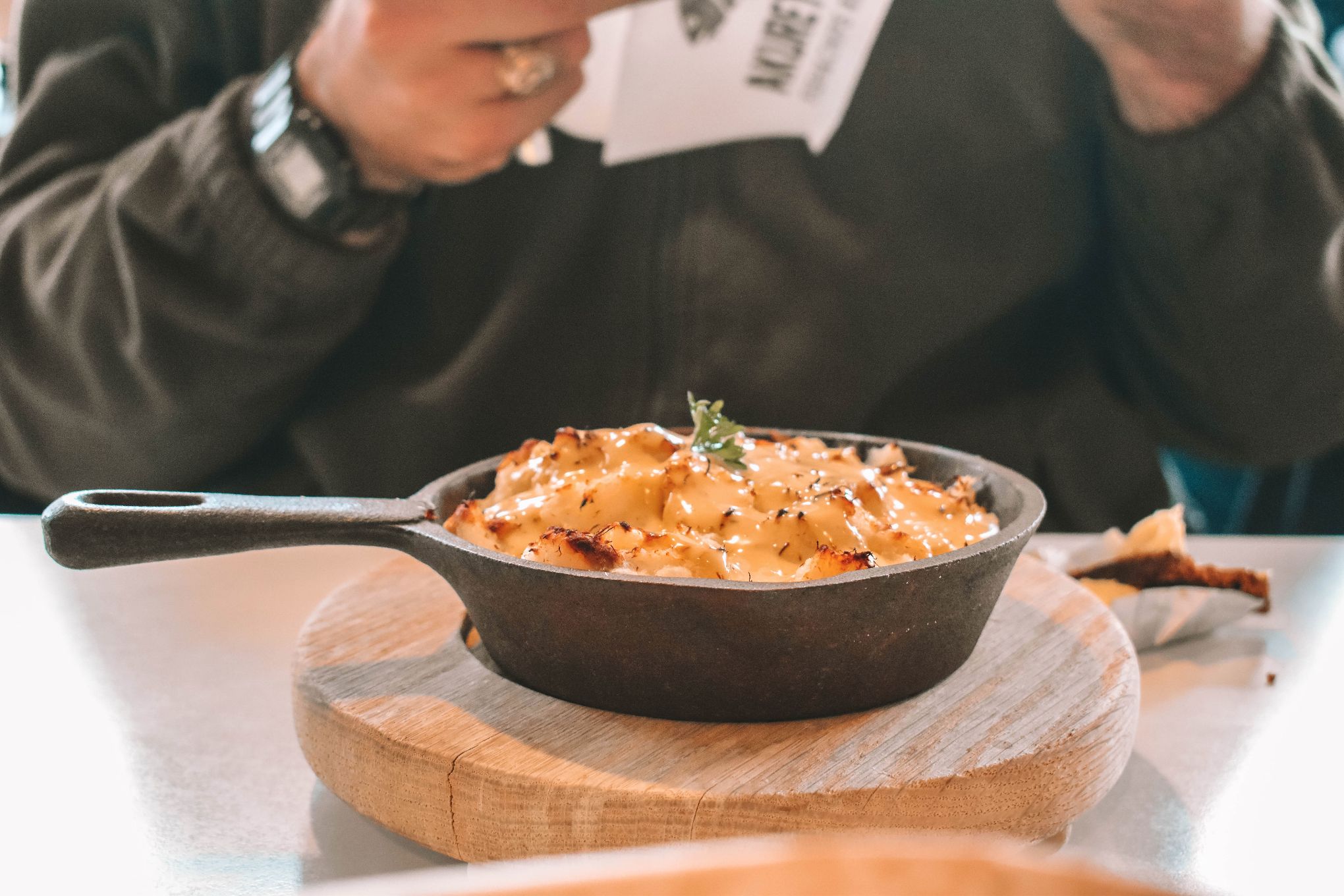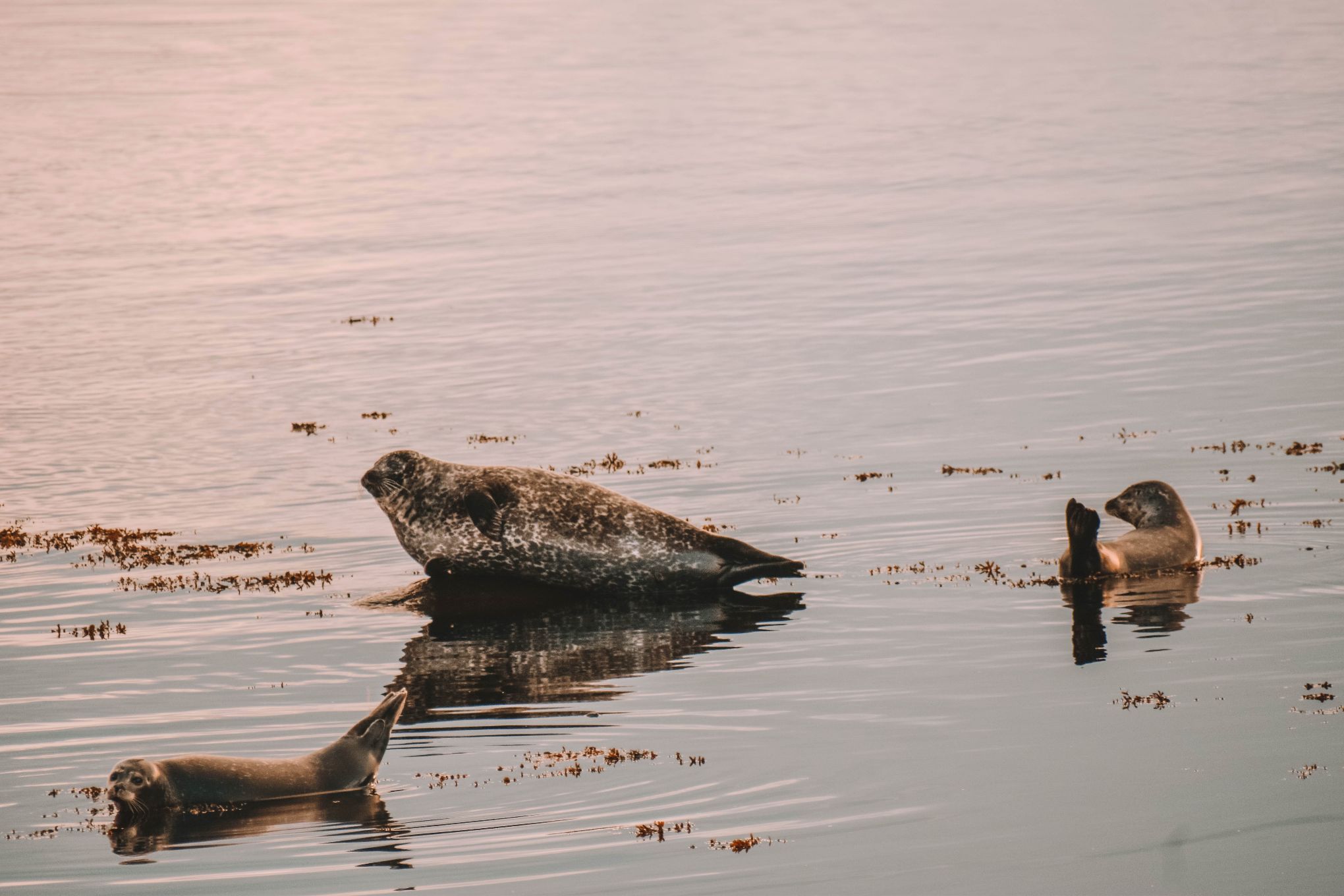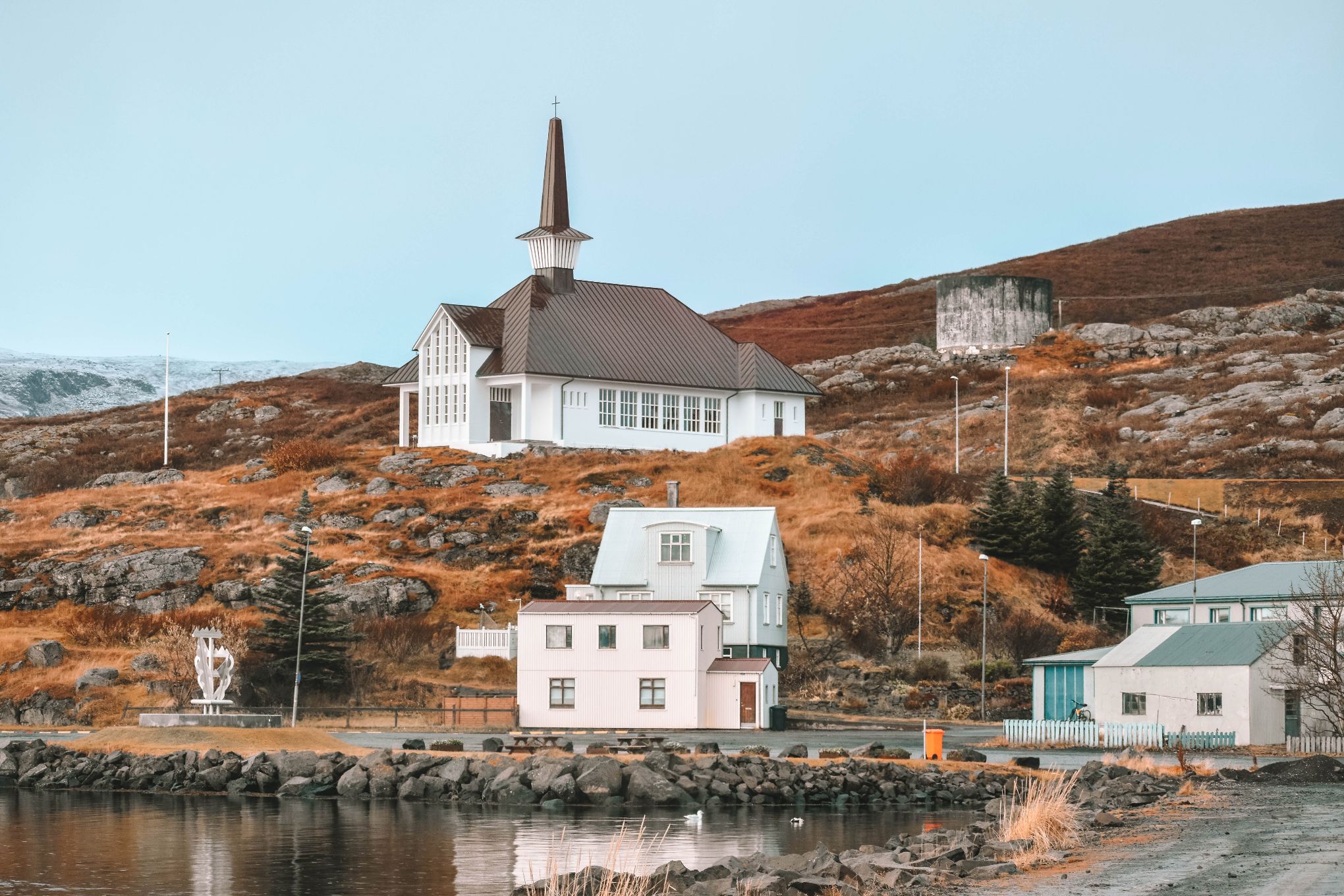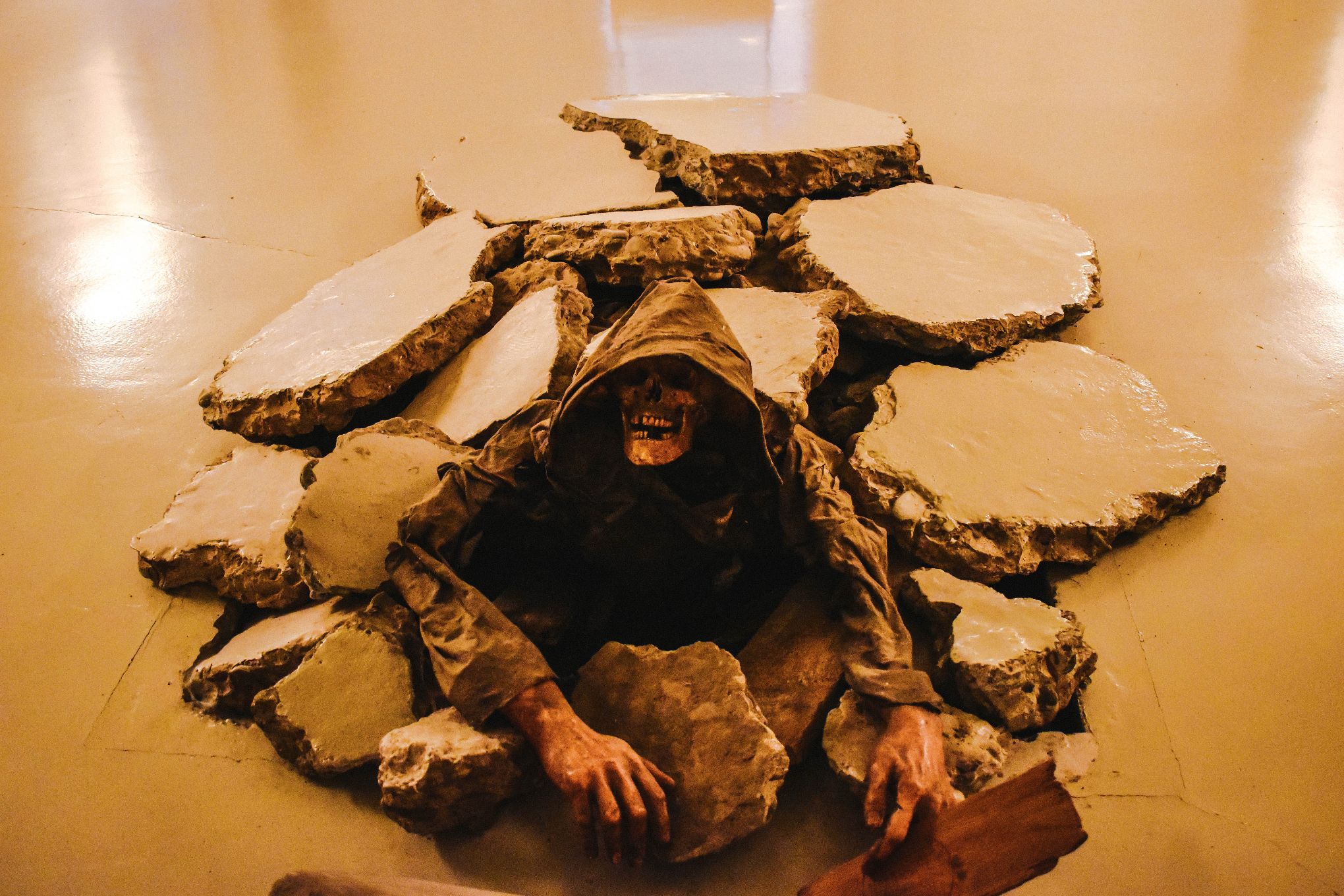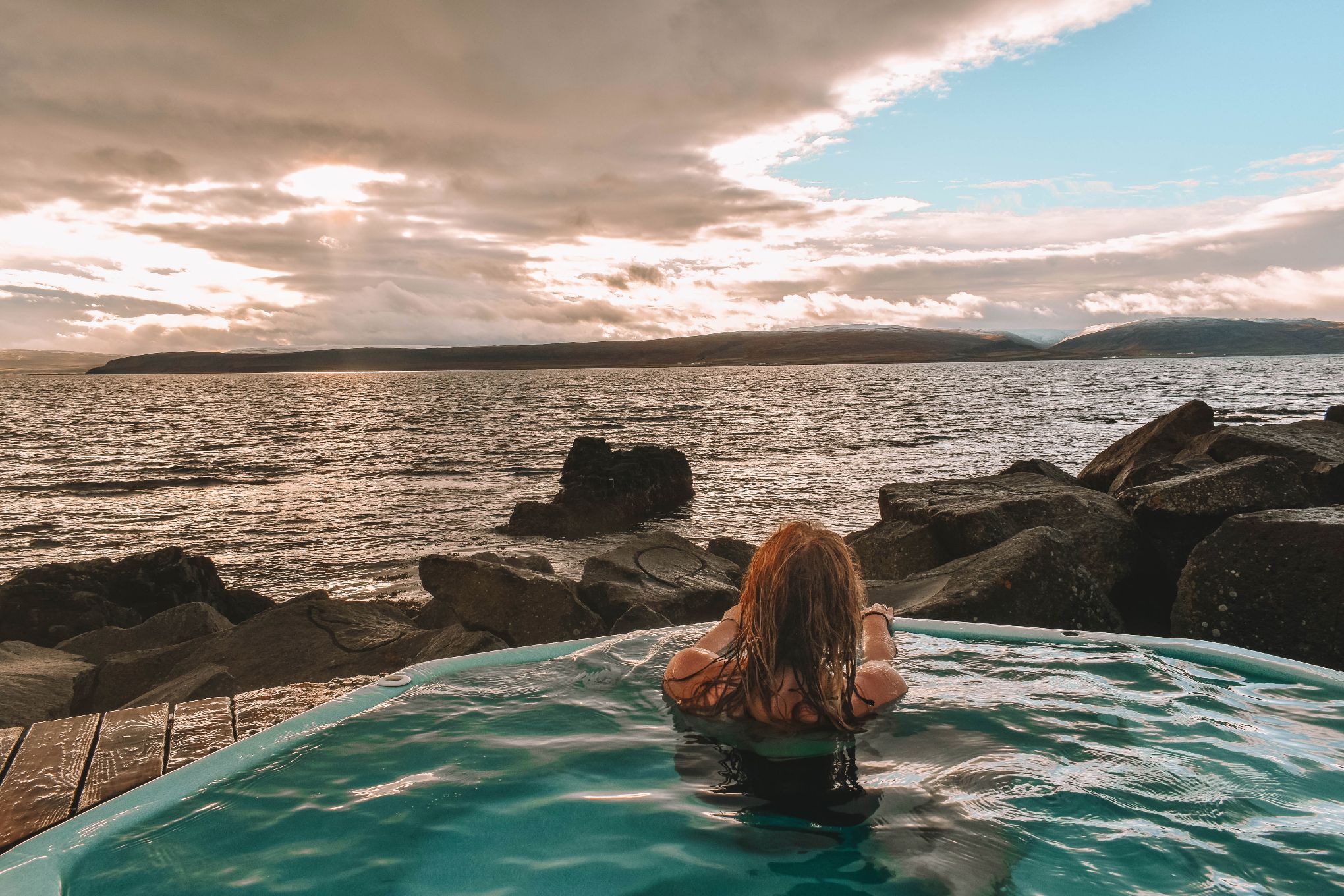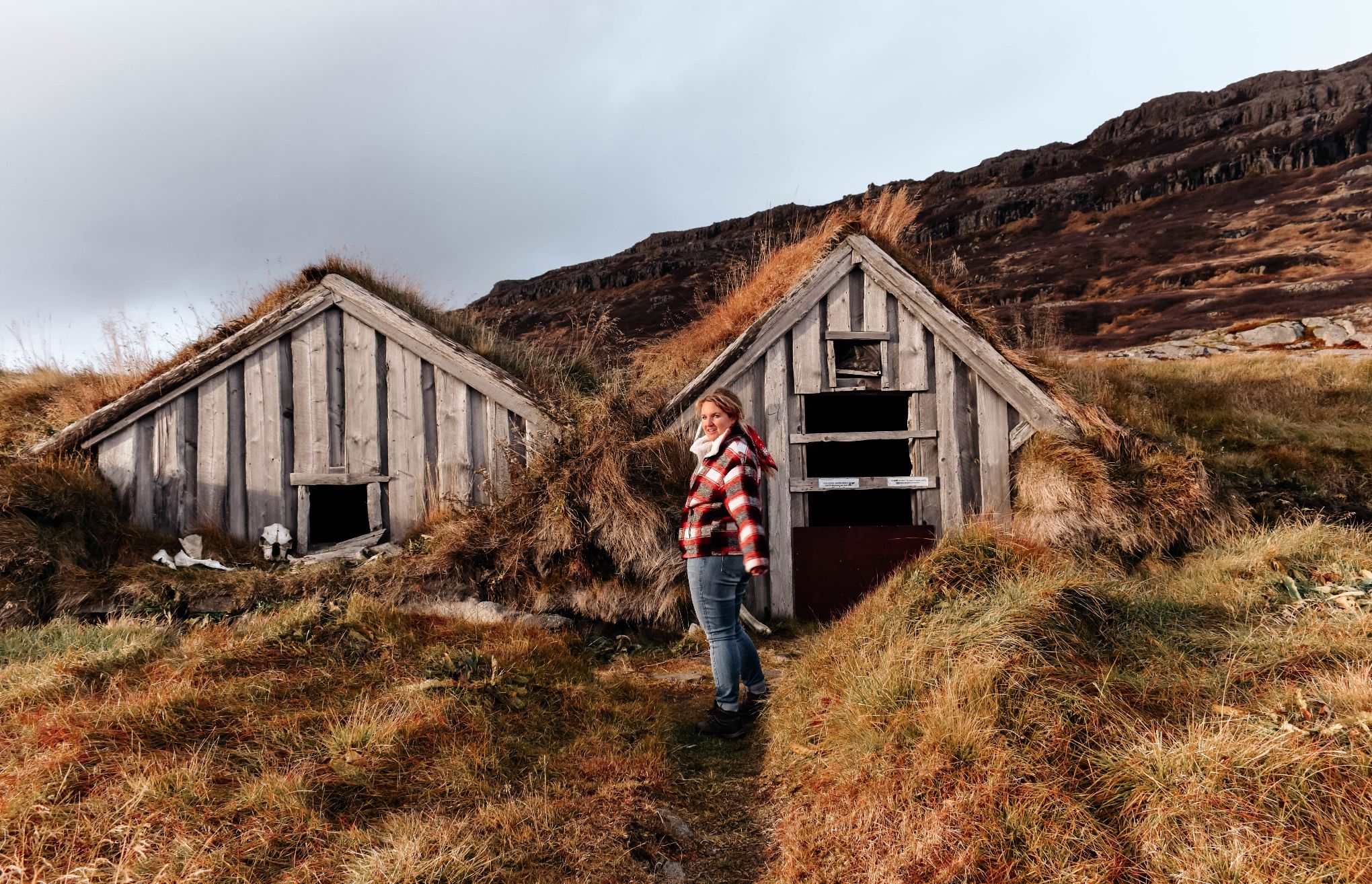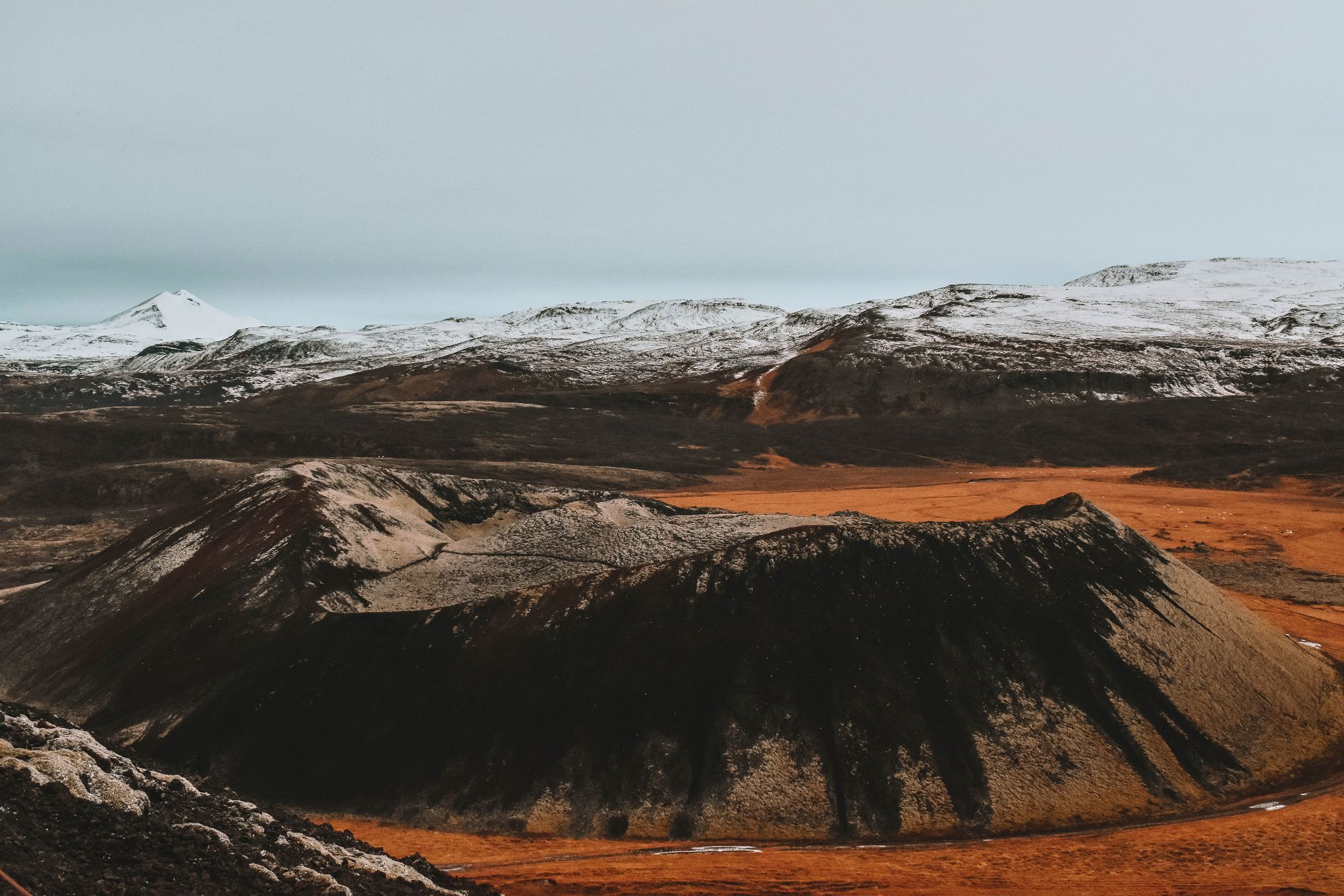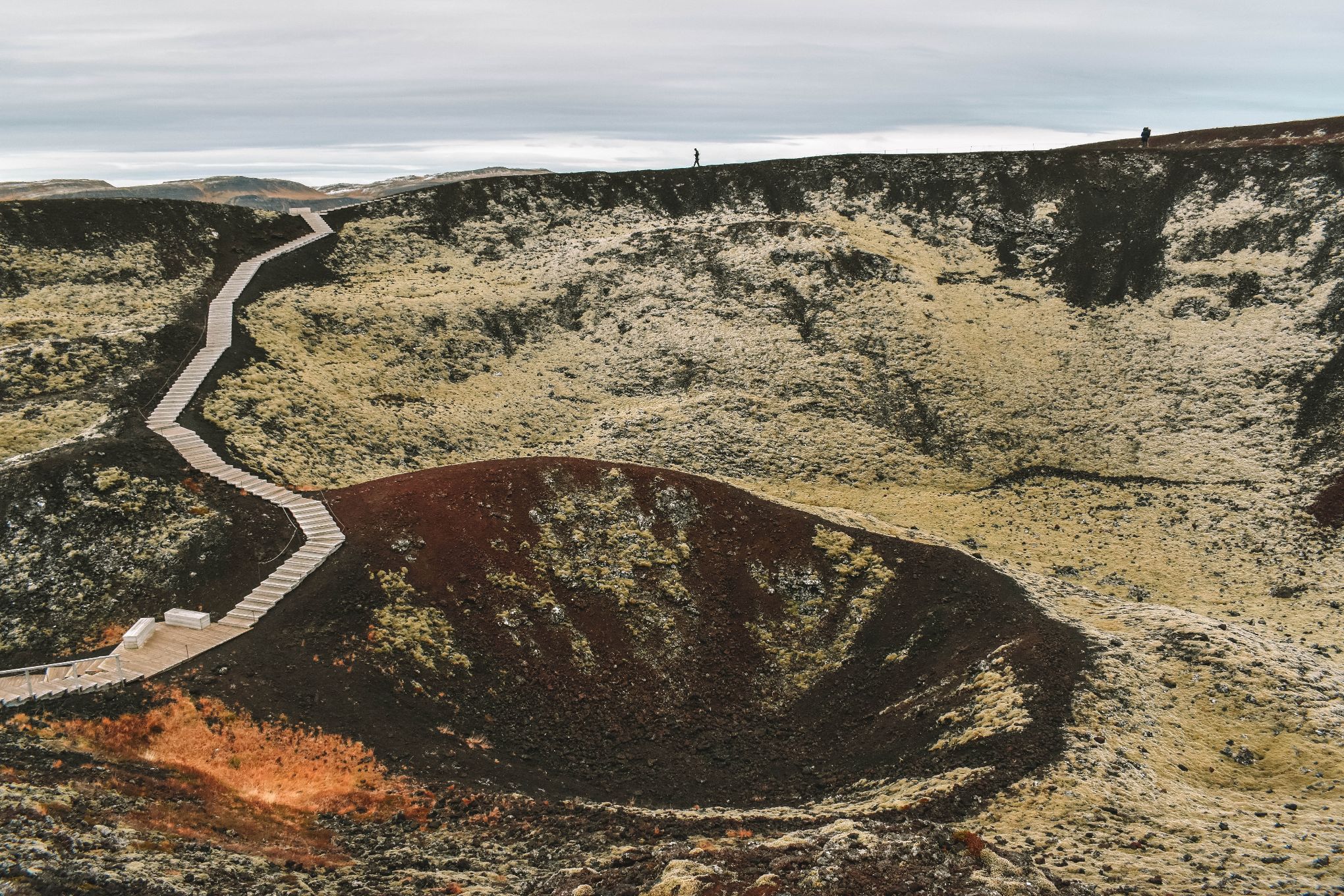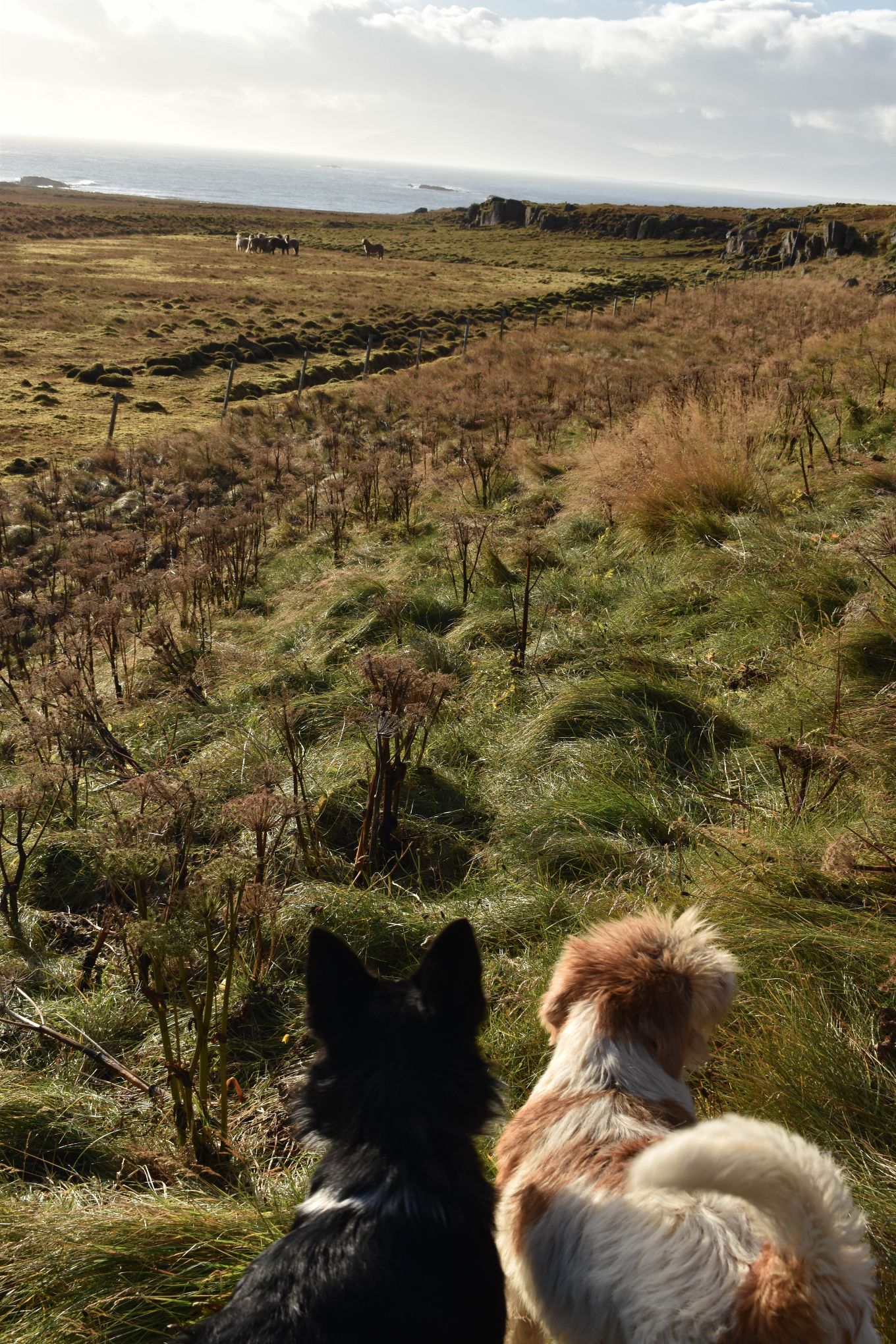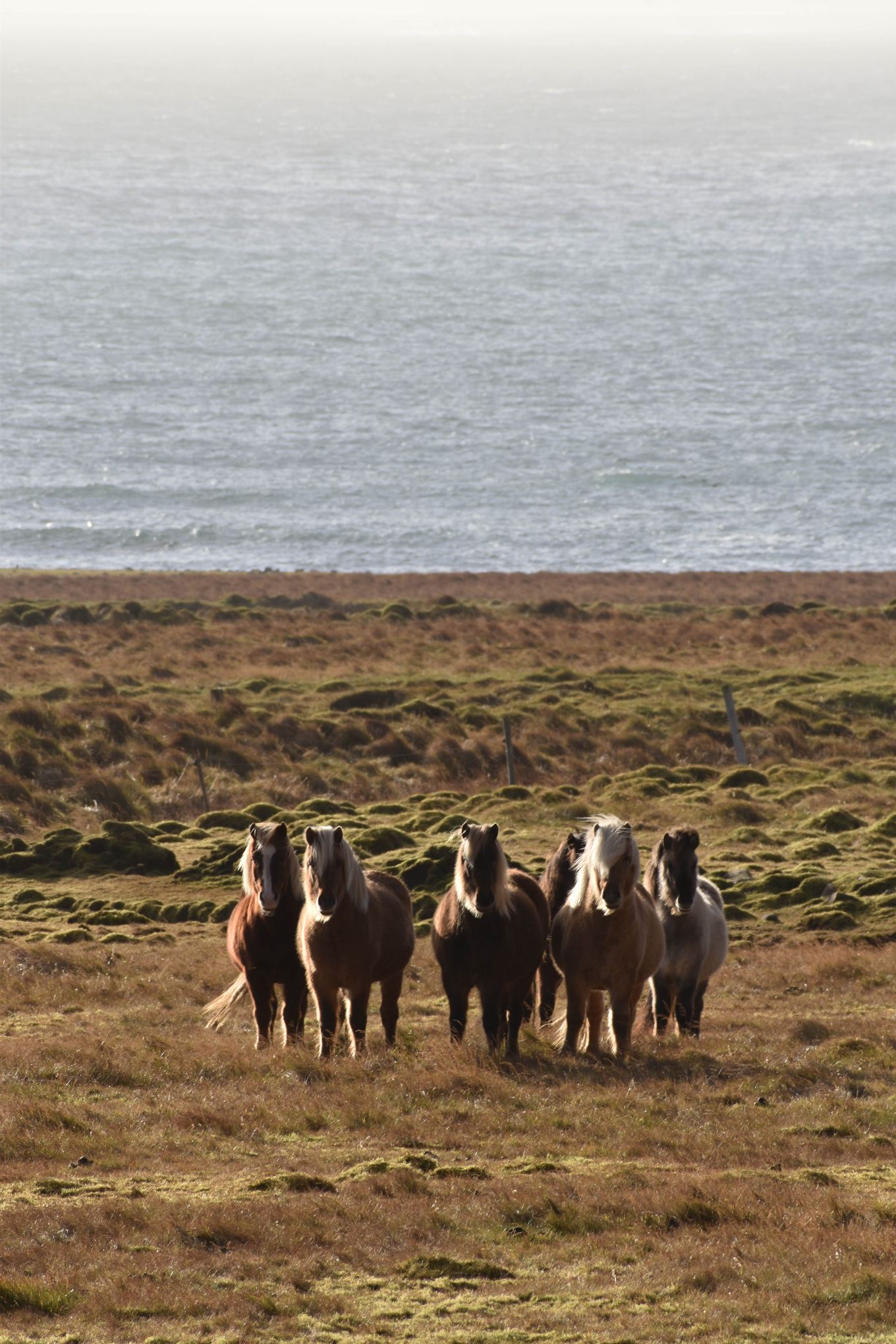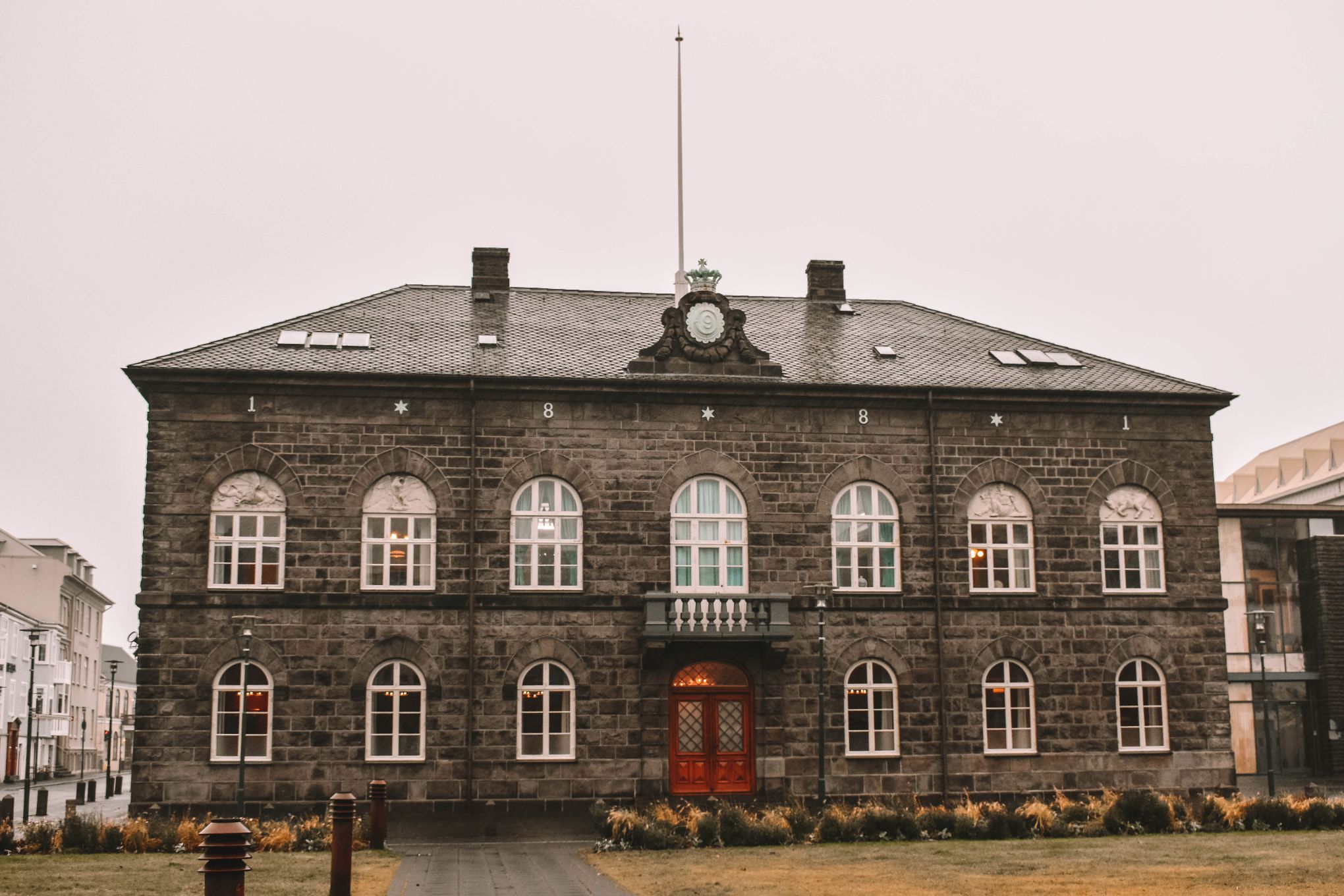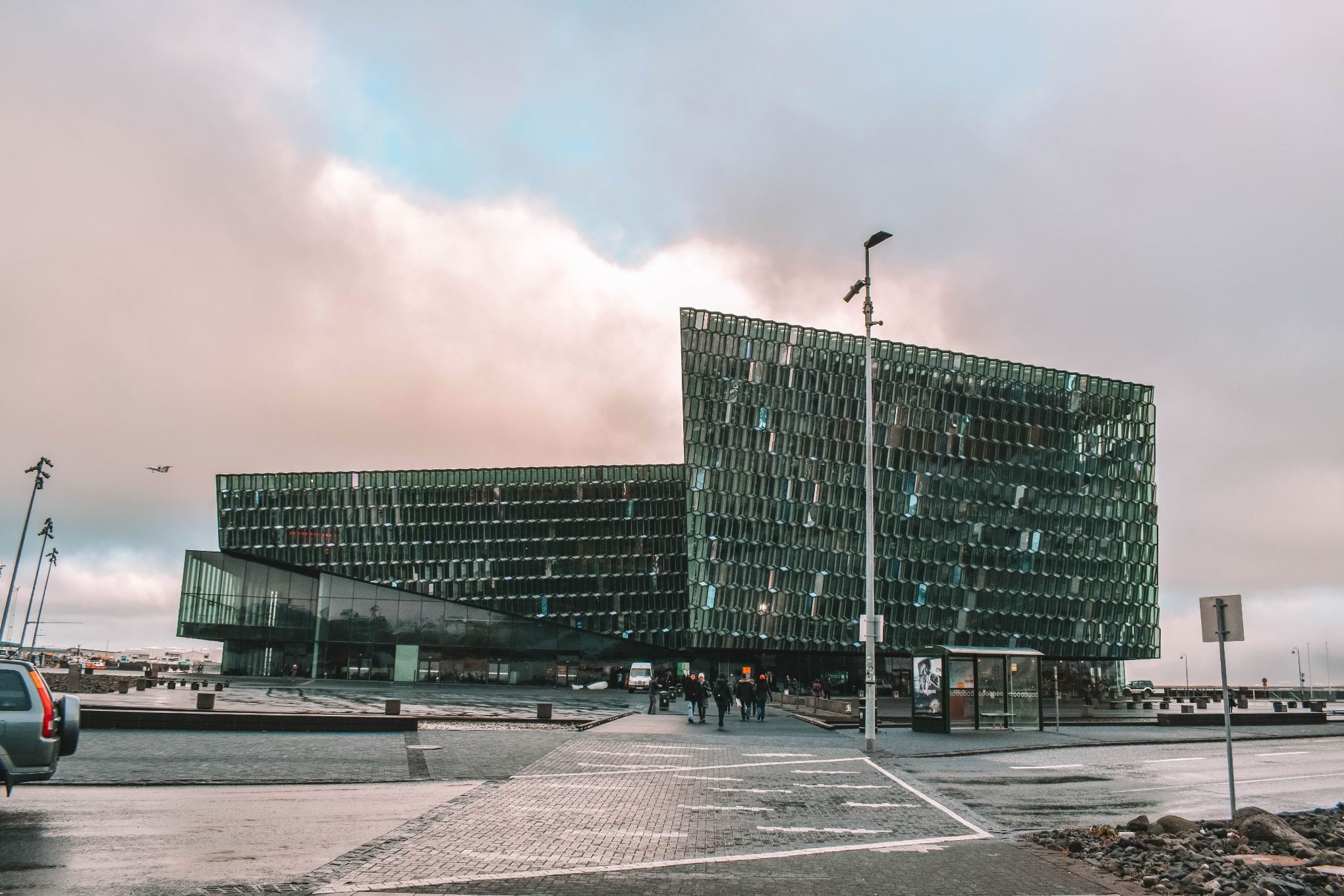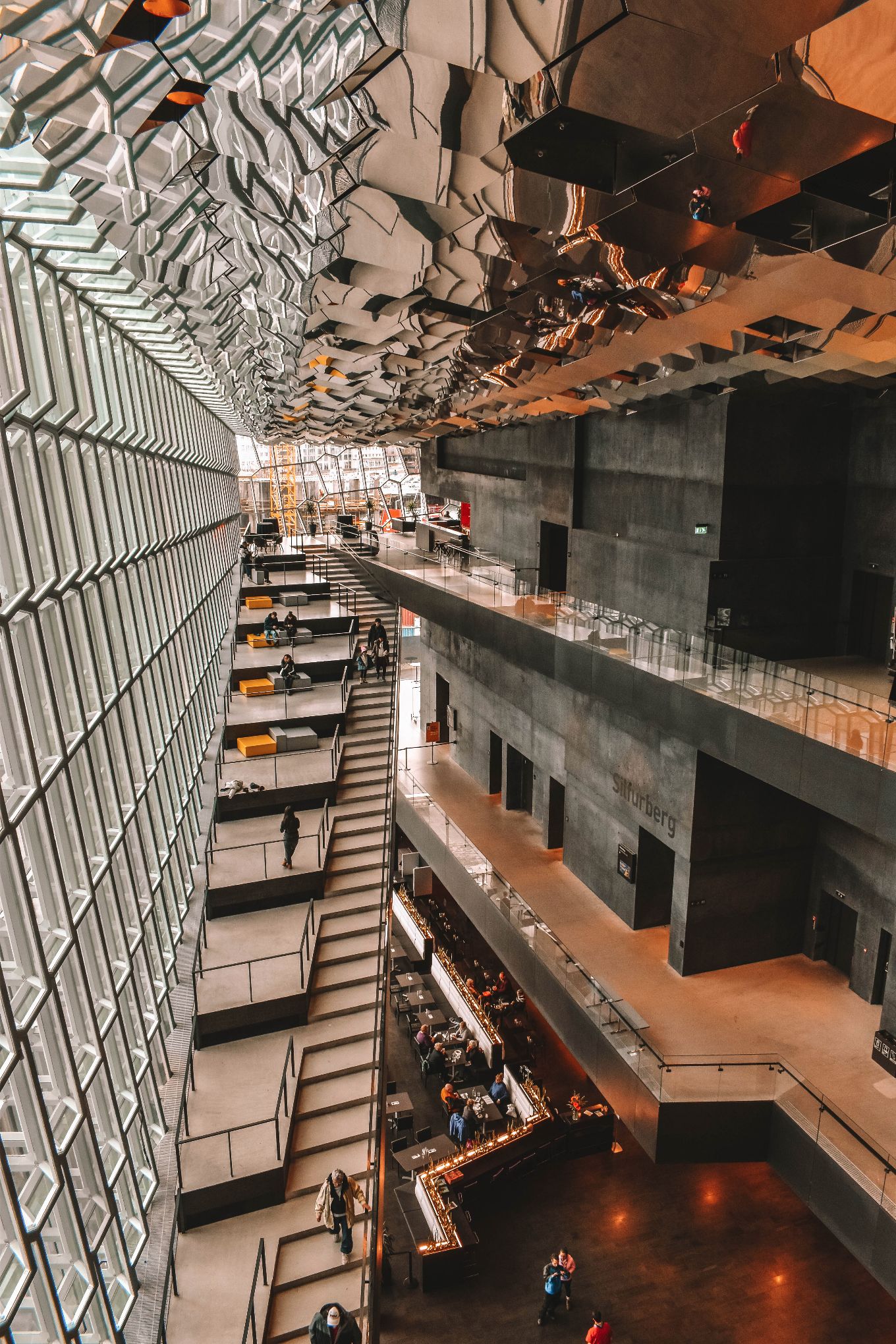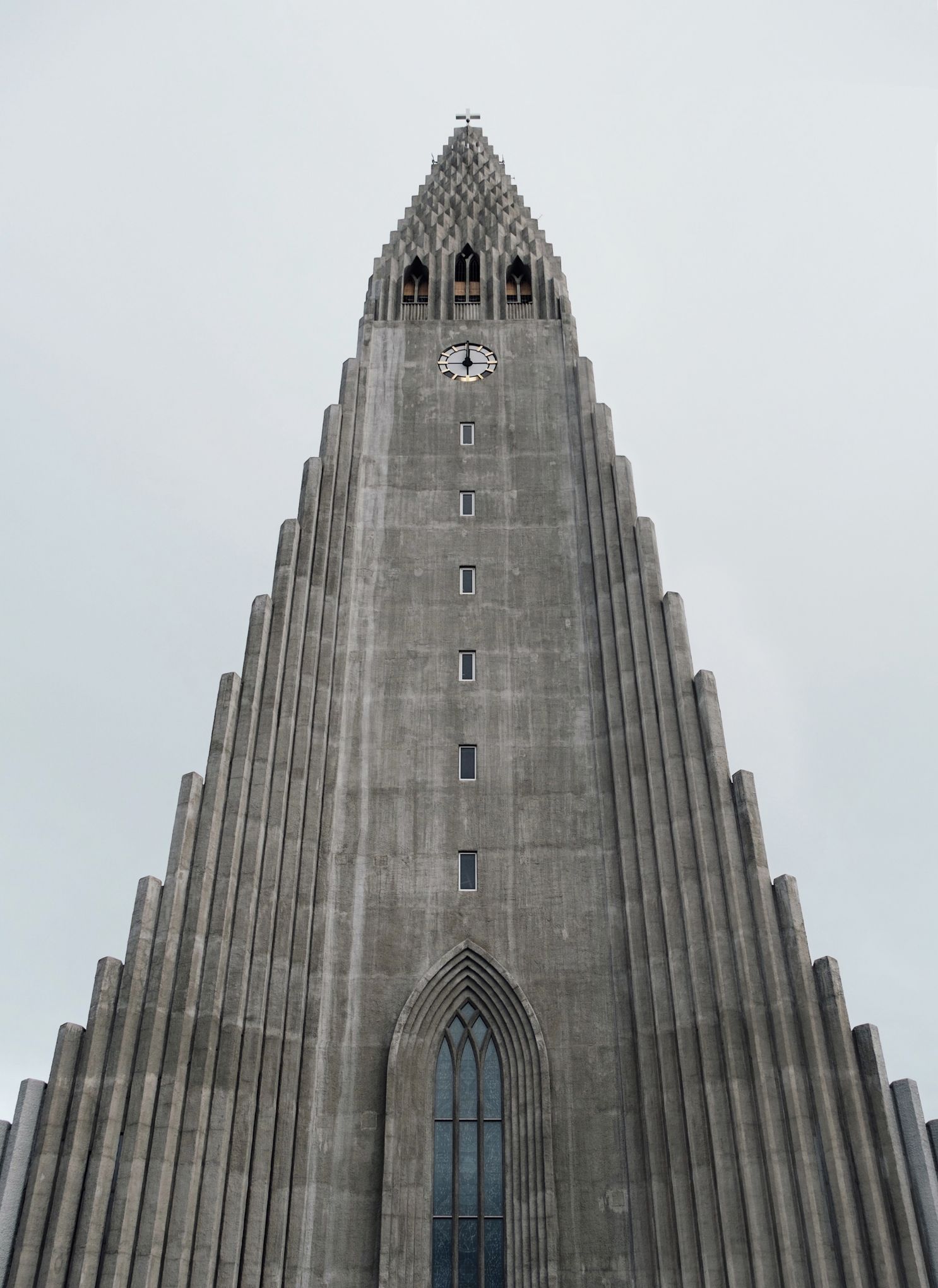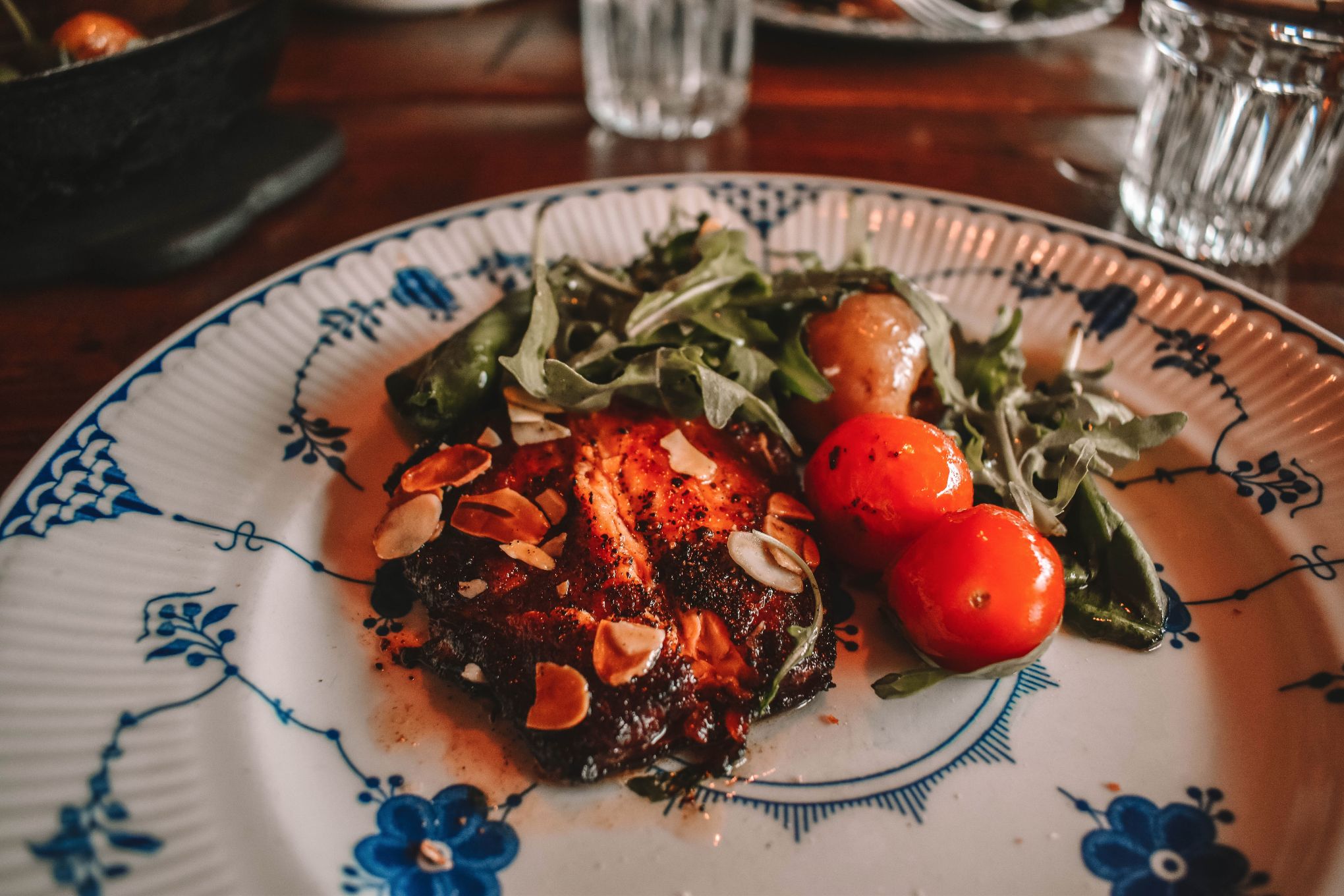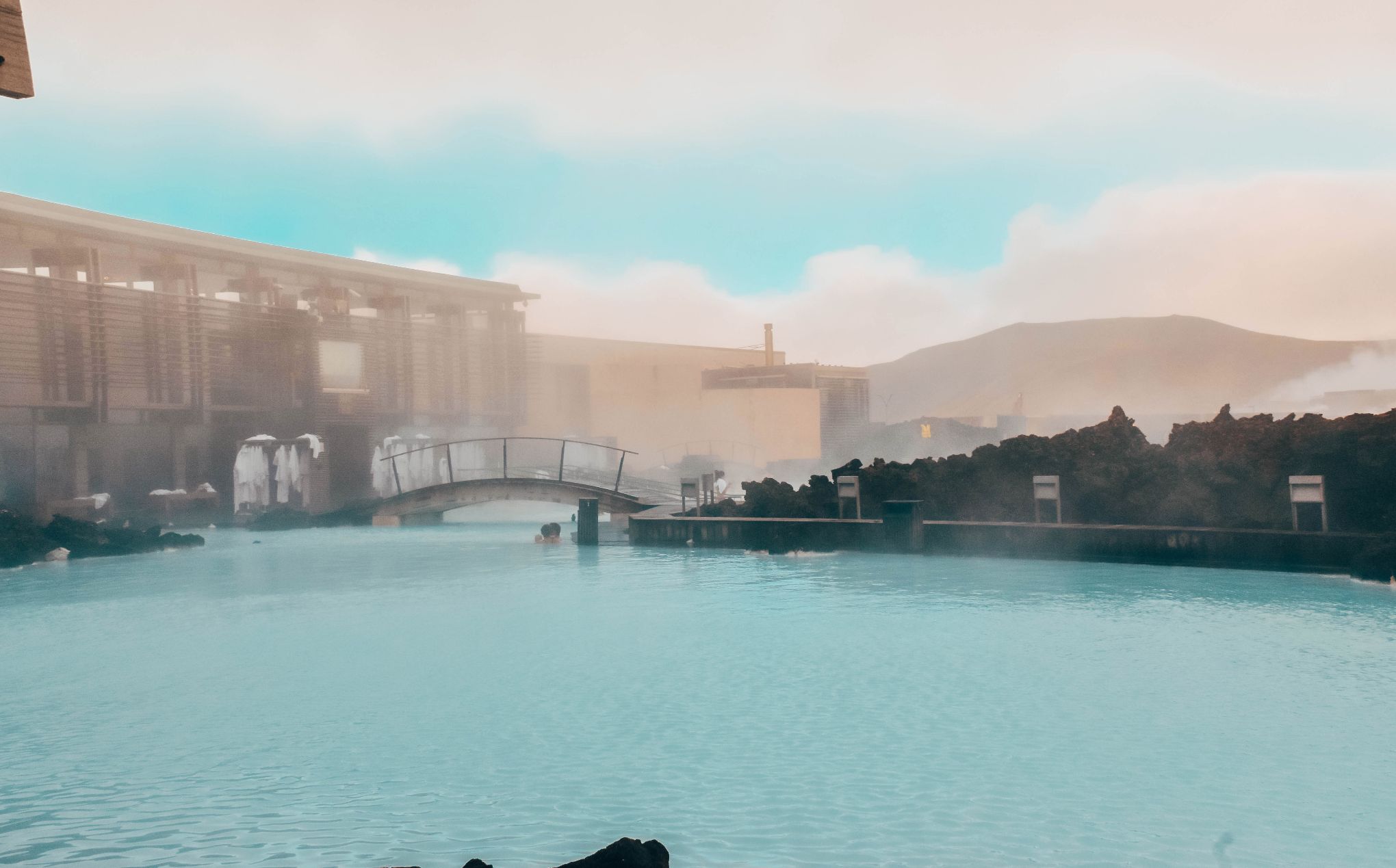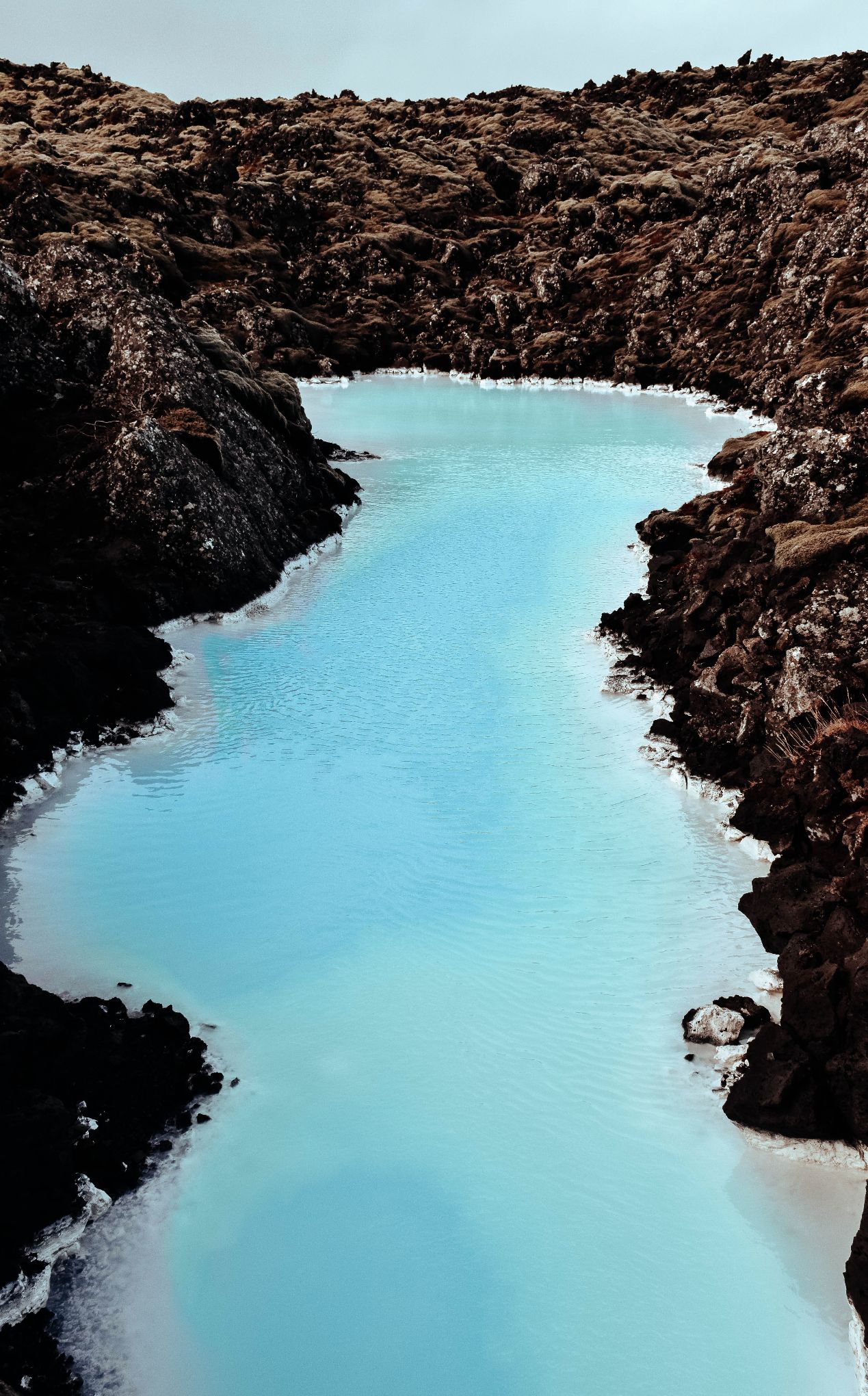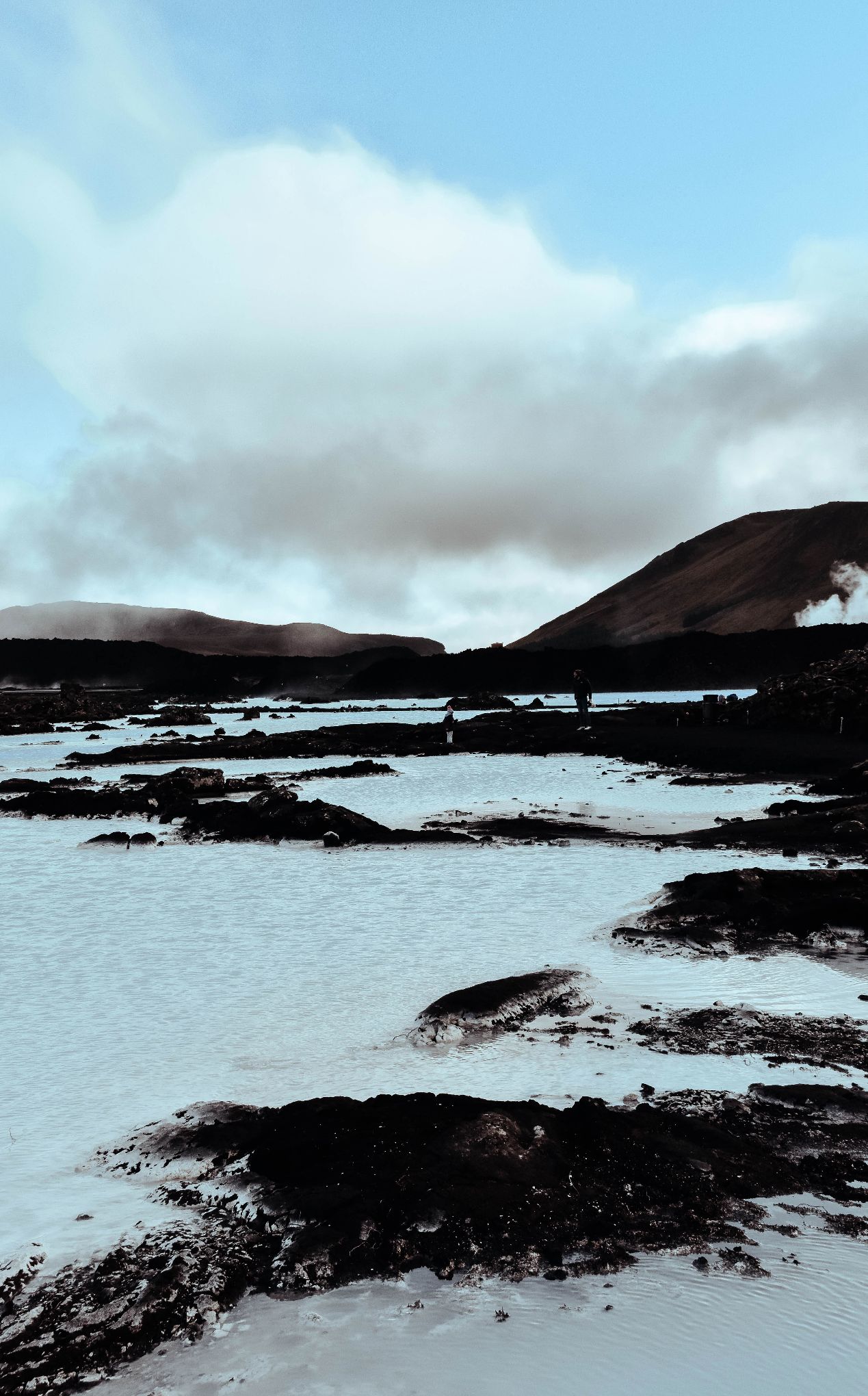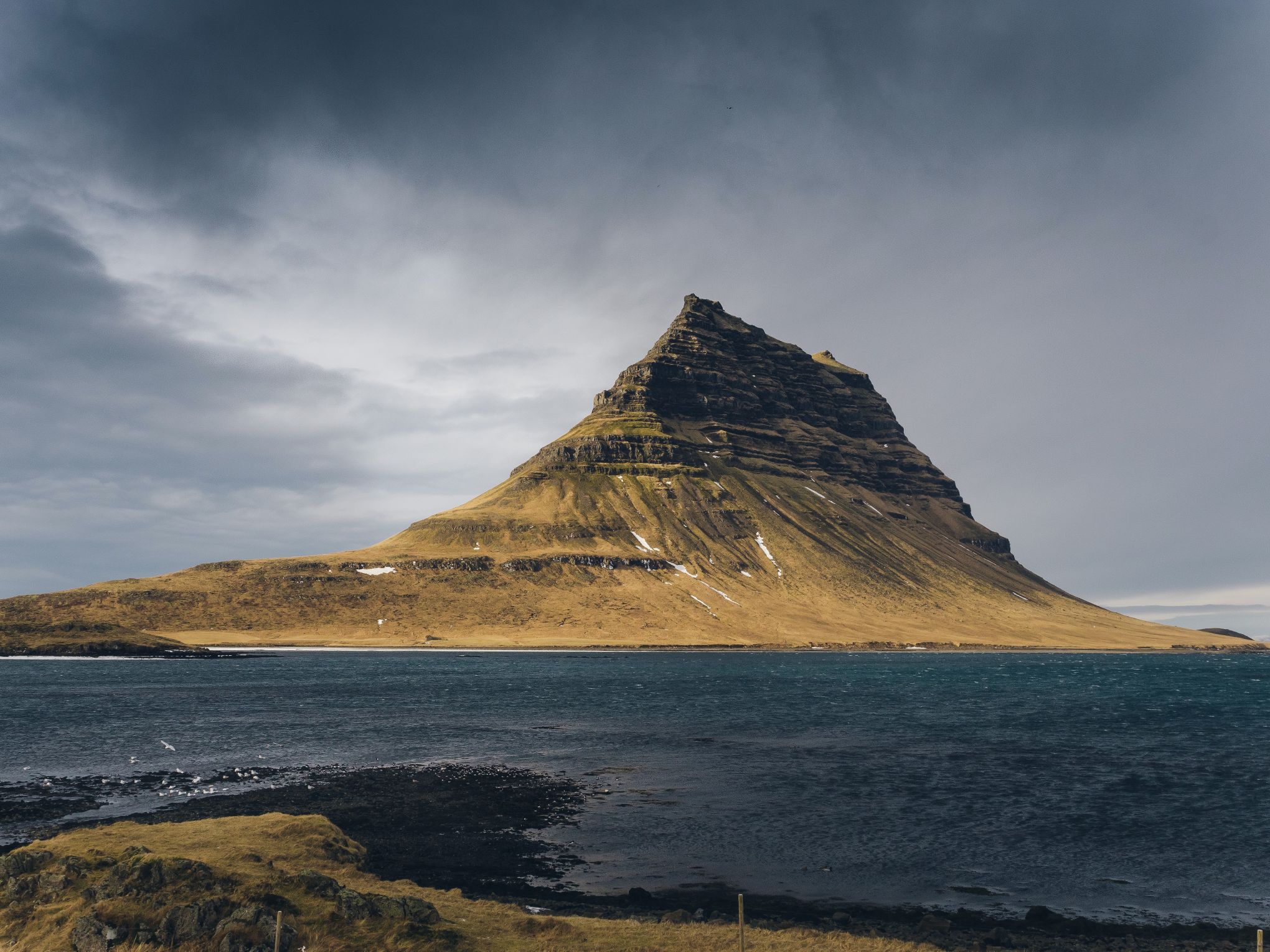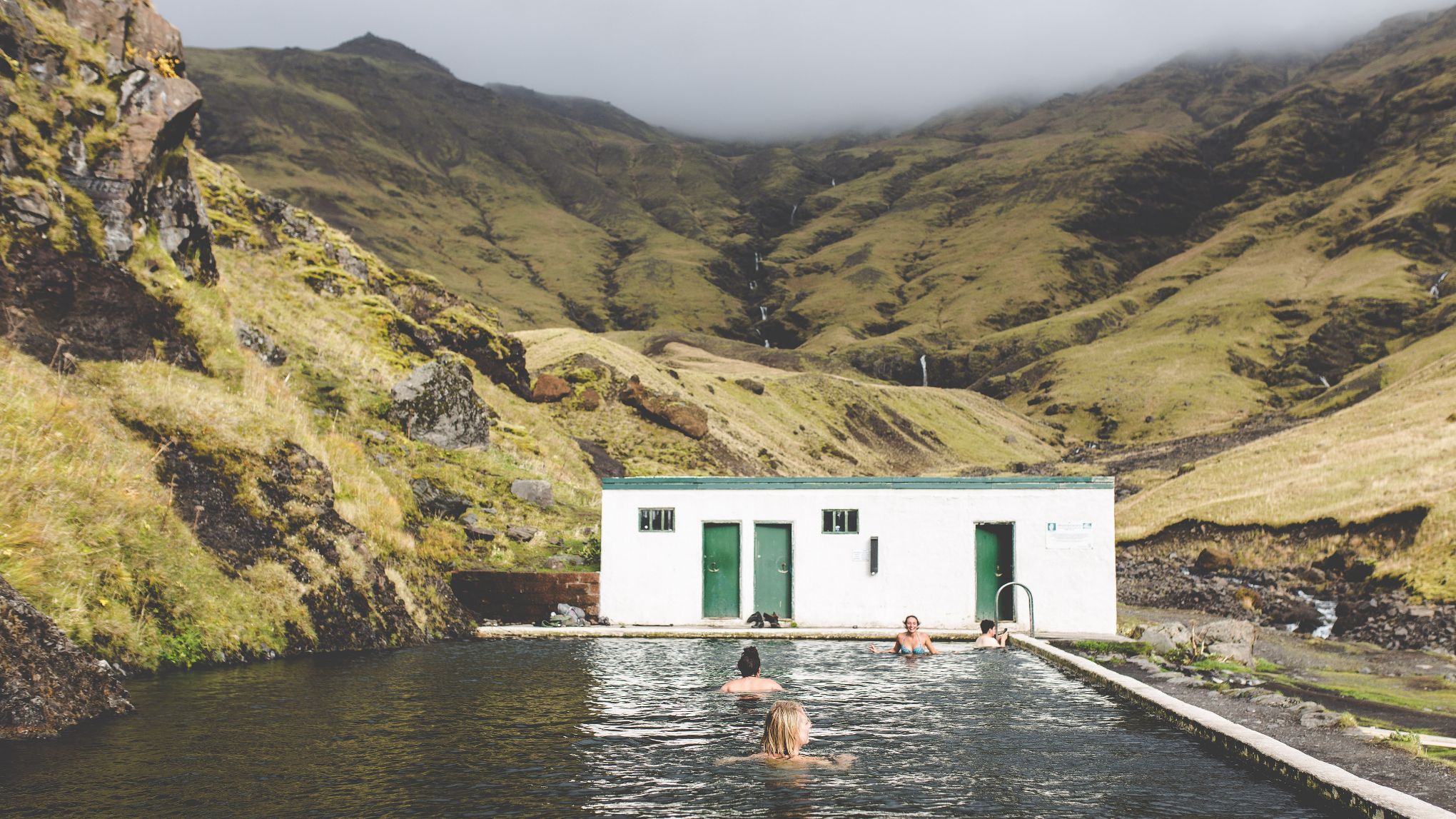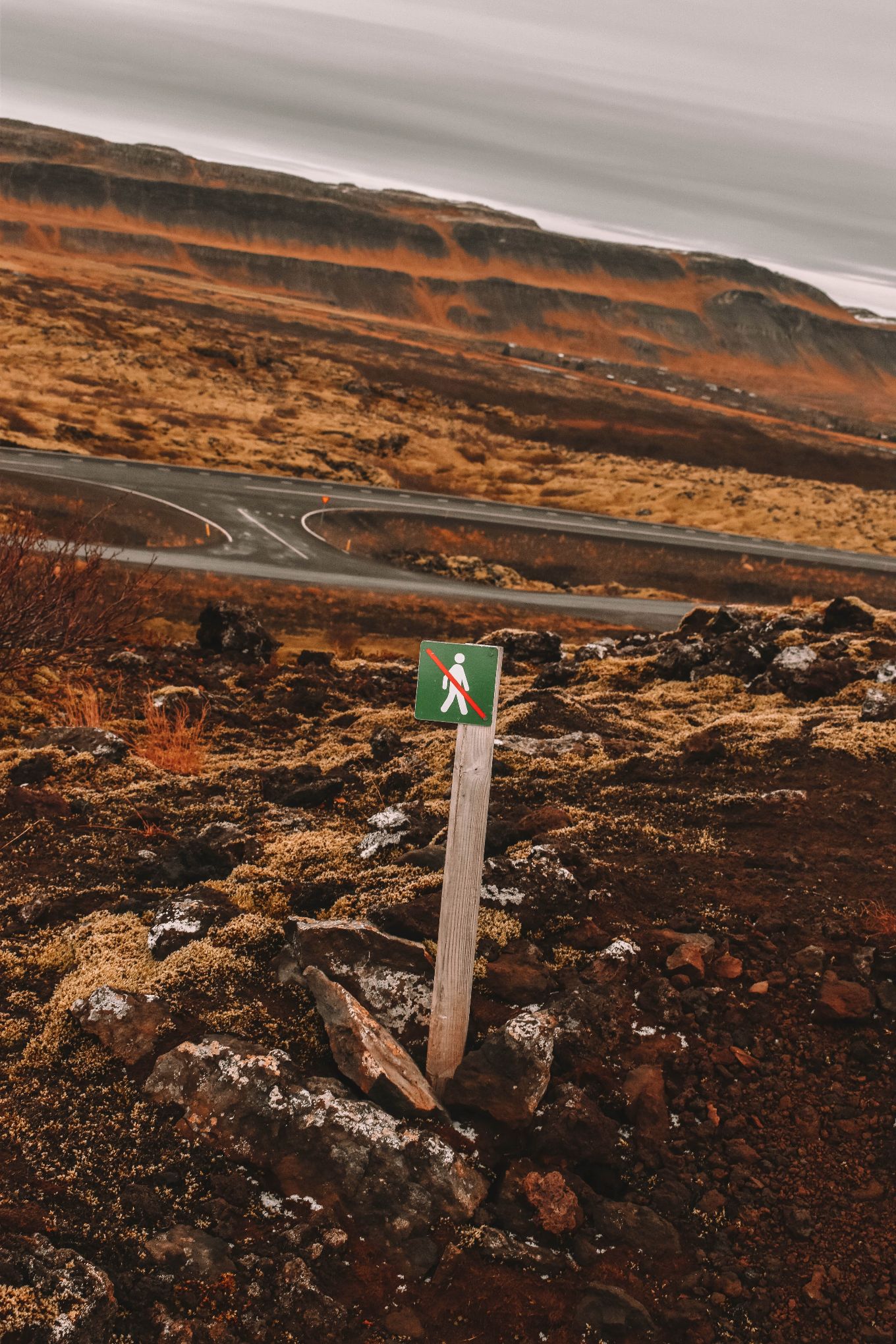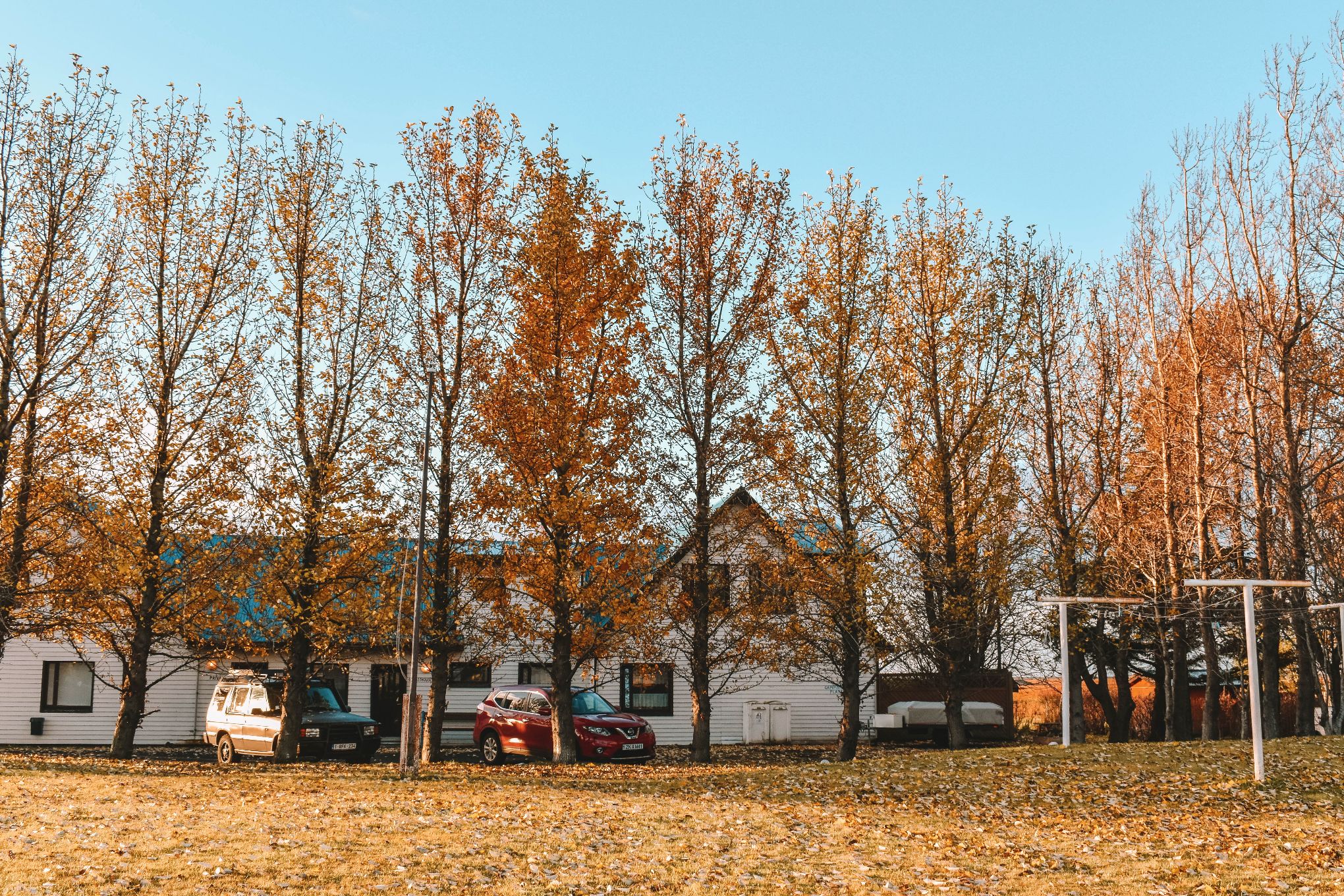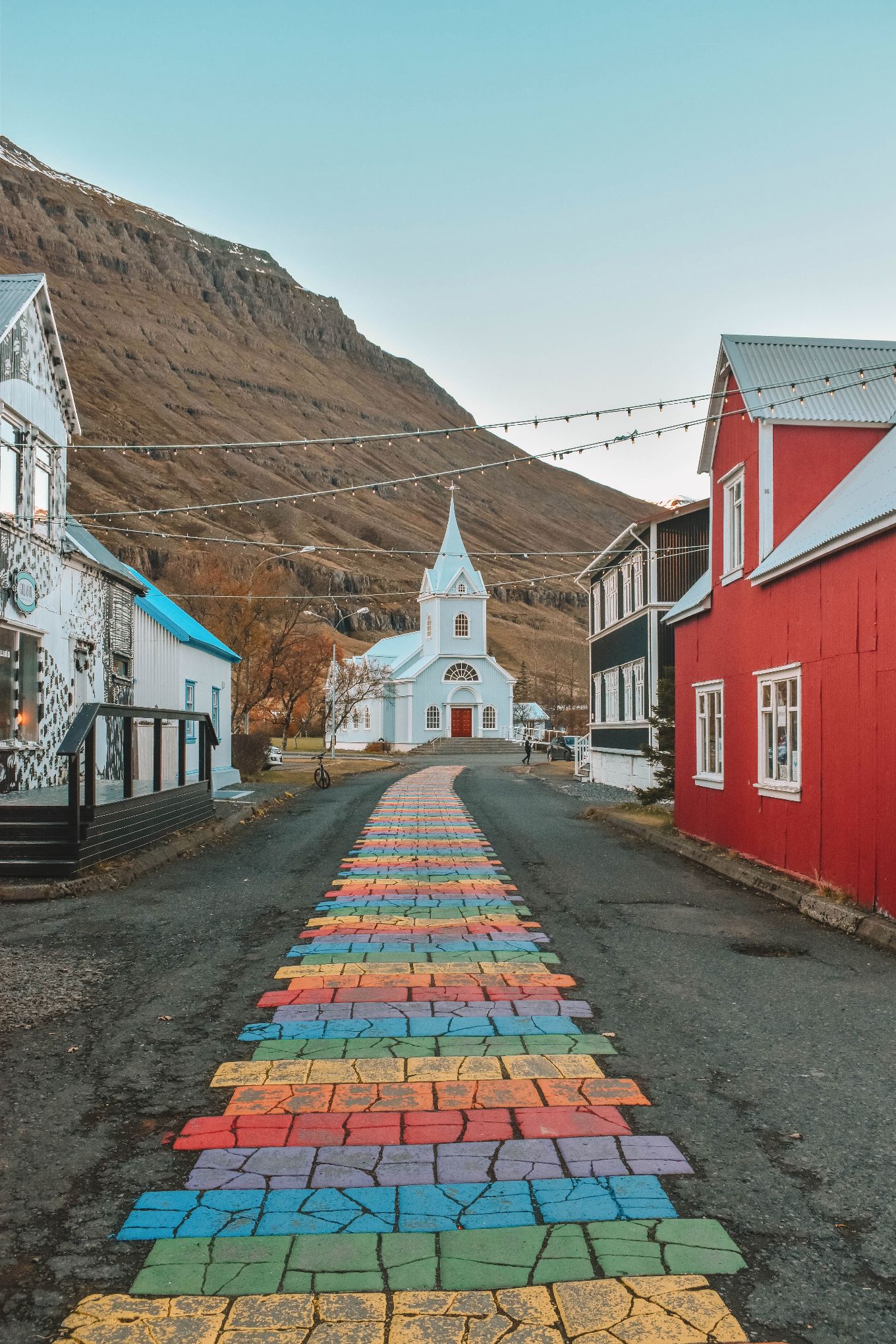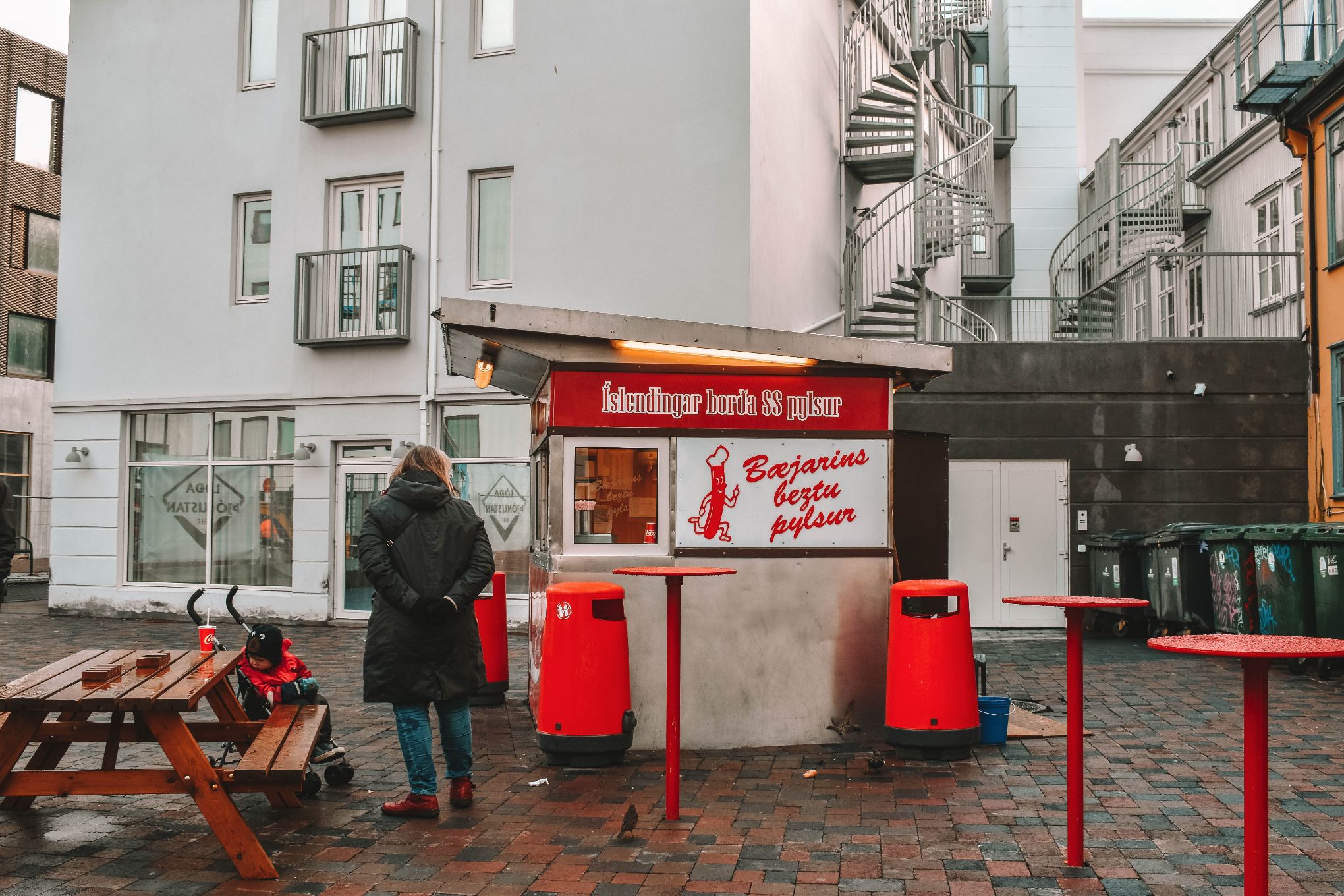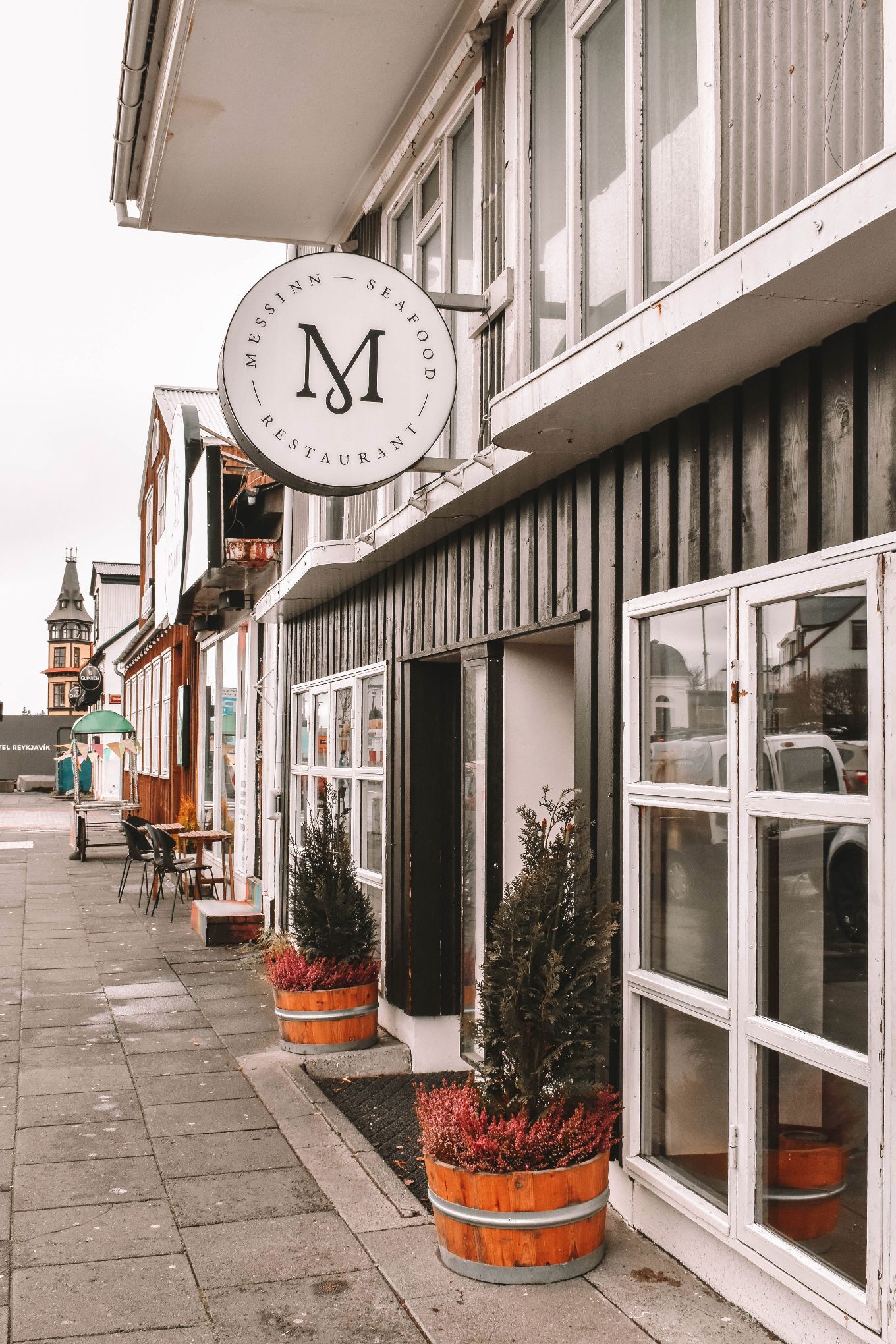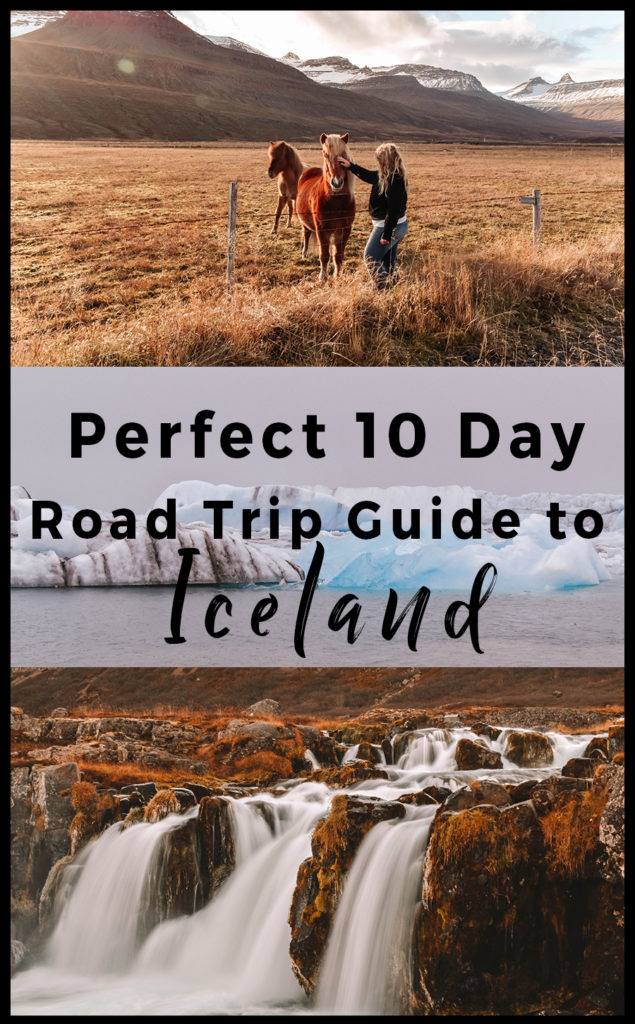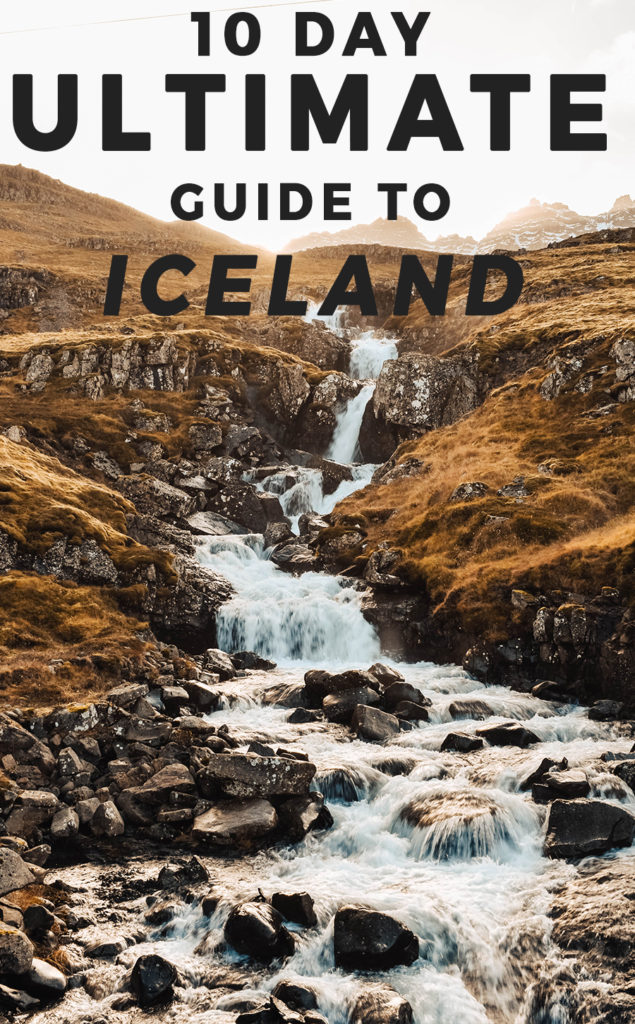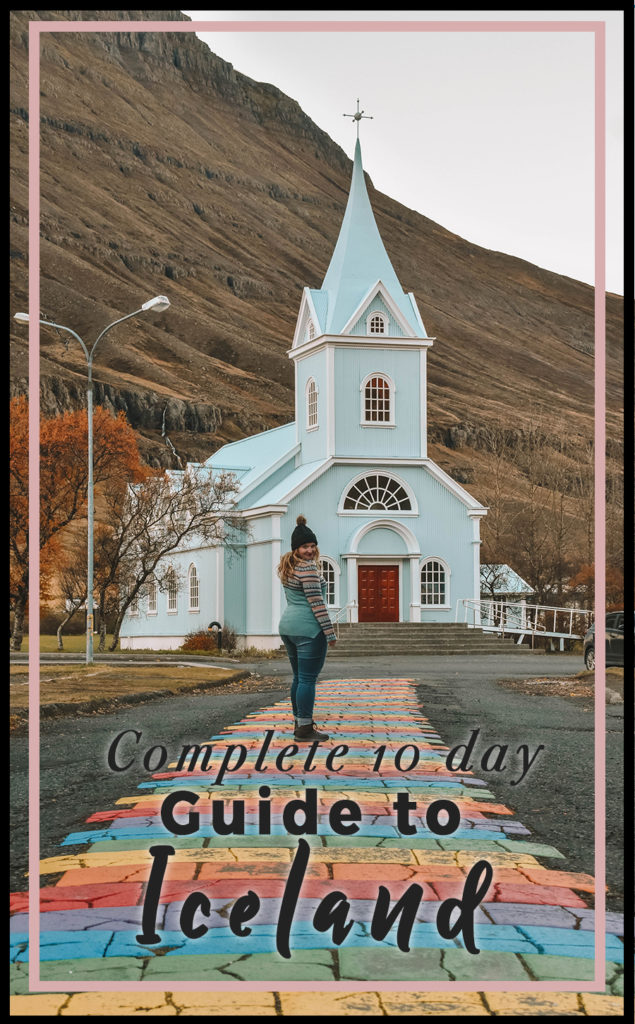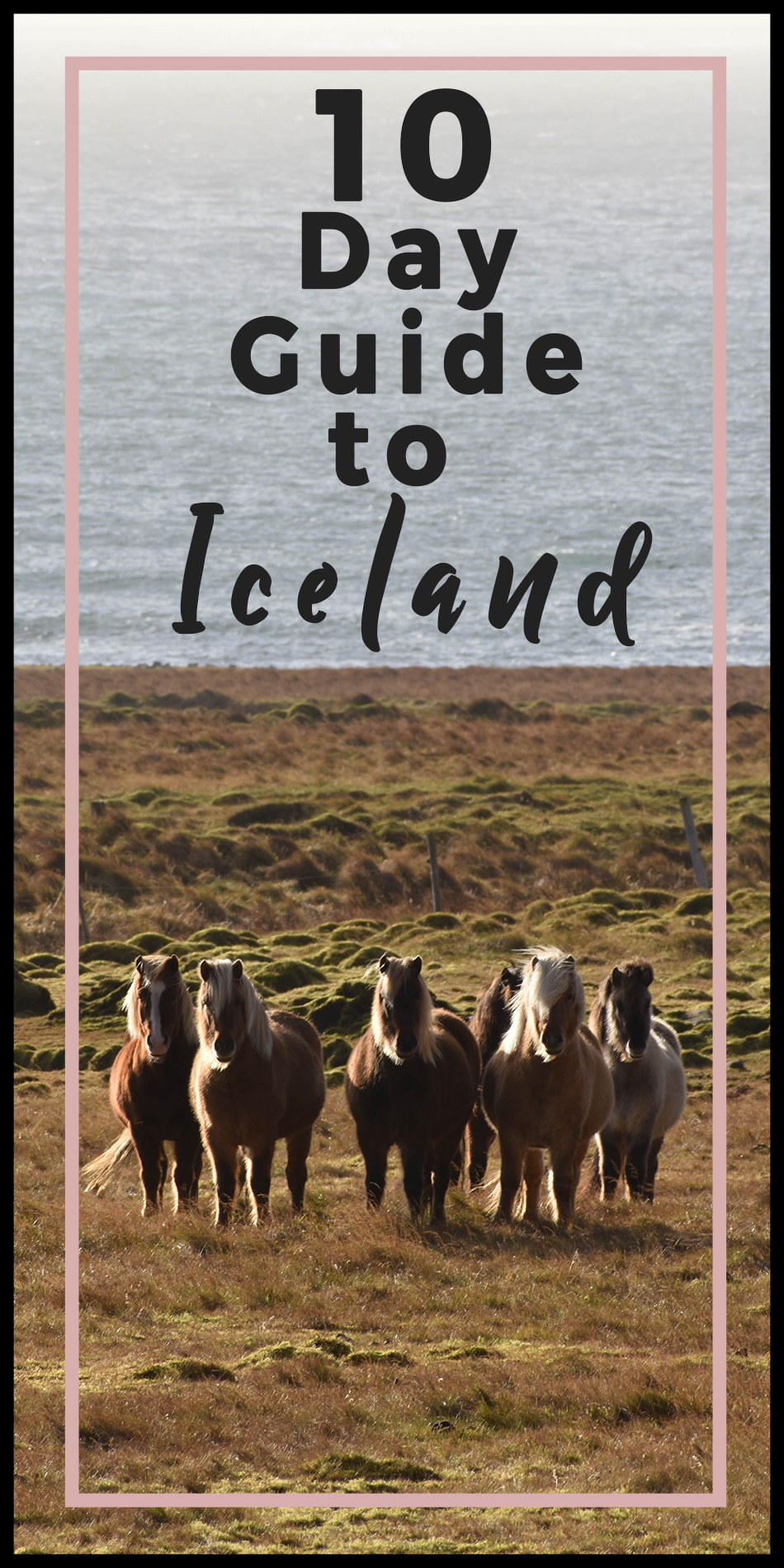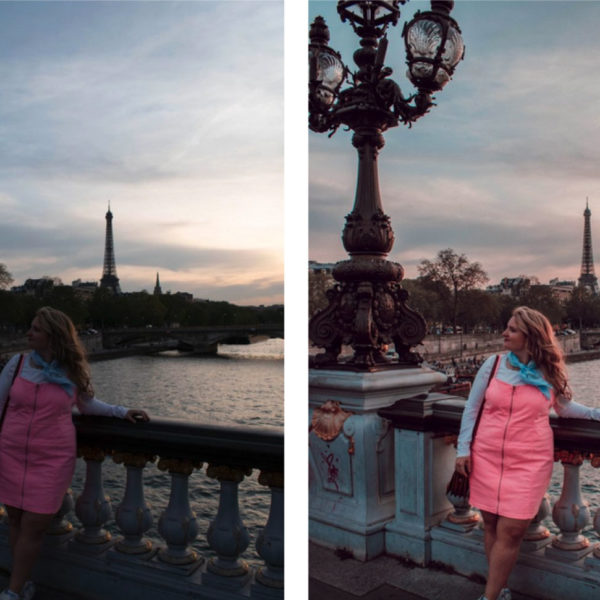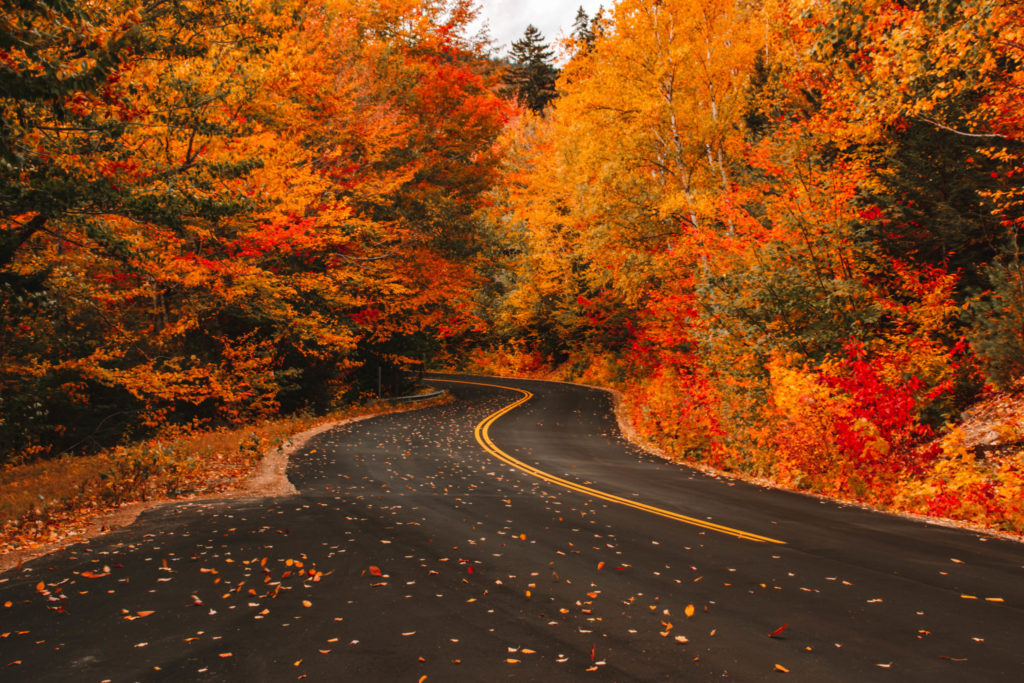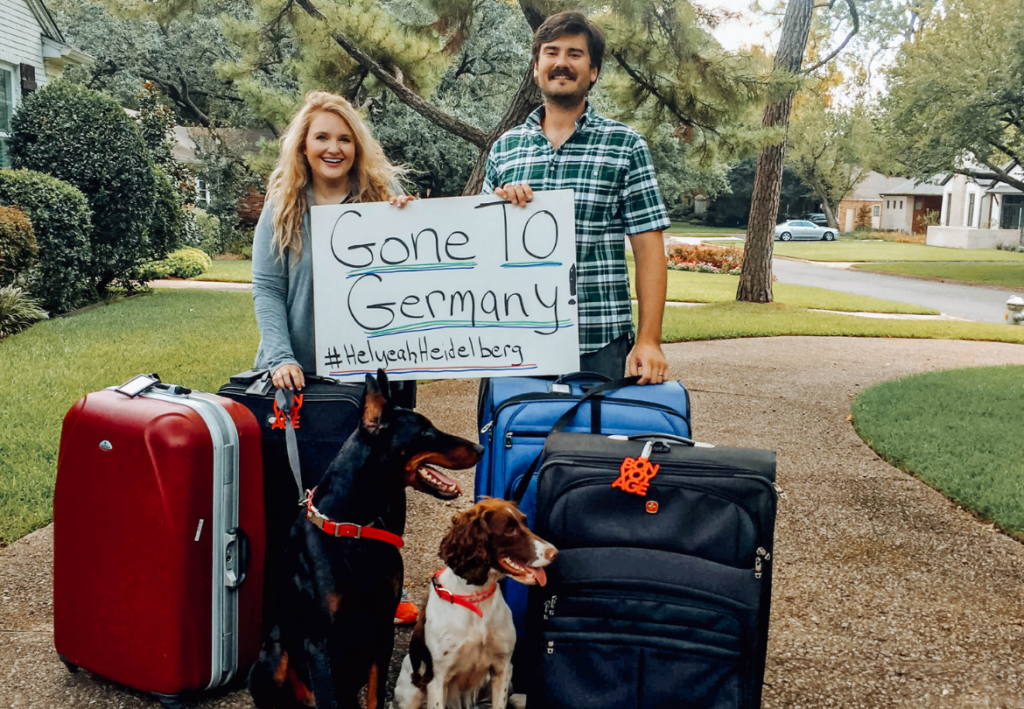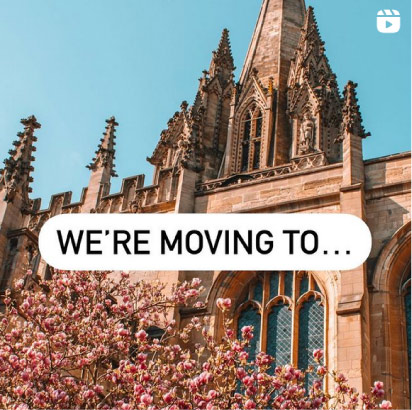I gripped tight the arm rest of the passenger seat as we slowly curved around the icy roads of a mountain pass. “Do we really need to see this waterfall?” I asked timidly. Michael answered, “Relax! We’re almost there.” We turned a corner and I saw a stunning waterfall in all it's glory, with a small rainbow peeking over the top. It was definitely worth the scare. Iceland is well worth the adventure, and this was just the beginning.
The sound of cascading waterfalls, the rugged moon-like landscape, the unending quest to see the Northern lights… we're definitely in Iceland. The absolute best way to experience this incredible country is to hit the road. Sure, seeing the capital of Reykjavik is great, but please, make sure you plan to get out and explore.
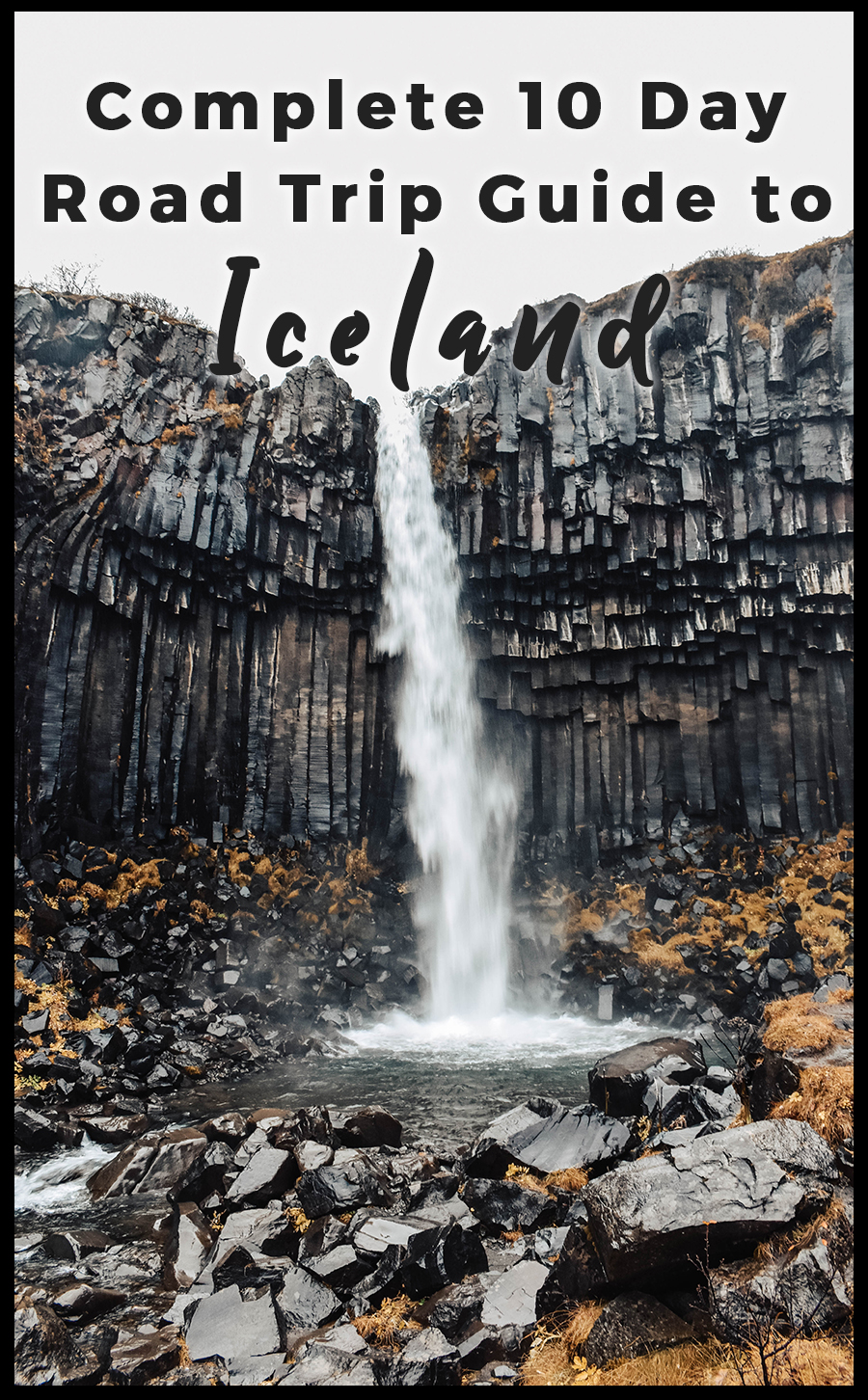
From the famous Golden circle, the Ring Road that takes you around Iceland, to the hidden spots in the west part of the island, Iceland certainly has a lot to offer. We packed up our stuff and rented a Happy Camper van to conquer Iceland's epic landscape, and you should too. This complete 10 day road trip travel guide to Iceland will give you all the insights, hidden spots, tips, and highlights you need to see when you make your way to Iceland.
[toc]
10 Day Road Trip Travel Guide to Iceland
Why Iceland?
Stunning fjords, epic waterfalls, active volcanoes, and all in a somehow peaceful scenery? Look no further than Iceland. The “Land of Fire and Ice” is known for it's many contrasts: almost no light in the winter to midnight suns in the summer. The weather changes rapidly, as the locals say, “If you don't like the weather, wait 5 minutes.” Iceland's history is rife with sagas and stories of elves, trolls, and mystical beings.
This island only has 350,000 people, the majority residing in the capital city of Reykjavik. Which means you'll have plenty of wide open spaces to lavish in Iceland's splendor. Whether you want adventure through volcanoes and glaciers or to pet the pretty and friendly Icelandic horses, you can find reason to visit. A photographer's paradise, Iceland has astounding scenes throughout the country.
Do you know what brought tourism to Iceland? It wasn't those hard to find Northern Lights or the crazy, cool waterfalls. It was actually a volcano. Back in 2010 a volcano erupted, hindering planes from entering the country and even affecting some parts of Europe. With this outburst of news, it put the global spotlight on Iceland. And the tourism board took it in stride. They started their “Inspired by Iceland” campaign and showed off all the wonders that Iceland had to offer.
Iceland is known for it's gargantuan and myriad waterfalls, friendly and photogenic horses, their thermal spas to crush the cold, and of course the Aurora Boreialis. No matter what kind of trip you're after, you can find it in Iceland.
Icelanders are a unique group of kind and generous people. Almost everyone speaks impeccable English and is willing to give you tips and tricks along the way. I found Icelanders had some incredible resources for our trip.
From the thousands of waterfalls, the epic golden light all day, and the other worldly landscape, Iceland is a place that left a deep impression on me. One I'll never forget. I know I'll be back again.
How to get around Iceland
I was pleasantly surprised by how easy it was to maneuver the roads and take on the task of seeing the highlights of Iceland in 10 days. When we started to research and ask our friends about the best way to see Iceland they all confirmed: you need a car. Iceland's landscape is vast and mysterious. There are many spots you just can't get to unless you have a car. Some of my favorite spots were those that were off the beaten path and away from the crowds. Yes, the Golden Circle is wonderful and Reykjavik is fun, but there's so much more to Iceland than the main sites.
Which is why I went with Happy Campers and cruised around the country in a van. Not only was this my accommodation for the entire trip, I also drove the whole of Iceland in this van, made most of my meals here, and found the best scenery.
Traveling in a van is the absolute best way to see all that Iceland has to offer. Let's get real: Iceland is expensive. So having the camper really helped cut costs on hotels and eating out. We made most of our meals in the van since it's equipped with running water, a small refrigerator, a hot plate, and all the utensils you need. There's also a fold-down bed, a heating system to keep you warm, GPS navigation, and adapters so you can charge your electronics.
There are unending photography opportunities. So much so, you'll want to stop whenever you can. This again makes having a camper that much more desirable. The Ring Road, which follows around Iceland is about 800 miles long. So you'll need a good chunk of time to cover it. You can see Iceland in about a week but I suggest 10 days in order to maximize what you can see.
Happy Campers was the first company ever to start offering people the option of driving around Iceland. They not only have years of experience and knowledge to offer you, it's a family run business that makes you feel at ease. The modern vehicles are extremely comfortable and easy to drive. They also are have studded tires which is important for sometimes icy roads.
We went with a Happy Campers 2 which can sleep two people and is roomy enough to make meals and eat right in the van. Happy Campers are all equipped with duvet, sheets, pillows/cases, towels, cutlery, pots and pans, gas kettle and the essentials you need in Iceland. You can also add on extras like WiFi, gas grill, and insurance. We ended up adding on all of these things and I do recommend getting some gravel insurance to ensure you're protected. Also the WiFi in the van was terrific! It was crazy to be able to get online even in the most remote parts of Iceland.
Booking your van couldn't be easier. Take a look online for the camper van options and choose the model you'd like. You then will be sent detailed information on Iceland and any preparation you need from your trip. On the day you are to get your van there is free shuttle pick up from your hotel to take you to the office. You'll check in, inspect your van, and can even pick up some food and extras from the Happy Campers stash. The best part is that the team at Happy Campers will then show you the best routes, you can ask loads of questions (like we did), get maps, and find out more about what you're about to see.
Bottom line: this is the best way to see Iceland and the best company out there. You have the freedom to see everything you want in Iceland coupled with the security and experience from Happy Campers. It's truly the best of both worlds.
Our Route
Below you can find a map of all the places discussed in this post:
We drove counter-clockwise around Iceland's Ring Road, aka Route 1, starting with the Golden Circle and ending in Reykjavik. You'll fly into Reykjavik and it's easy to make your way from there. We decided to start traveling immediately, then spend our last day in the capital city. I'm really glad we did it this way because I wanted to ensure we had time to see Iceland's landscape rather than the city. If you need a place to stay before you pick up your camper van or after the airport I suggest Bernhardt Guest House. It's very close to the airport and very well priced.
Day 1 – Golden Circle
The Golden circle is arguably the most touristic thing to do in Iceland, it's near Reykjavik and it encompasses beautiful scenery, plus Iceland's unique history. Here you will have to pay for parking at the national parks. I suggest parking then buying the pass. There is nothing to display, they take a picture of your license plate and know if you paid or not based on the automated system.
We kicked things off at Þingvellir National Park. This UNESCO world heritage site is where Iceland itself started. It's where the oldest parliament in the world formed in the year 930. It also happens to be where two tectonic plates meet and create a rift valley. You can even scuba dive between the tectonic plates in Silfra Fissure to see the crystal clear water. You can also follow the boardwalk path to get a better view. In the middle Ages, people were put to death here by drowning, including those believed to be involved with witchcraft. You'll learn more about that as you continue your journey.
From here you can head to Strokkur Geysir which explodes with water every 5-10 minutes. We parked, then took a short walk over to the 1,000 year old Geysir. But on the way you'll see the ground is sizzling with steam. It's an incredible site to see and witnessing the Geysir erupt is spectacular. We watched it at least three times. You'll also find a great shop nearby to find a beautiful Icelandic wool sweater.
Round up the Golden Circle by seeing Gullfoss waterfall, one of the largest in Iceland. As you walk down you'll hear the rushing water and feel the mist on your face. What I love about Iceland is just how accessible everything is. You don't have to hike miles to get a glimpse of the falls!
Day 2 – The South Coast
The beauty of Iceland is that you can go virtually anywhere and it's exceedingly lovely. We meandered our way down a road and found a small brook with a bridge running over it. All around us were golden wheat fields and sloping mountains. In the distance was a bright red house that brightened up the landscape. It truly felt like a scene from a painting.
The south of Iceland is characterized by great waterfalls and islands that are close by. First we went to Seljalandfoss which is a huge waterfall you can even walk around! Make sure to pack some clothes that can get a bit wet as the falls are worth getting close to, so you'll get some spray from the crashing water. About a ten-minute hike from here is the waterfall Gljúfrabúi which is also lovely.
It was so windy that the ferry wasn't running to the Westman Islands but if I were to come back I'd love to check those out. They are said to have a huge population of puffins! To go to the Westman Islands you'll need to take a ferry at Landeyjahöfn. Since it was too windy we walked the beach for a bit and were amazed at the black sand contrasting with the crashing white waves.
The Southern most point of Iceland is Dyrhólaey islandey with the Lighthouse atop. Make sure to drive up the hill (road 218 from the main road #1) so you can get a glimpse of the view. From here you can see Dyrhólaey island which is known as the “arch with the hole”. This resulted because of an underwater volcanic eruption. It was extremely windy up here but it made for breathtaking views of the sea below.
From here it's a quick drive to Skógafoss which is a beautiful waterfall and one of the biggest and most recognizable in all of Iceland. This is a great place for pictures!
If you're interested in seeing the DC Plane Wreck you'll have to hike 45 minutes each way to get there. I know you can take interesting pictures in the area, but we skipped it to see more of the nature.
If you have time you can make your way on to activities I listed out on Day 3 or you can also go on a glacier hike or ice cave tour. We opted not to do this because of a knee injury but understand this might be on your bucket list. Here are some resources on booking a glacier hike.
Vik is the southern most town and is a great place to stop for a bite to eat. We only ate out a handful of times but I loved our stop in Vik. We had soup served in a bread bowl at The Soup Company. This is also right by the Icelandic Lava Show which is the ONLY show in the world where you can see molten lava and what a volcano eruption looks like.
Day 3 – Basalt Columns at Reynisfjara
The stunning black sand beach of Reynisfjara– aka Reynir’s Pillars is characterized by three basalt columns that stand off the coast like lurkers. Legend is that two trolls tried to drag the remnants of a 3 masted ship back to shore and got caught. But when the sun came up their bodies were turned into stone from the sun's rays. Lonely Planet called this the best beach in the world!
Be careful here! There are “sneaker” waves that will suddenly come and crash on you without warning. Once you're in the water you have 15 minutes to survive. But it is worth it to check out this beach and the striking columnar basalt formations. These formed when magma cools slowly and cracks into hexagonal columns.
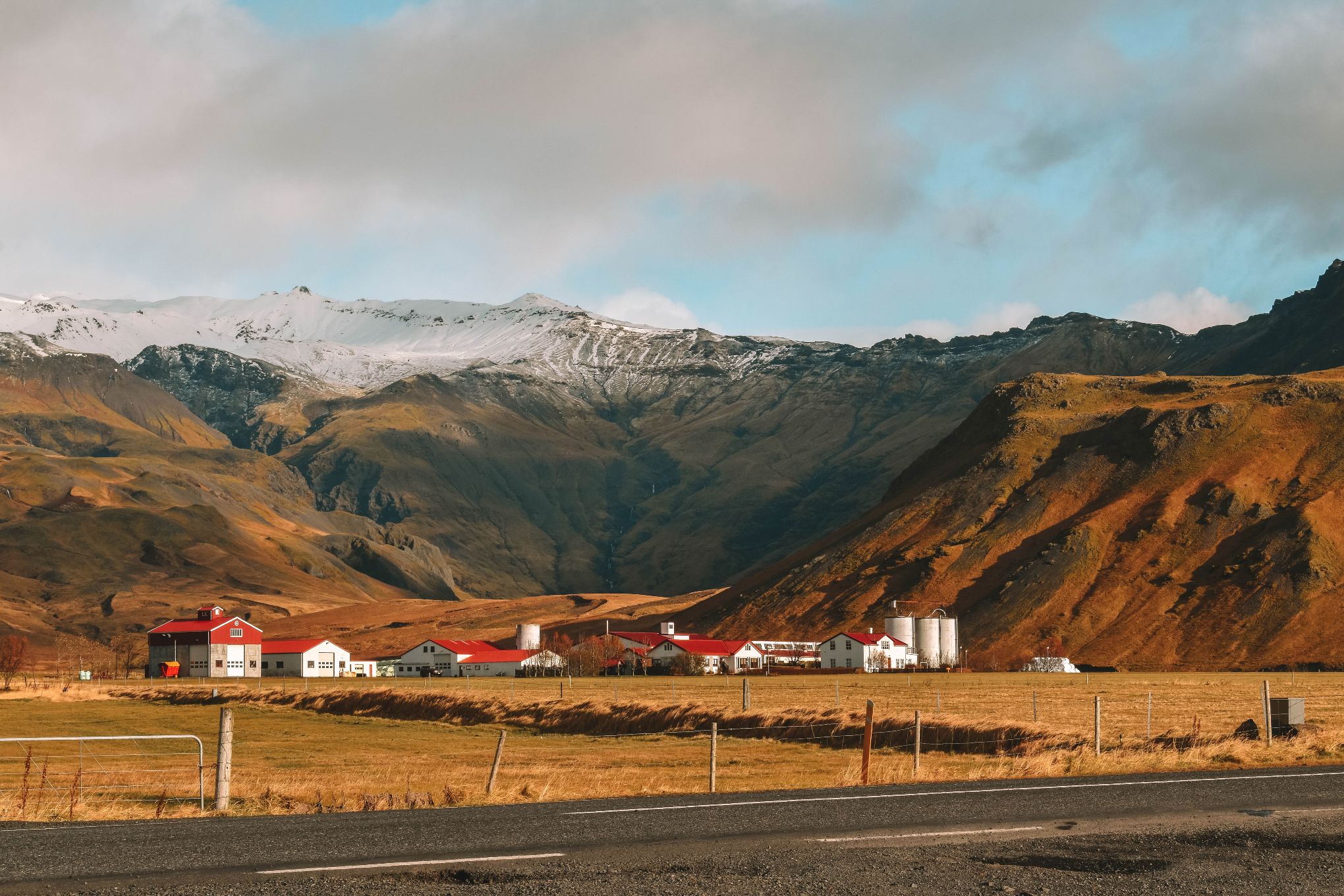
Day 4 – Svartifoss, Fjallsarlon & Hot Pots
We were up and at 'em for a hike to Svartifoss, a waterfall characterized by more basalt columns. I actually liked the waterfalls we could see along the way since they were extremely accessible. You can even walk right up to the edge of some of these monumental waterfalls. Just be careful not to slip!
From here we went to the crazy cool glacier lagoon, Fjallsarlon. The wind was whipping mightily and the bitter cold bit through our warmest jackets, but it was worth it to see the floating icebergs that were so cold their color was aqua. Some have zebra like stripes which comes from the ash from volcanic eruptions.
Next we went to the larger glacier lagoon, Jökulsárlón. This is also known as Diamond beach. Dotted along the black beach are ice sculptures making their way out to sea.
After getting chilly to the bone it was time for a warm up in a geothermal pool, aka a hot pot. A hot pot is a natural bath where the water is heated from the thermal springs from beneath the earth's surface. It's the absolute best way to warm up and you can find over 170 in Iceland. We found a delightful hot pot near the town of Hofn called Hoffel on Hot Pot Iceland. We had so much fun meeting fellow travelers, local residents, and chatting about the best things to do in Iceland.
Day 5 – Djupvogur & Seydisfjordur
We really enjoyed this day simply driving around and pulling off the road for a picture of an epic waterfall or pretty scene. Since we were really getting a lay of the land we enjoyed finding new hidden gems or just standing in awe at the incredible scenery.
We drove through the small port town of Djupvogur in Eastern Iceland.
Bathed in golden sunlight I saw two ponies grazing in a field in Reyðarfjörður. We decided to pull off for lunch as this spot was a perfect view of a fjord. I wanted to call the horses over just to see if they'd come. They trotted right on over and let me feed them grass and pet their furry mane.
We made our way over to Egilsstaðir to camp. But we took a short detour over to the town of Seydisfjordur in the East Fjords. You'll take a high mountain pass over that's sometimes covered in snow. It was for us, and made for a lovely scene.
Seydisfjordur is known for it's lovely multi-colored, wooden homes. There's also a rainbow colored street leading up to a beautiful blue church that stands brightly across the more muted landscape.
Tonight we tried our luck with seeing the Northern Lights. Although the radar showed lots of activity, there were far too many clouds. I'll share more information below on how you can be on the look out for the fleeting lights. But for now, the Aurora Borealis remain illusive.
We camped in Egilsstaðir for the night.
Day 6 – Diamond Circle in Northern Iceland
There's a lot of driving to make it across the east and north of Iceland. But it's full of fun scenery and wildlife to keep you entertained along the way. Plus, the light in Iceland is unlike any I've seen before. It sits low in the sky so you get this gorgeous golden light all day. Especially in the winter months. It makes it easy to stop and take pictures everywhere you go.
Dettifoss is the most powerful waterfall in all of Europe. There's a short hiking path that takes you to the waterfall. As soon as we saw the waterfall Michael recognized this as the filming location for Prometheus. It's easy to see why Iceland is the backdrop for so many other-worldly locations. It's just unlike any other place.
Driving to Mývatn we saw steam jutting up from the ground and pulled over to see what was going on. It seemed like a scene from a sci-fi movie, with the bubbling mud it looked like Mars. But then when we got out of the car, it was even more interesting; the sulfur smell was very powerful. This is Namafjall Hverir is a geothermal area where you can get close to the boiling mudpots and fumaroles.
From here you can drive into Mývatn and on your way you'll see a bright blue pool reminiscent of the Blue Lagoon. There's a nice pool here called the Mývatn Nature Baths that's about half the price of the Blue Lagoon. Mývatn has many hot springs since it's located on the North American and Eurasian plate. These plates drift apart two centimeters every year and then fill with lava.
There's a lot to do near Mývatn, so make sure to leave some time here. Some things to do in and around Mývatn are: Hverfjall is a volcano crater made up of loose gravel with a really beautiful view of the city. There's also the Krafla Power Plant shows how Iceland is leading in producing geothermal energy by using nature to power homes. You can take a tour here to see how it works.
You can also take a short drive to Viti crater. Walk up to the top of the crater to see the cerulean pool of water that erupted in 1724. Then hike over to the post-apocalyptic Leirhnjúku. This geothermal area is full of bright blue, milky pools of water flanked with lunar-like brown earth.
As you drive through here take a look at the striking rock formations and magma created by the active volcano.
We hiked around Dimmuborgir which is a desolate looking area full of lava formations created 2300 years ago. Legend says that Satan was sent here from the heavens when he created “the Catacombs of Hell.”
Our day was so full we didn’t make it to Góðafoss until nightfall making photography challenging, but the experience of the giant waterfall even more powerful.
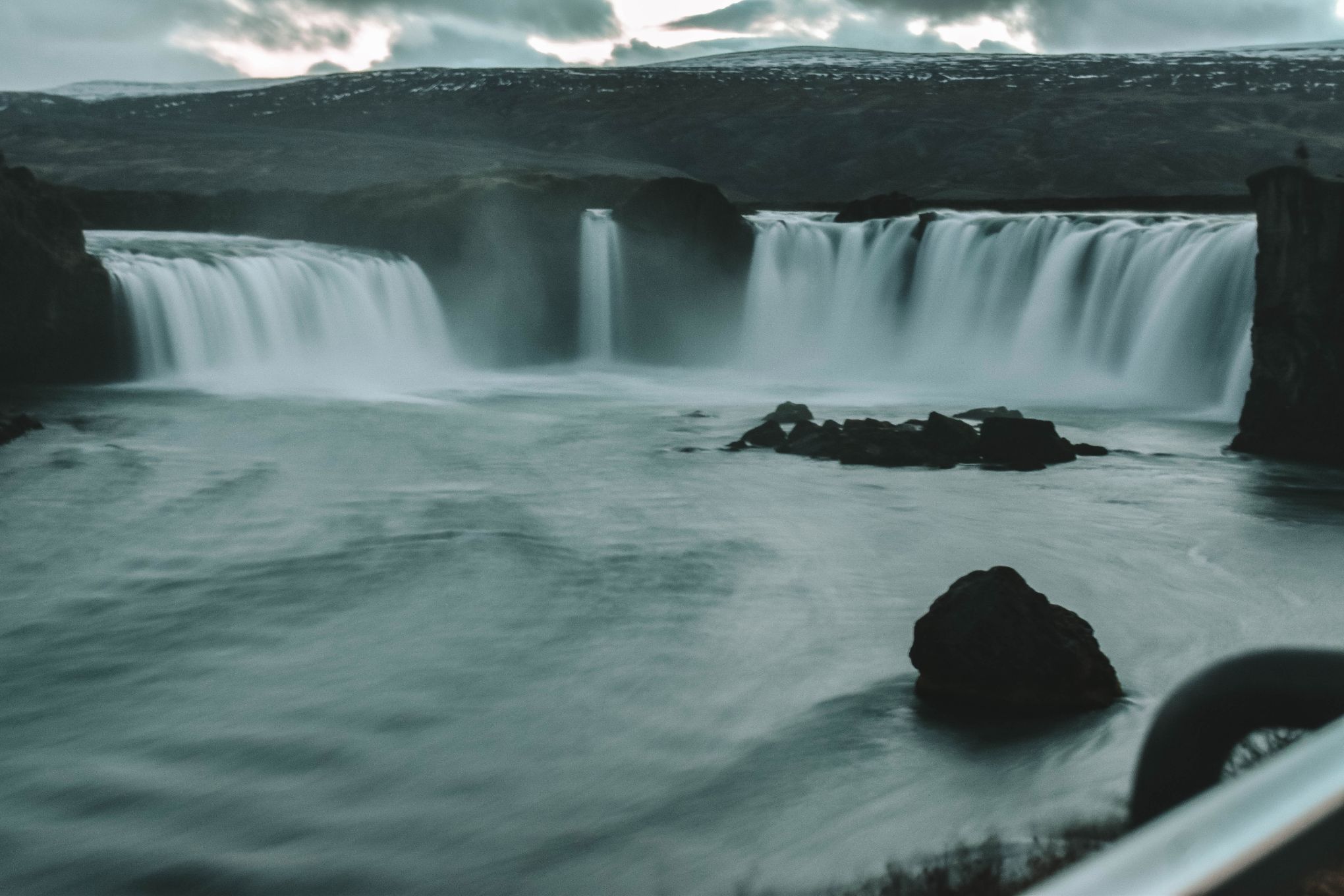
Day 7 – Akureyri & Blönduos
The horses aren't the only striking animals in Iceland. The sheep are everywhere in Iceland and have white or black fur. But the black fur is so striking, and is the darkest I've ever seen. They are often on the road or just off to the side grazing on grass.
Next on our route was the unofficial capital of the north, Akureyri, the largest town besides Reykjavik. This is the perfect place to stop for the night or have lunch and walk around the town. Make sure to look out for the stoplights shaped like hearts! We dined on fish and chips at the aptly named Akureyri Fish & Chips. We did our own walking tour of the town and popped into a few of the shops selling handmade Icelandic wool.
Akureyri Fish and Chips isn't just known for its namesake, they also have “Plokkari” which is a traditional Icelandic dish of cod and potatoes in a casserole dish. Very good!
Driving through Skagafjordur you might notice the increase of horses everywhere. That's because this is a place for horse breeding. Horses are still heavily used in Iceland and many people take tours with horses. So you'll see these beautiful creatures as you drive along.
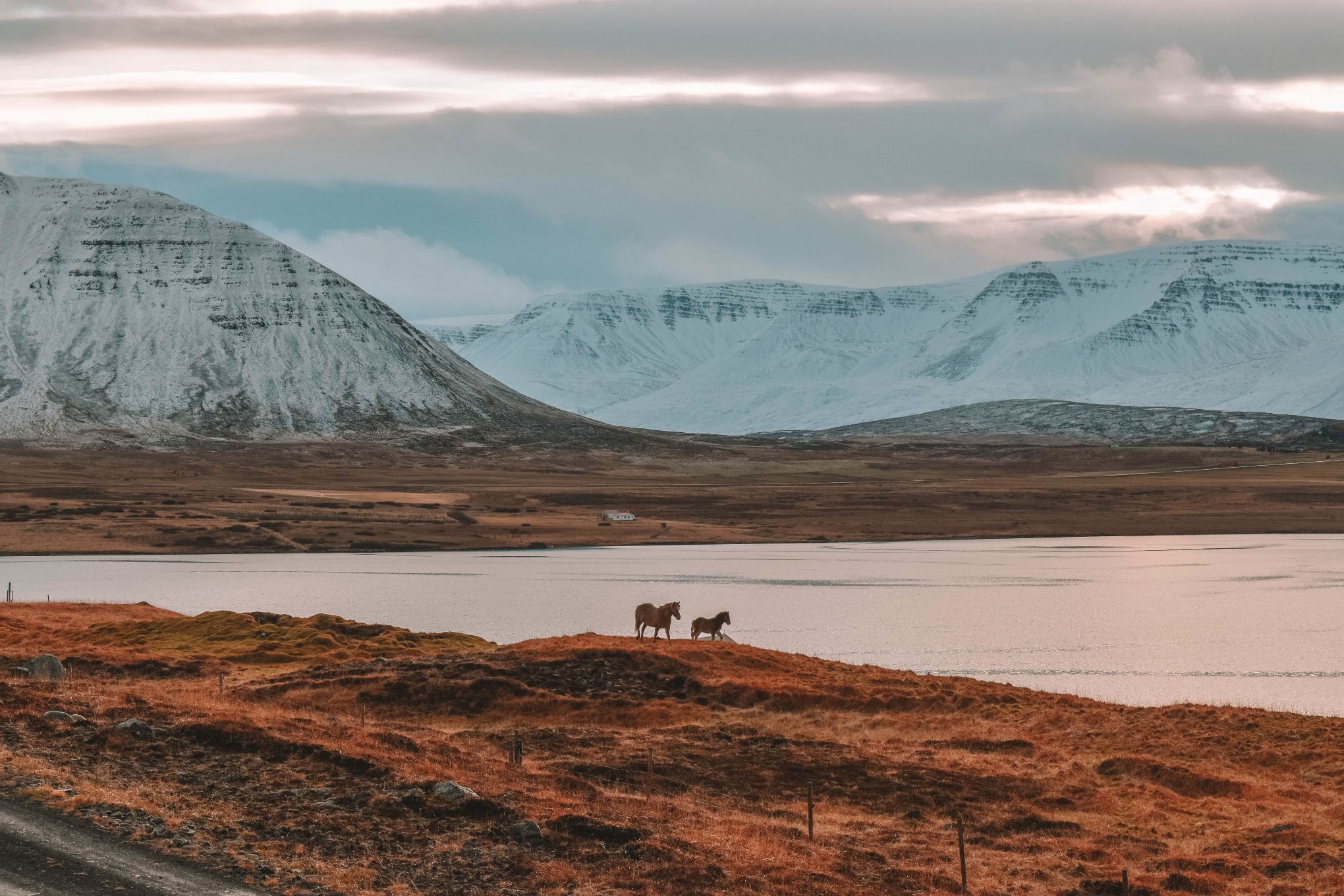
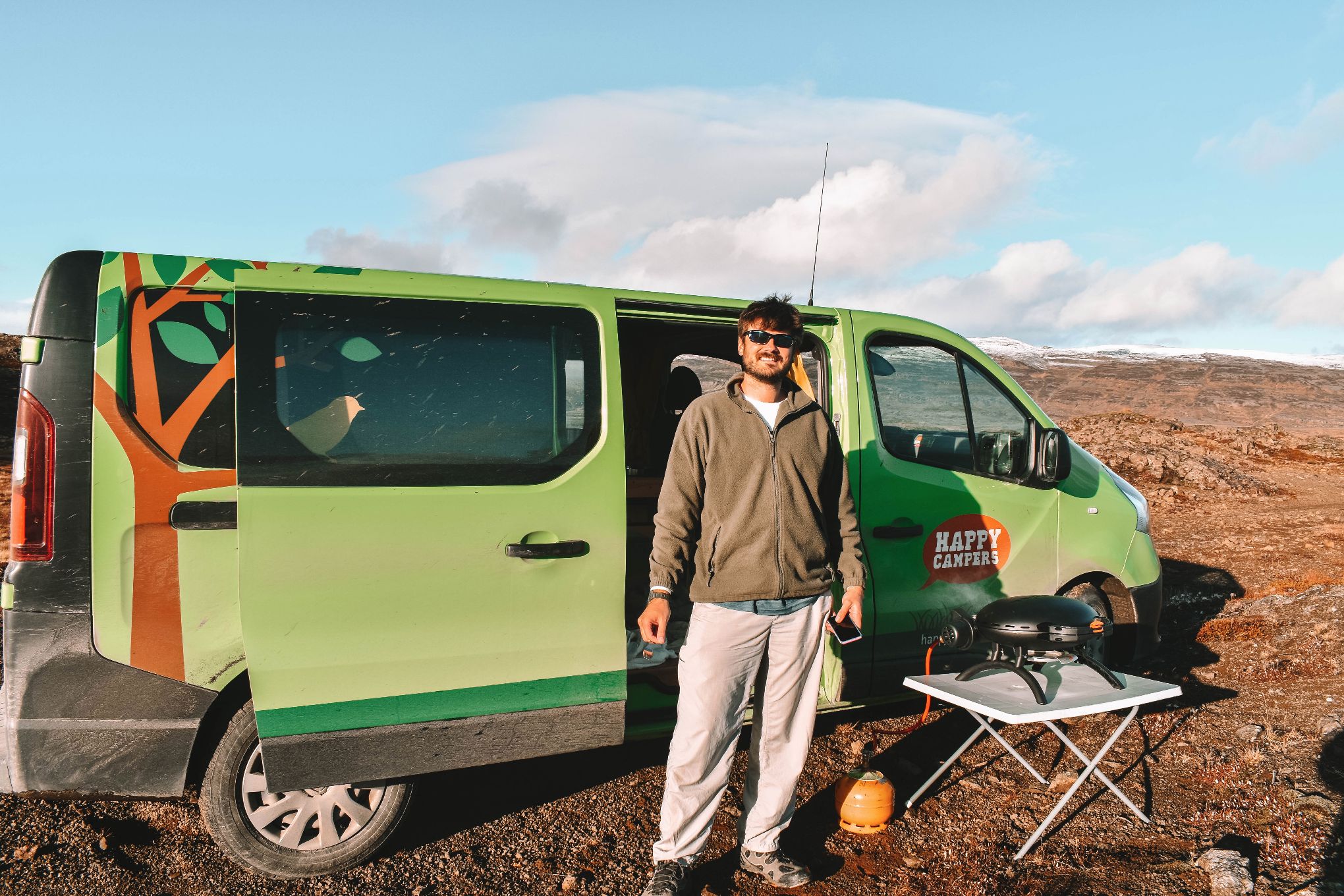
Day 8 – West Fjords Holmavik, Drangsnes, & Isafjodur
On our drive to the West Fjords I noticed a seal floating in the water. I gasped so loudly Michael nearly swerved the car. For the next hour I kept squinting out the window, hoping I'd see another. No luck. But then, we turned down a bridge and there were seals everywhere! From then on we couldn't stop seeing the odd creatures bathing in the sunlight. I’m always enthralled with animals in the wild. I feel like I get a little glimpse into their magical world.
After our fill of seal spotting, we headed to Hólmavík for the Museum of Icelandic Sorcery and Witchcraft. This interesting museum details the practices and punishments of those that used any means necessary to try and make a life for themselves. It was both shocking and interesting how often someone named Helga blamed any unfortunate incident in her life on someone's use of sorcery.
From here we went to my favorite hot pot: Drangsnes. This small town has a free natural pool right along the shoreline. This is the perfect setting to warm up. All they ask for are donations. Be aware: your silver jewelry will tarnish in the water so make sure to remove it before you get in the water.
After our visit at the Museum of Witchcraft, we learned of the Sorcerer's Cottage. Located in the remote Strandir area you can drive over to this cottage which is a look at how people used to live. Which is very simply. The turf-roofed and cramped living spaces would be tough to live in, especially during winter.
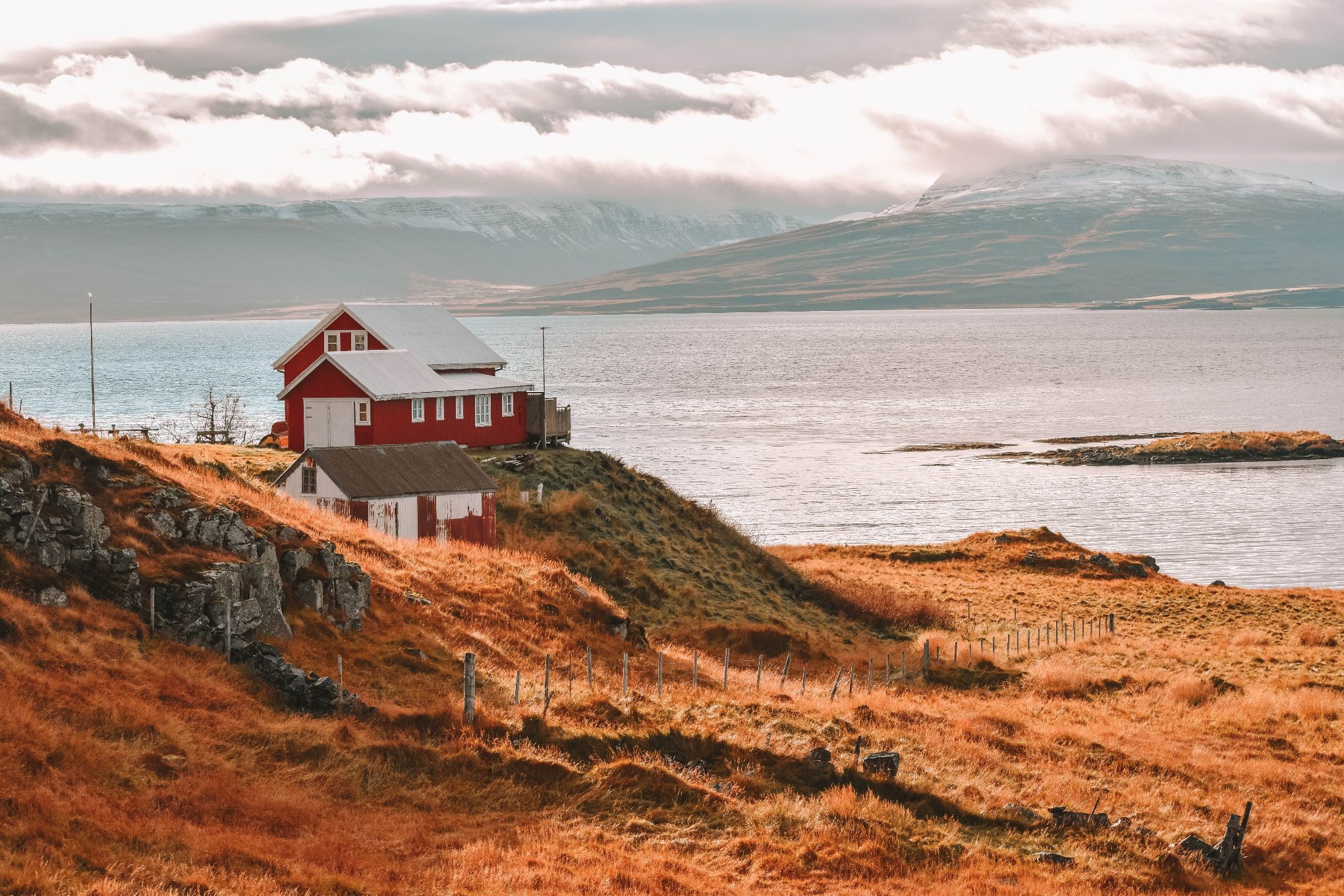
Day 9 – Dynjandi and Icelandic History

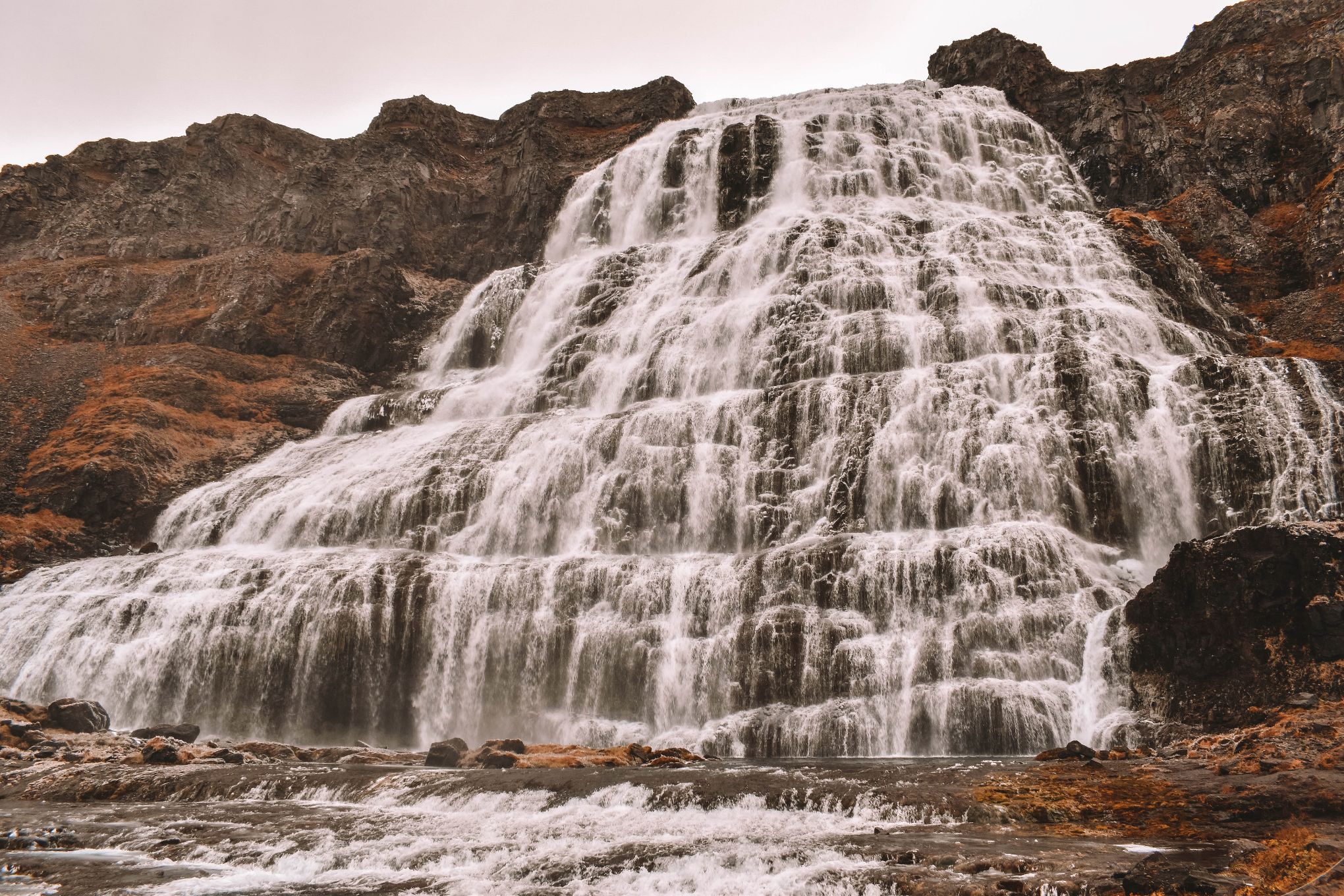
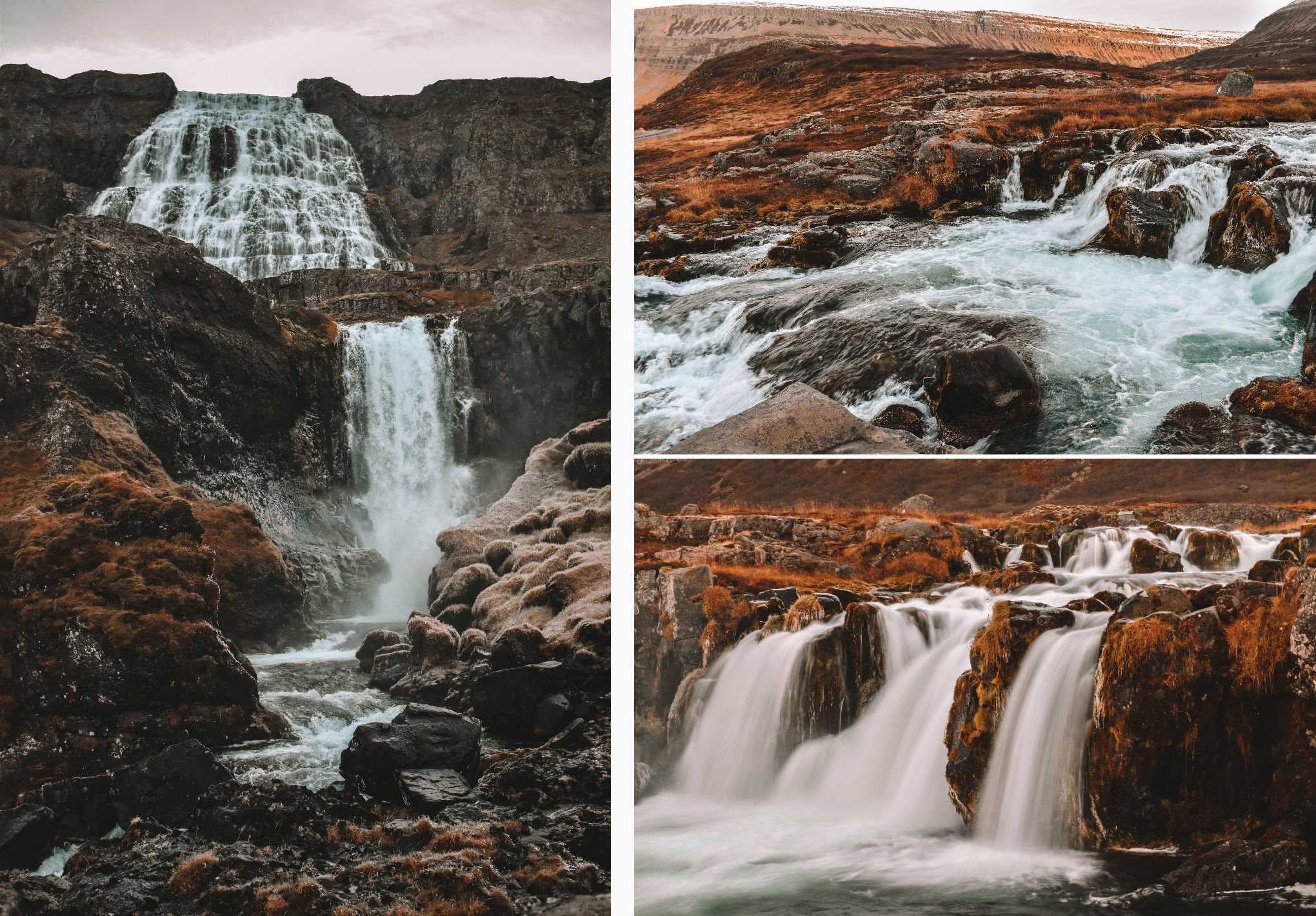
We are making the journey south to head back towards Reykjavik now, but first we stopped at Grabrok Crater. This is conveniently right on the Ring Road and is a short hike on a wooden bridge. You can stand on top of the rim of the volcanic crater and peer out over the lava field as sheep graze nearby.
Day 10 – Reykjavik & Blue Lagoon
It's our last day so we'll spend it in style in Reykjavik. It's back to civilization and Iceland's only “real” city. I recommend taking a walking tour to get a lay of the land and hear the history of this fascinating city and Iceland itself. We booked with CityWalk which is a free walking tour and even lets you pay with credit card to tip at the end- so convenient.
We started at Parliament and ventured over to City Hall where you can go inside and see a layered map of Iceland's geology and learn some fun facts about Iceland. Such as, 1 in 5 people in the summer will be a tourist. And 80% of Icelanders will go abroad each year.
Other spots to visit are Laugavegur which is the oldest and largest shopping street of Iceland. Check out Harpa concert hall which has design elements of the basalt columns, fish scales and the Northern Lights. Go inside to the 5th floor for beautiful views of the sea and the city.
There is also Hallgrimskirkja, the tall, iconic church of Reykjavik.
I also recommend taking a walk around to see the brightly colored houses of the neighborhoods. There's a reason for that. This is for depression therapy since it gets so dark in the winter. Icelanders even have added Vitamin D to their milk to combat the feelings of sadness during the long, dark days of winter.
For lunch we had a fabulous meal at Messinn, recommended to us by my friend and now local Icelander, Kaelene of Unlocking Kiki, she has many detailed guides for things to do in Iceland. Messinn is cozy but elegant and we ate Icelandic char cooked in honey glaze along with fish soup. This might be one of my favorite meals this year- it was divine!
We wrapped up our trip by visiting the Blue Lagoon, but take heed! The Blue Lagoon is extremely expensive. Starting around 65 euros to take a dip into the milky blue geothermal spa seems excessive. The reason why? Because it can be. It's very close to the Keflavik International airport so for those taking short trips (or those that don't know about Hot Pot Iceland) they choose to go here and overpay. While the water is cool and worth it to take a look around, you can actually go for FREE. You can walk the grounds and take pictures without paying a cent! Luckily my friend Christine of Live Love Run Travel warned me of this!
I took a look at the Blue Lagoon and while it is pretty, it's simply not worth it for the price. I believe the free part was actually much cooler! My suggestion is to save your money and find a cheaper hot pot and a more relaxing experience. If you do want to go make sure you book in advance, it can sell out for weeks.
After this we dropped off our van and headed to the airport to wave goodbye to Iceland!
Extra time – Snæfellsnes peninsula
I suggest adding the western part of Iceland if you have extra time. Take a visit over to Snæfellsnes peninsula which you might recognize from the Secret Life of Walter Mitty. It's also hailed as “Iceland in Minature” since you can get a glimpse of lots of nature here. The Snaefellsjokull National Park is at the westernmost part of the peninsula, and has striking scenes. The Lóndrangar, a landmark volcanic towers perched on a cliff or Snæfellsjökull is a 700,000-year-old glacier-capped stratovolcano. There's also Gerðuberg cliffs are basalt columns that reach 14 meters high and create a magnificent wall, and the iconic black Búðir church makes for a stark contrast to the green landscape. The most well known and photographed location is Kirkjufell or the “church Mountain”. It rises up out of the plain and juts out to the sea. To add to the beauty there's a waterfall just right by so it's the perfect place to stop.
Tips and Resources for the Perfect Iceland Trip
The great thing about traveling Iceland is the number of resources that will help you on your journey. Below I'll list out some very handy websites for your trip. Whether you need help navigating the roads, checking weather conditions, or finding a hot pot, aka a swimming hole, then this list will have you covered.
Hot Pot Iceland – One of the best experiences you can have is dipping into a warm hot tub after a chilly day. We did so many times and found this website to have the best options.
Northern Lights Live Map – If you're very lucky, you'll get to see the Northern Lights. Verdur is the best website out there. It explains what you're looking for but basically you need light cloud coverage and a heavy chance of aurora activity. Make sure that when you use this map to look at cloud cover for all sections. The first tab is for low and middle clouds but we spent a couple hours trying to see the lights after realizing there was a separate tab for high clouds. No where on the website does it remind you to look at that!
There are not many large towns in Iceland. Reykajavik is by far the largest, then Akureyi after that. That means you will have long stretches without other people or groceries. I love this aspect. But I do think you should be prepared with some food in case you get hungry.
Follow the rules. I'm not a big rule follower, but it's so important to follow the rules and laws in Iceland. Otherwise, you can severely damage the landscape. Keep to the well marked paths, not only for your safety, but to ensure we don't destroy the natural beauty of Iceland. Iceland has had such a boom of tourist it's essential to follow the rules. Don't fly your drone if a sign says not to, don't take paths you shouldn't, and respect the rules.
Some good books to help you on your journey are Lonely Planet's Iceland Ring Road and Rick Steves Iceland. But truly the most helpful was “What, Where, and How in Iceland” which is by a local and details everything you need to know about the country, destinations, rules, photography, driving, and much more. It's a very comprehensive guide!
Camping In Iceland
Using a camper van in Iceland is the best way to see the country. Happy Campers is my personal pick and the resources and safety features they offer are unparalleled. You also have the benefit of a place to eat, cook, sleep, and drive no matter where you go.
Where to camp
It used to be that you could pull off the side of the road and camp anywhere. That's no longer the case. However, there are campsites all over Iceland. In the winter not quite as many are open, so I do suggest checking to make sure there is one on your route. Most of the time you do not need to call ahead of time to call and book your spot. You do have to pay, usually per person, for the use of the campsite. This can range but is normally about $10-$20 per person.
Campsites – Happy Campers gives a great idea of winter only camp sites (in case you're going that time of year) or you can find both winter and summer sites here.
Bathrooms and Showers
Because you're staying in a campsite you'll have access to hot, running water in all the campsites. I found the campsites to be extremely nice. Some are better than others, but most have full kitchens, indoor showers, running water, separate men and women's bathrooms and a common area to hang out. However, you can also use public swimming pools to shower since they have showers nearby the pools. You will find pools all over Iceland, just look for the brown signs.
Water
You can drink water anywhere in Iceland. It's delicious and cold wherever you go. We found it easy to fill up our water at gas stations or campsites along the way. Happy Campers comes equipped with a sink and running water so it makes it easy to stay hydrated.
14% of Iceland's landmass is covered in lakes and glaciers so you'll never find a shortage of water.
Driving in Iceland
The Ring Road is about 830 miles long (1332 kilometers) so it will take you a good chunk of time to get around. Most people spend about 7-12 days but others can do it quickly in about 5 (if you're really just driving the whole time). The speed limit on the road is about 90 kilometers an hour (which works out to be about 55 miles an hour) and it's important to follow the speed limit. You can get a ticket for going over, even a slight amount.
Safetravel.is, road.is – These websites detail out any and all road conditions. When we were driving in the West Fjords over icy roads we even called their hotline (1777) to ensure it was safe. I was so impressed that they picked up on the first ring!
Happy Campers Safety – Happy Campers also has some detailed information on roads, weather, and more. Happy Campers also tracks your vehicle which is great in case you get stuck they can help you out.
How to save money in Iceland
Everyone warned me that Iceland was super expensive. It is, but it also doesn’t have to be. We ate out only a handful of times, we cooked in our van and we stayed in our Happy Campers van for accommodation.
You can also book extremely cheap flights with WOW air, which is always running specials.
One of the best ways to save money is by using a Happy Campers van and touring the country the way YOU want!
What to Eat in Iceland
It is expensive to eat out in Iceland. I suggest eating in as much as possible to save money. I also suggest going out for lunch as prices are much more reasonable. The SS hot dogs are the best hot dogs I’ve ever had, and Bill Clinton agrees with me. You can find hot dog stands throughout the country, but we cooked ours up in our van on the skillet from the grocery store.
Skyr is another great grocery store item and is Icelandic yogurt, or cultured dairy product. Most Icelanders add berries and milk for a breakfast meal.
Lamb is often a staple in Iceland since there are so many grazing the fields. Since they roam freely this is said to be a more high quality meat.
Iceland is truly one of my favorite trips I've taken. From the breathtaking scenery, the indescribable landscape, the kind people, and seeing it all in a van, it can't be beat. It's an unforgettable experience everyone must have at least once in their lives! I hope this comprehensive guide to Iceland will help you plan your perfect trip.
Pin the post!

